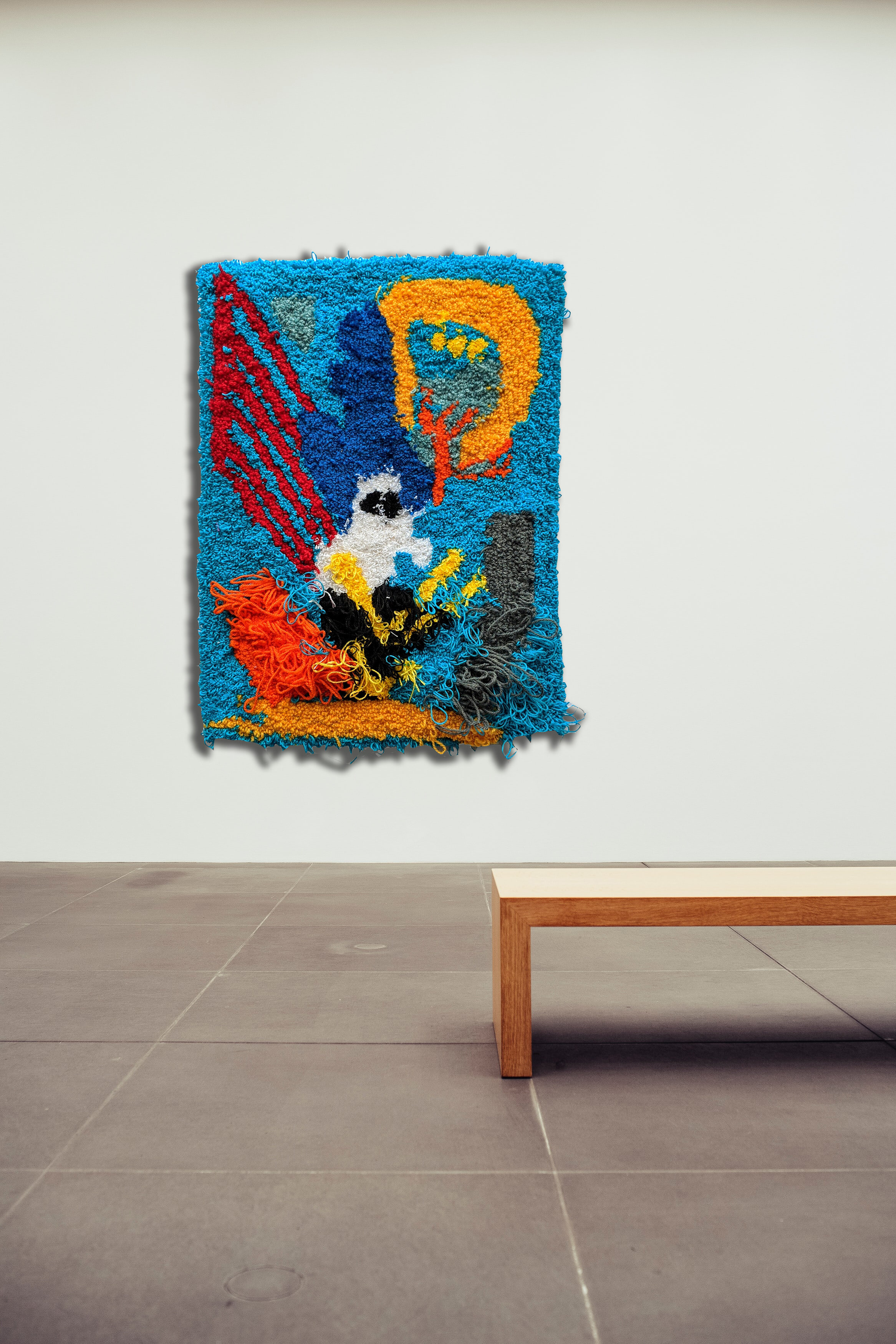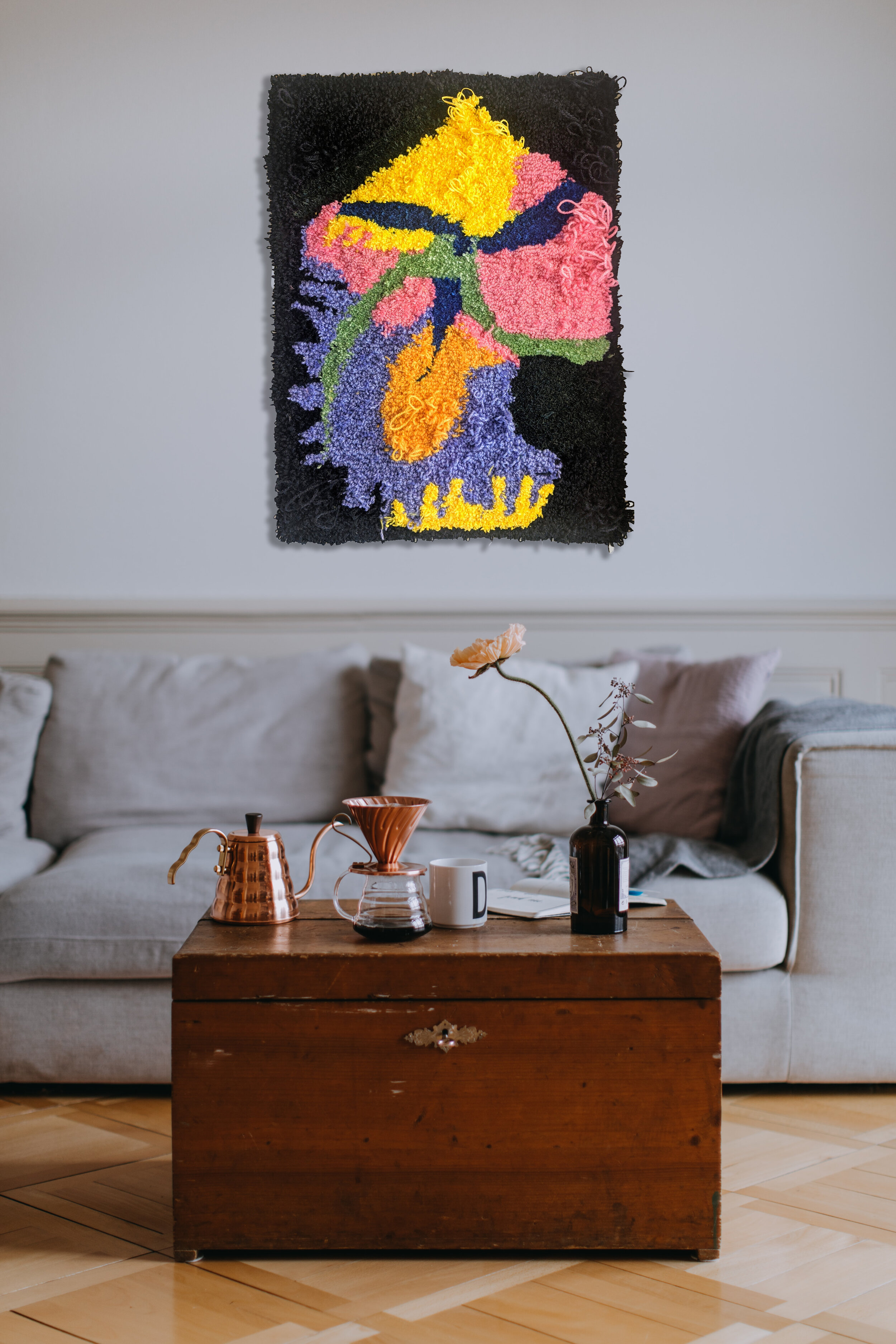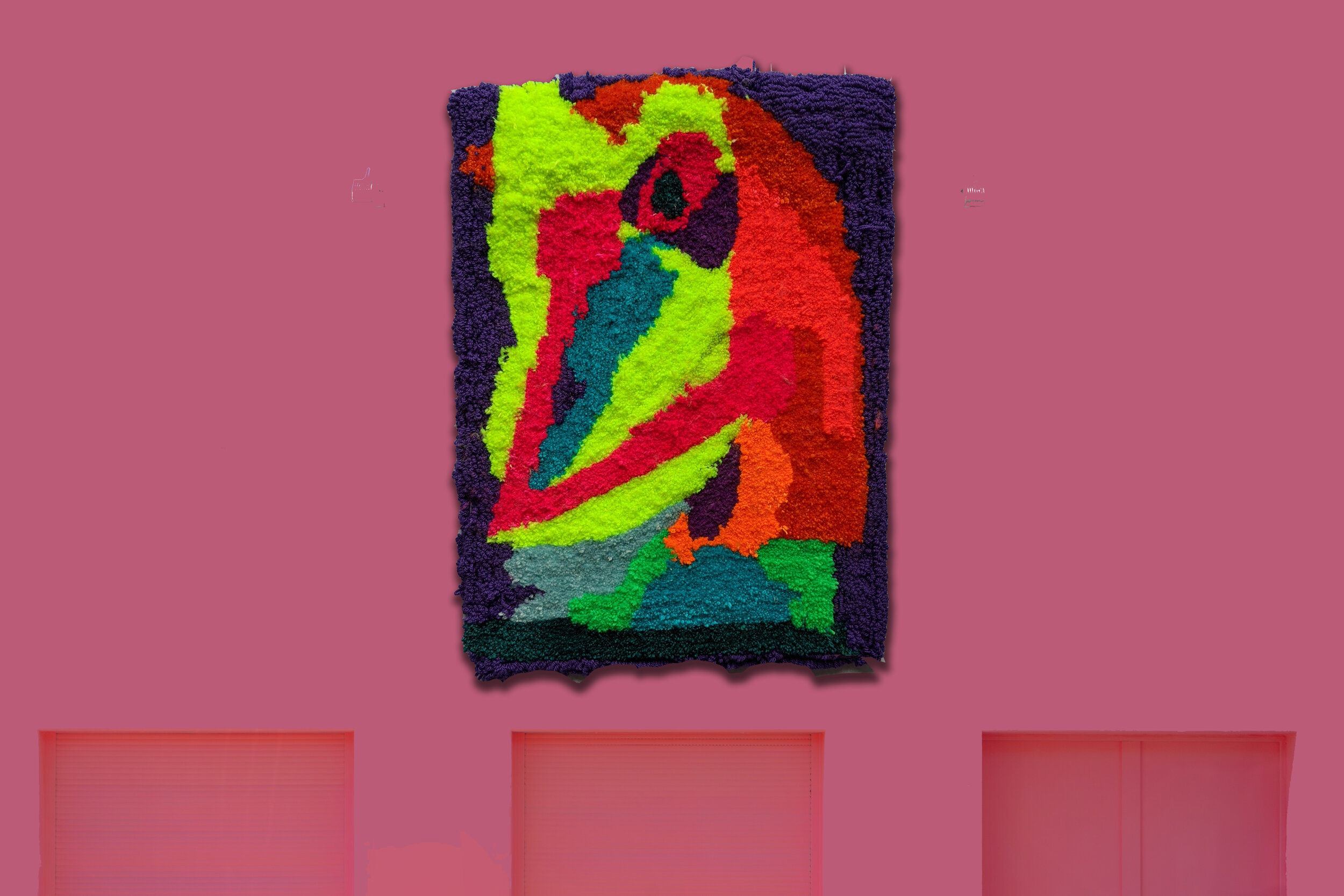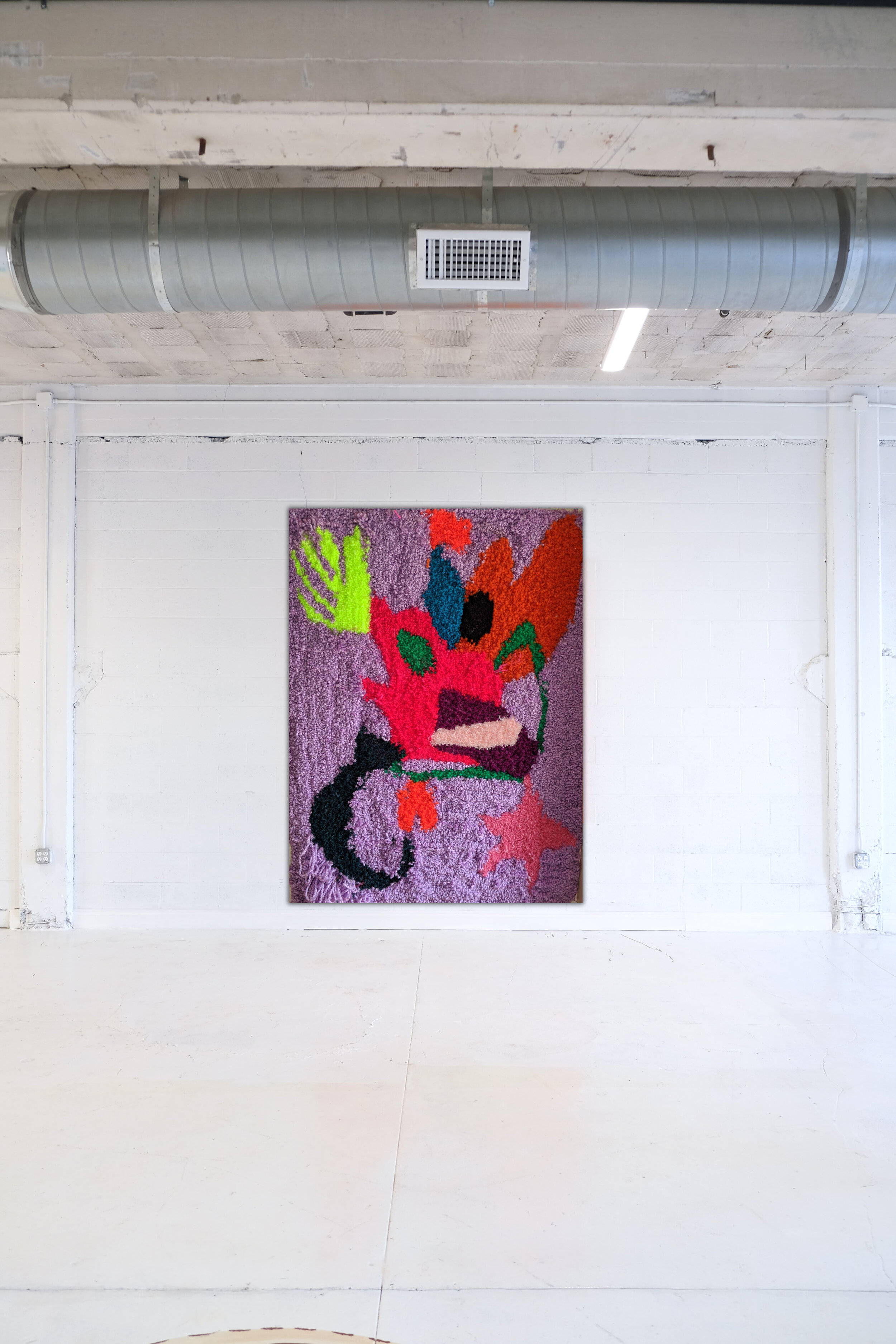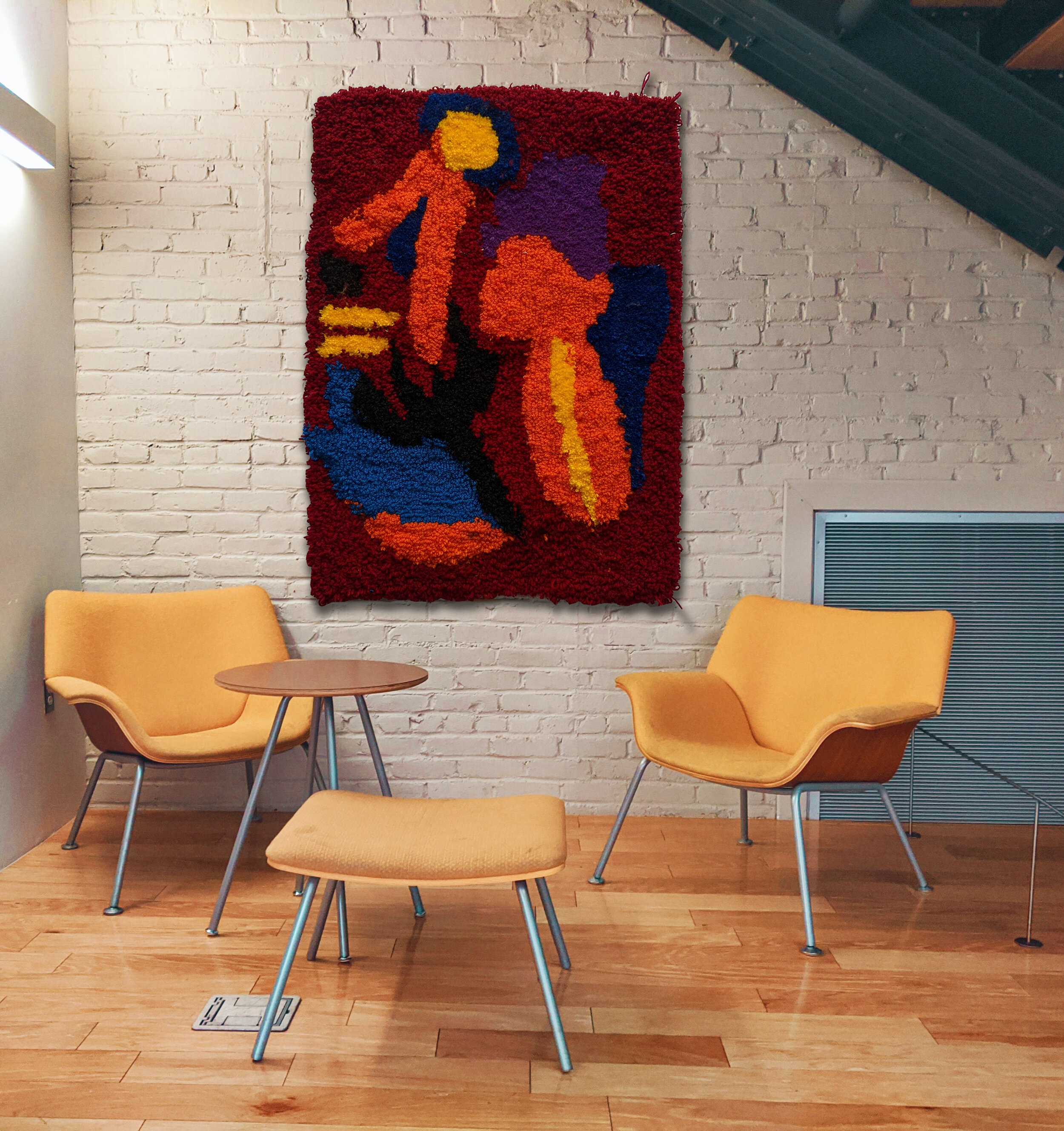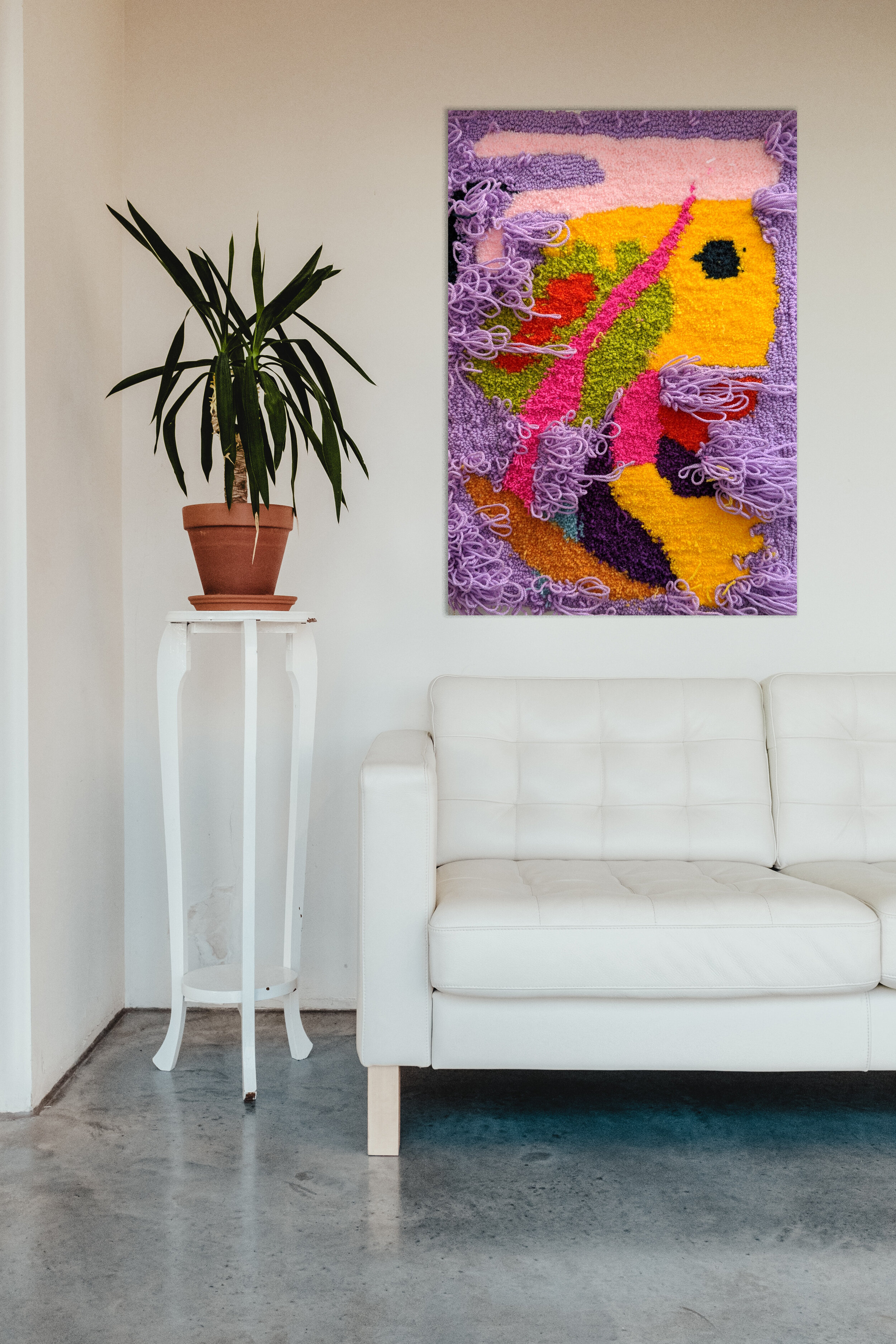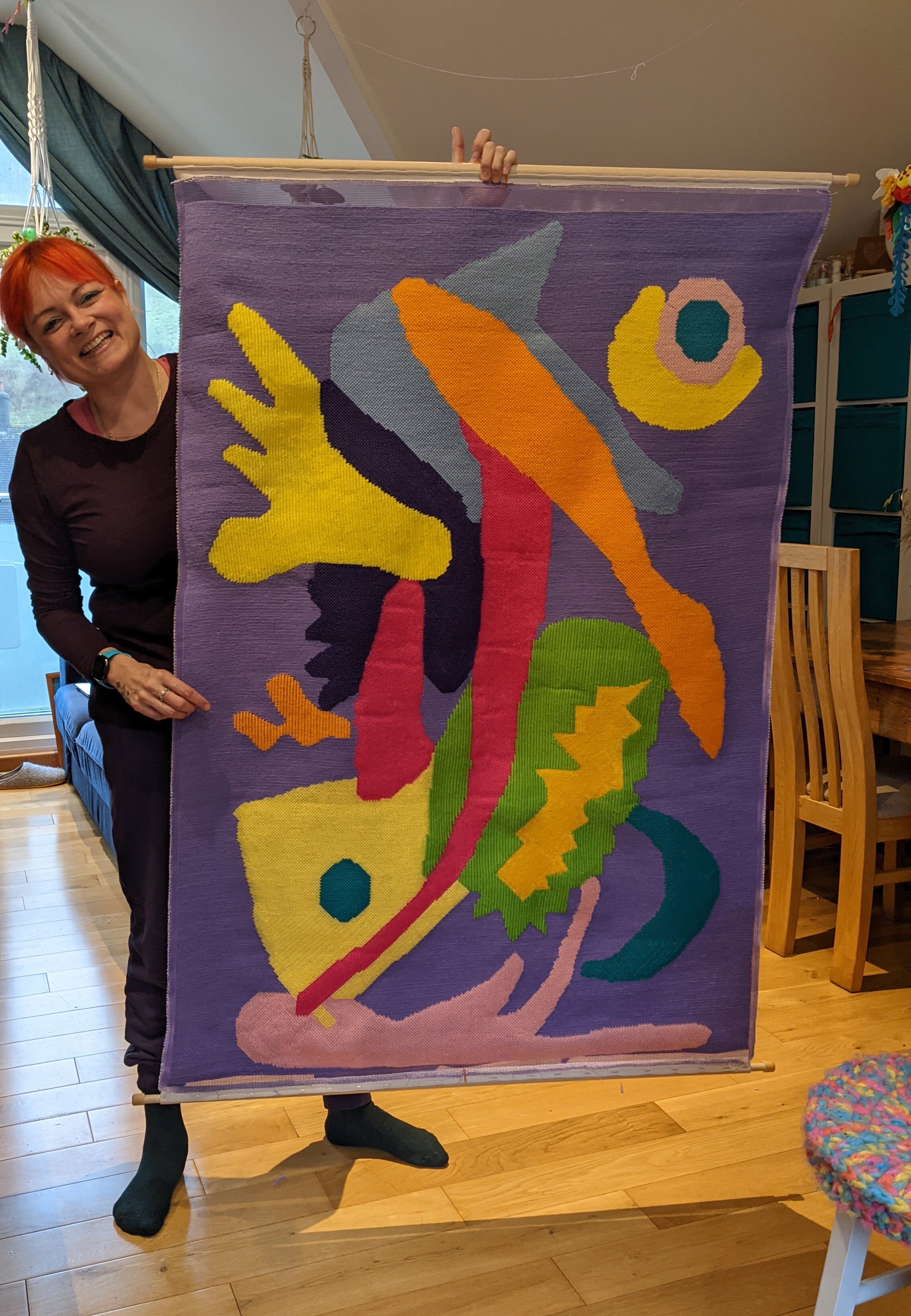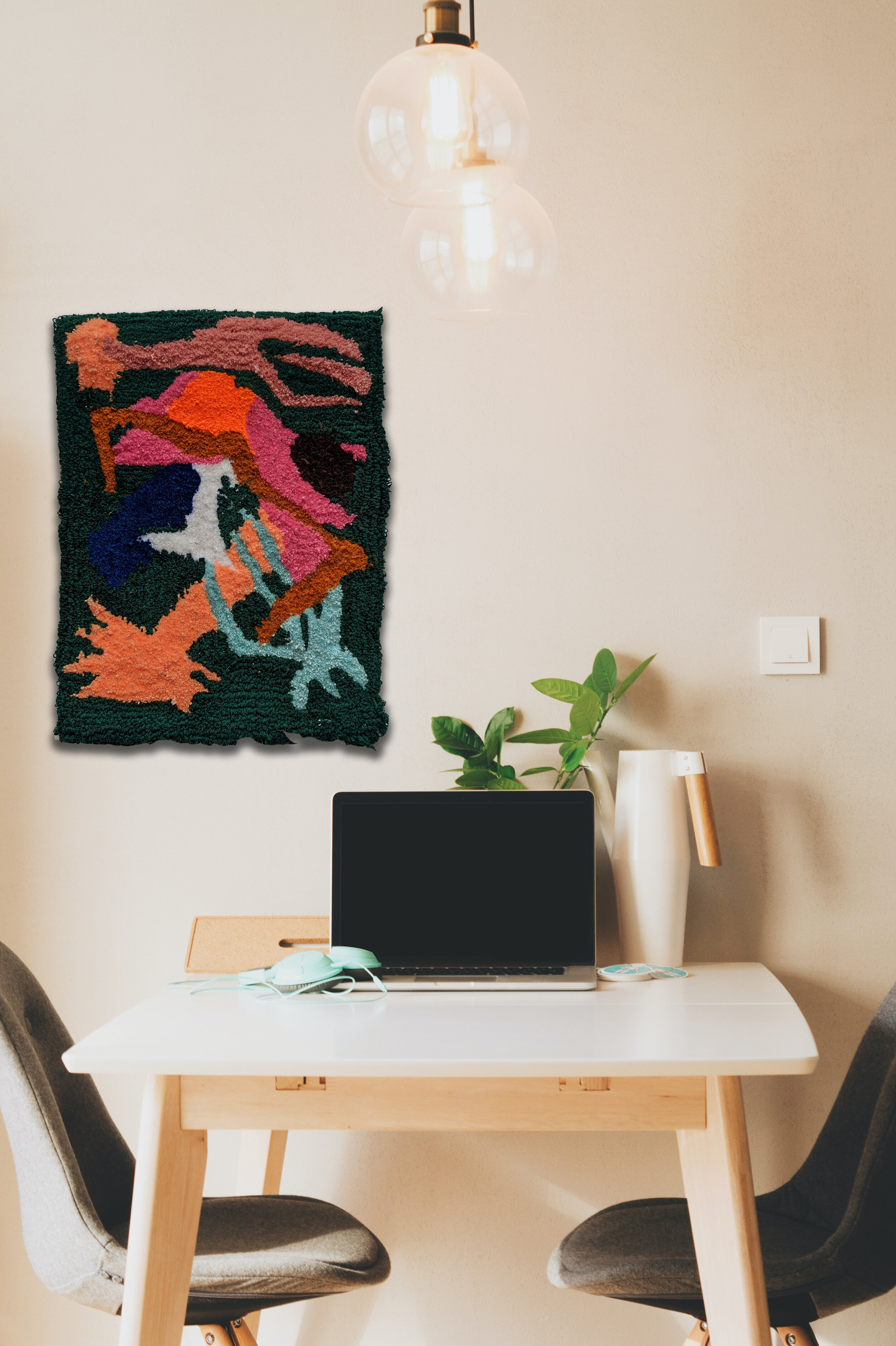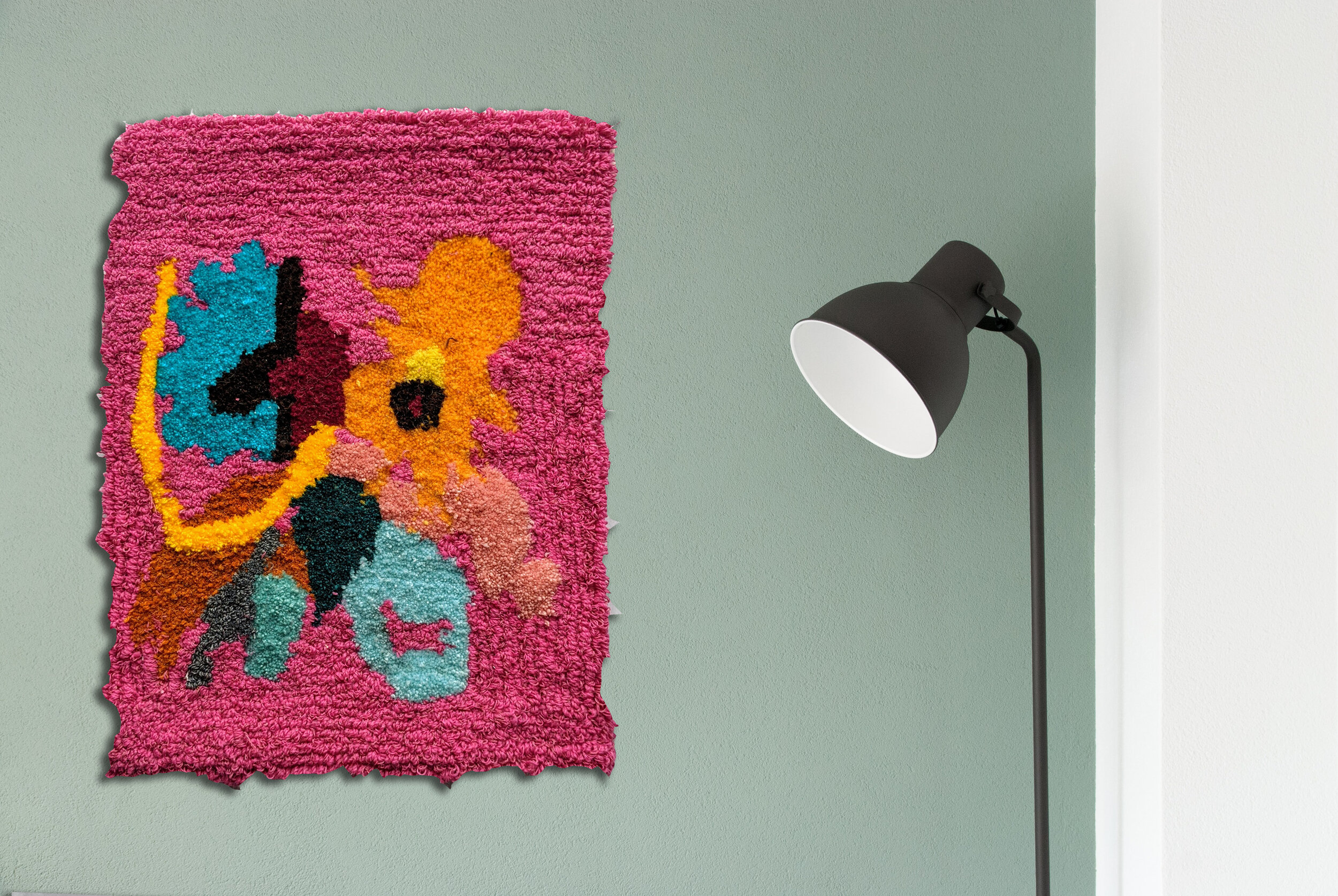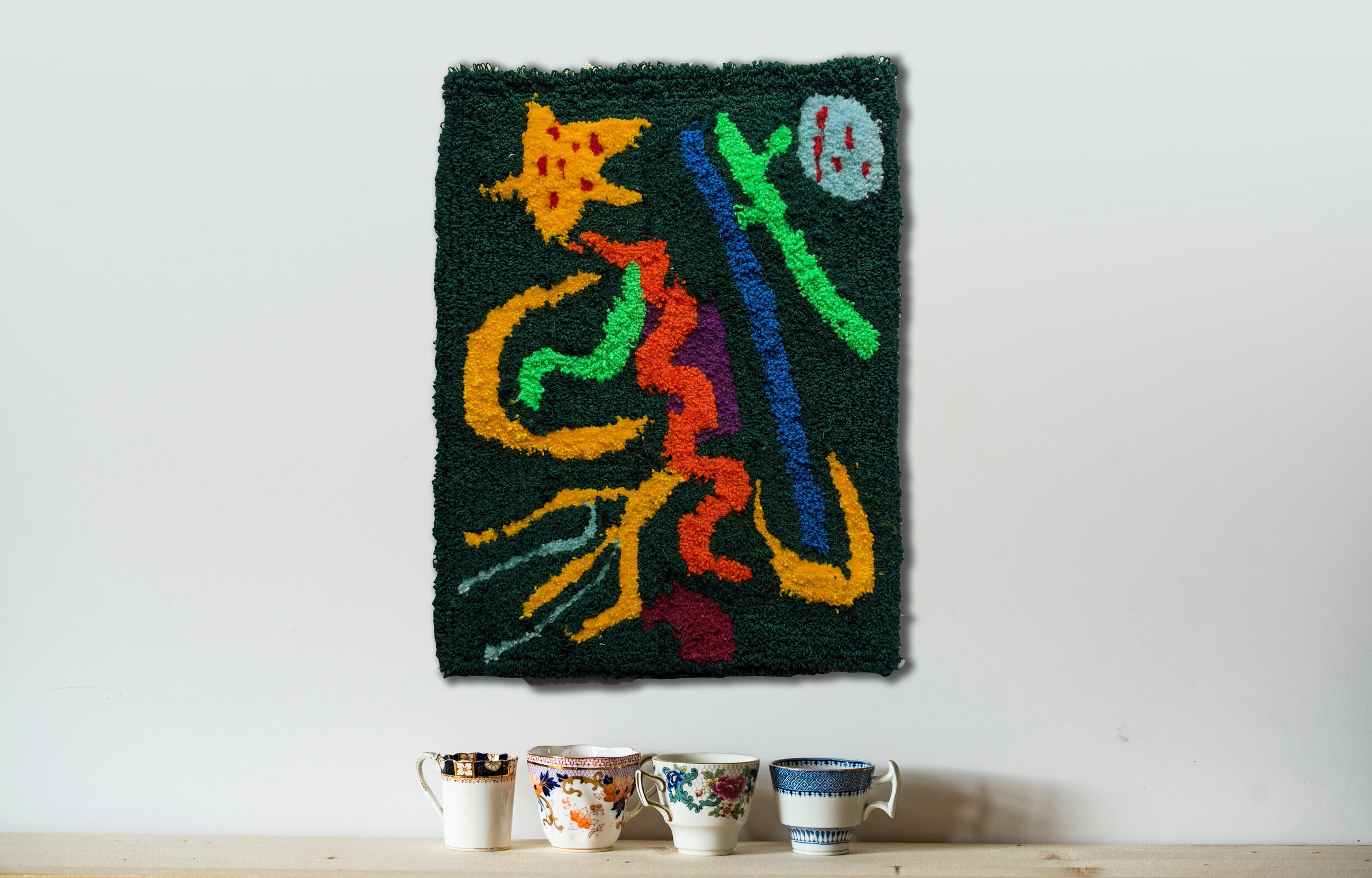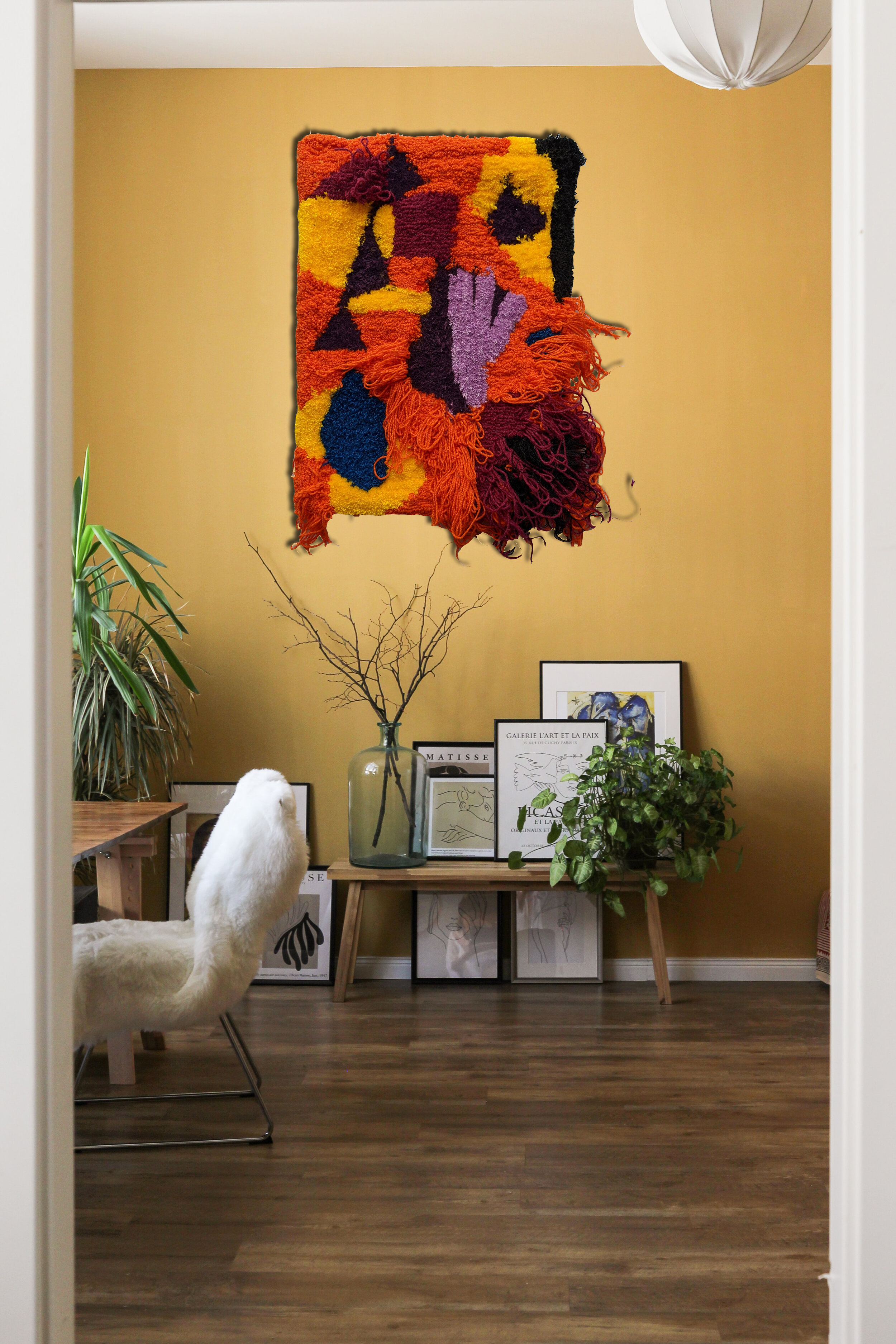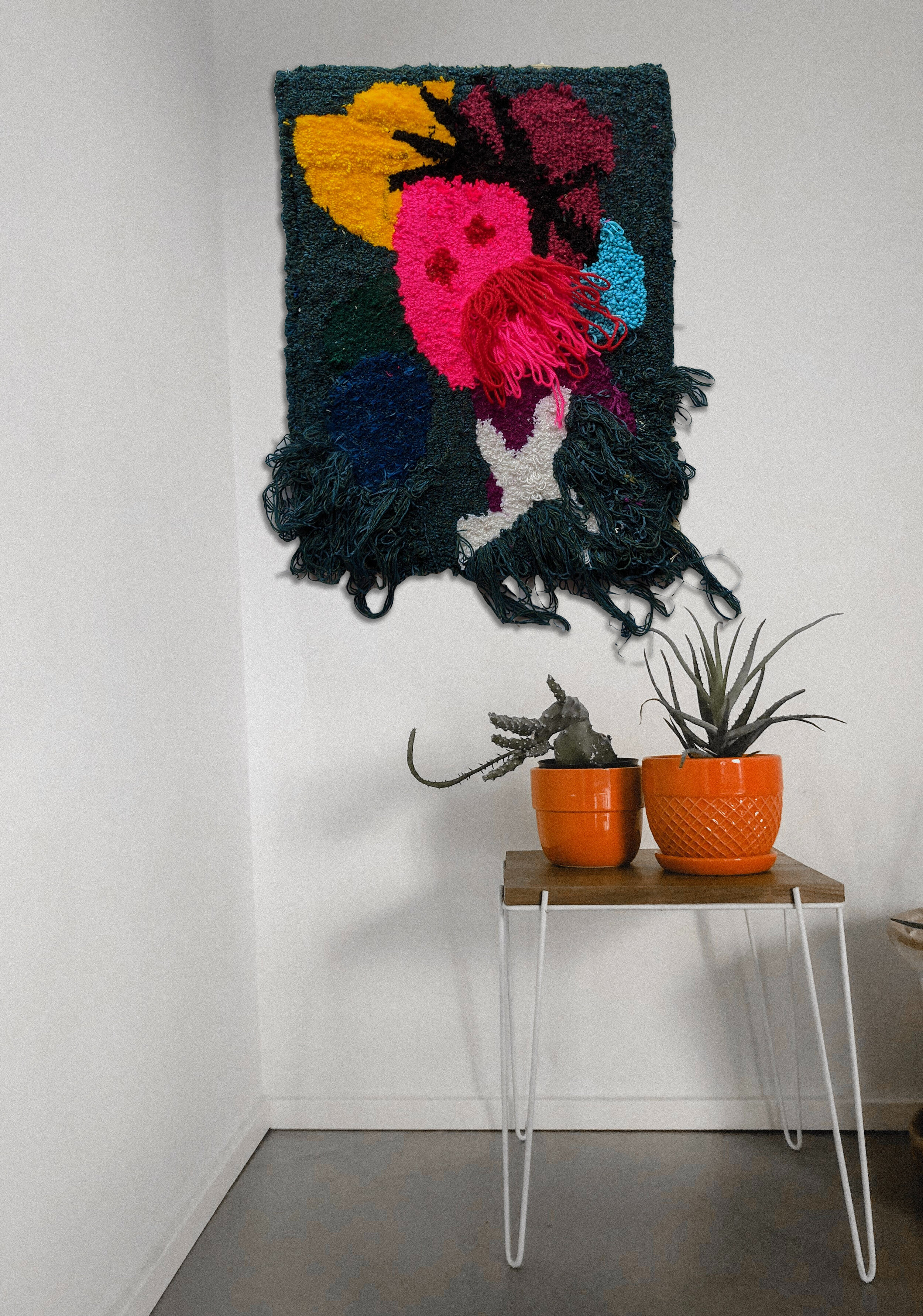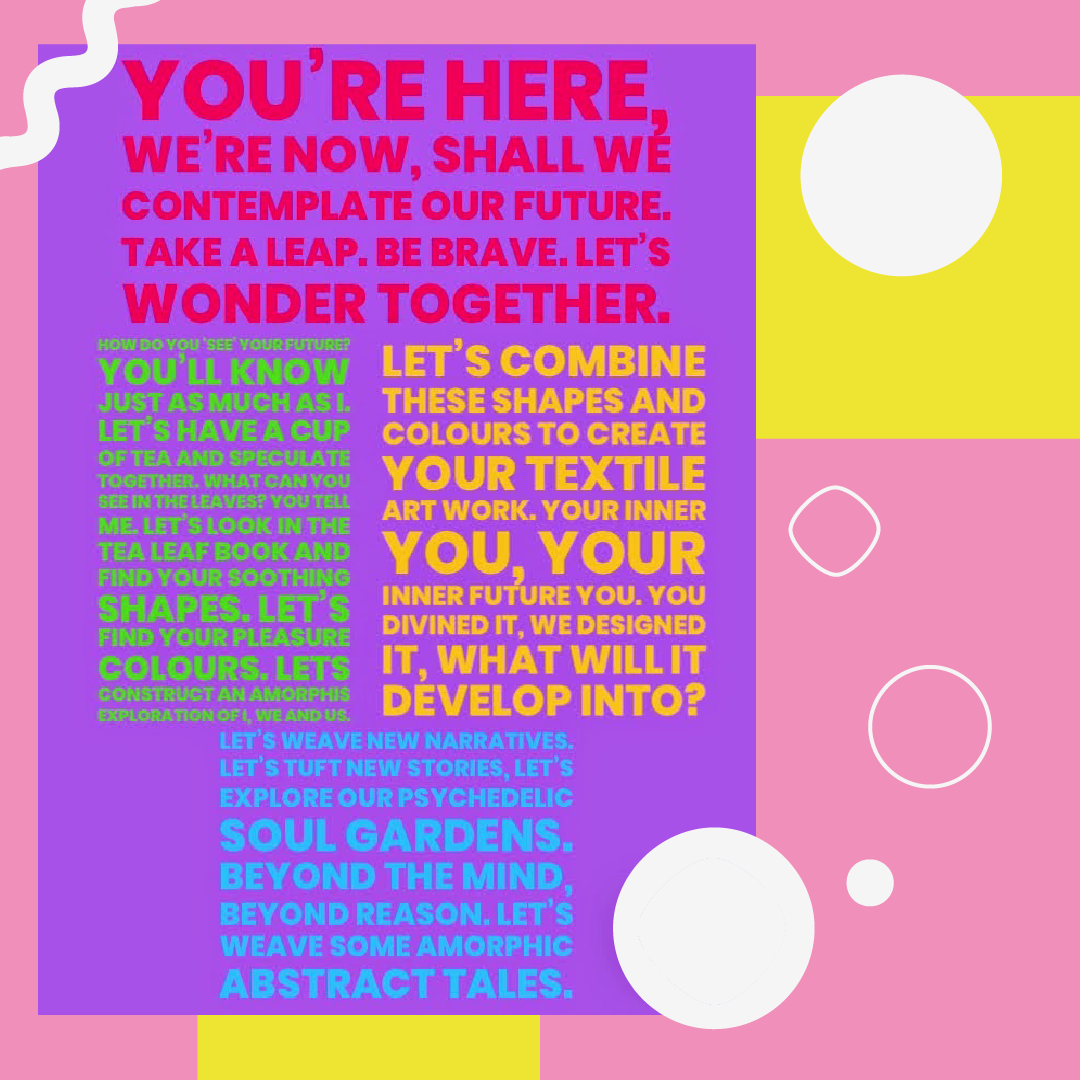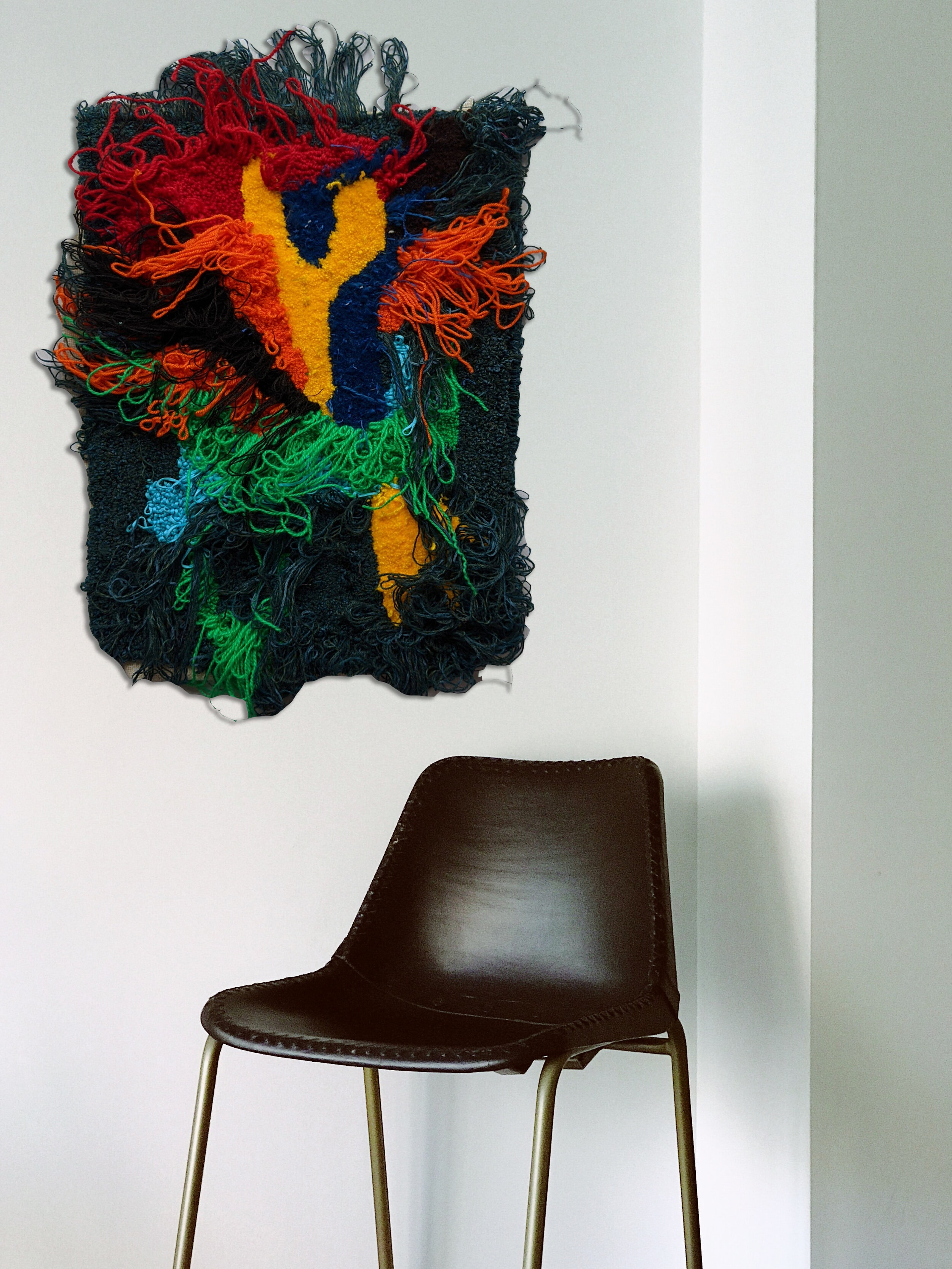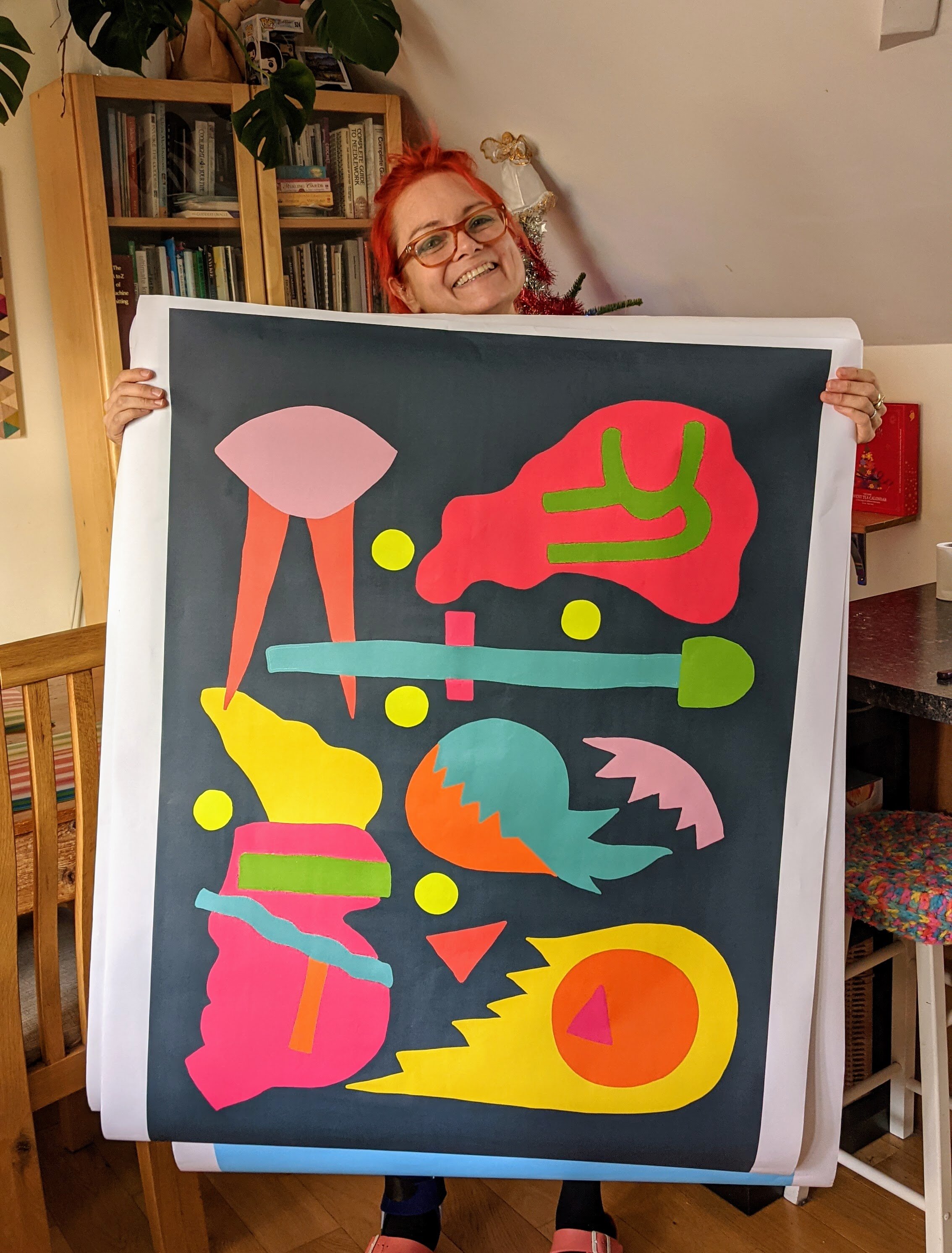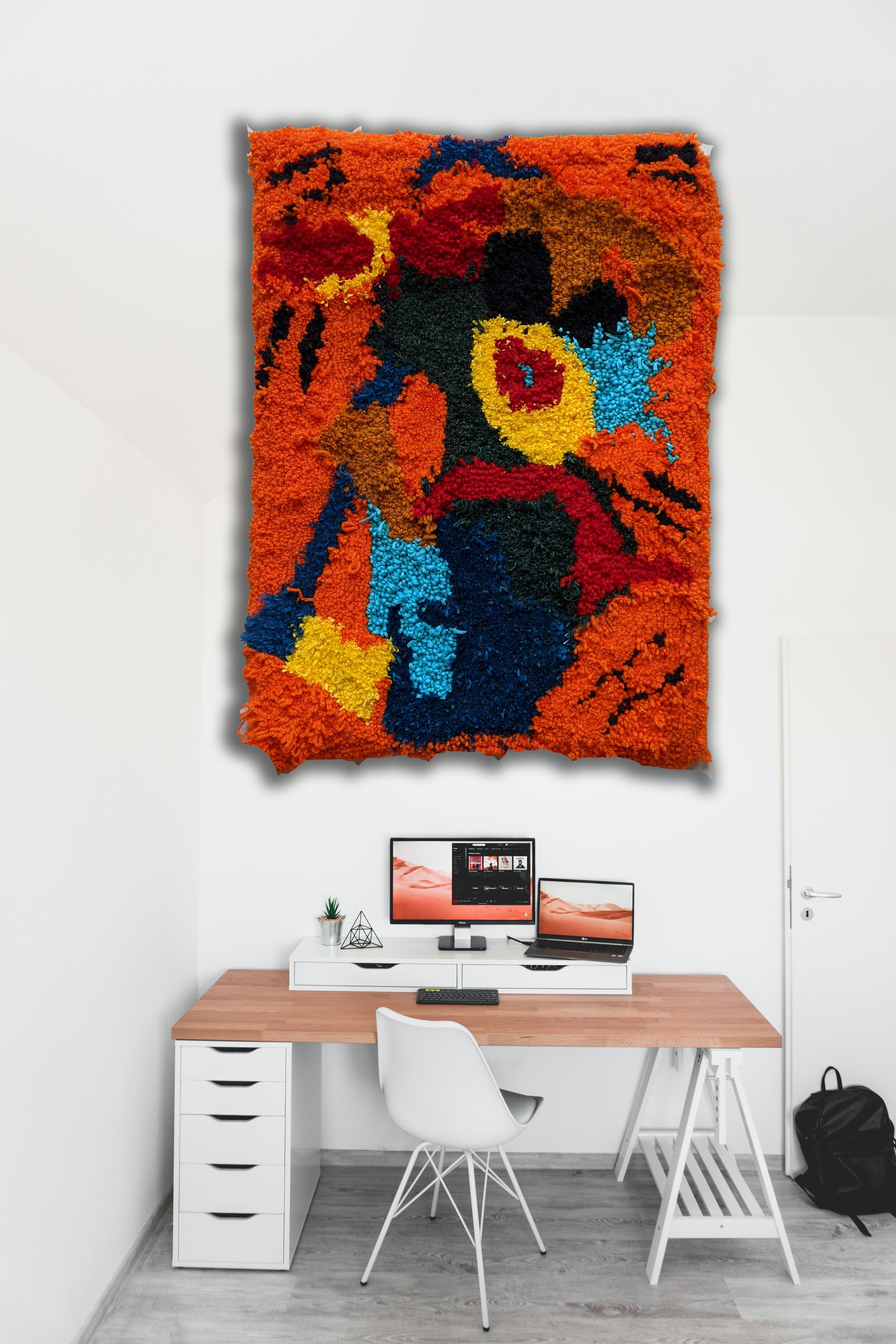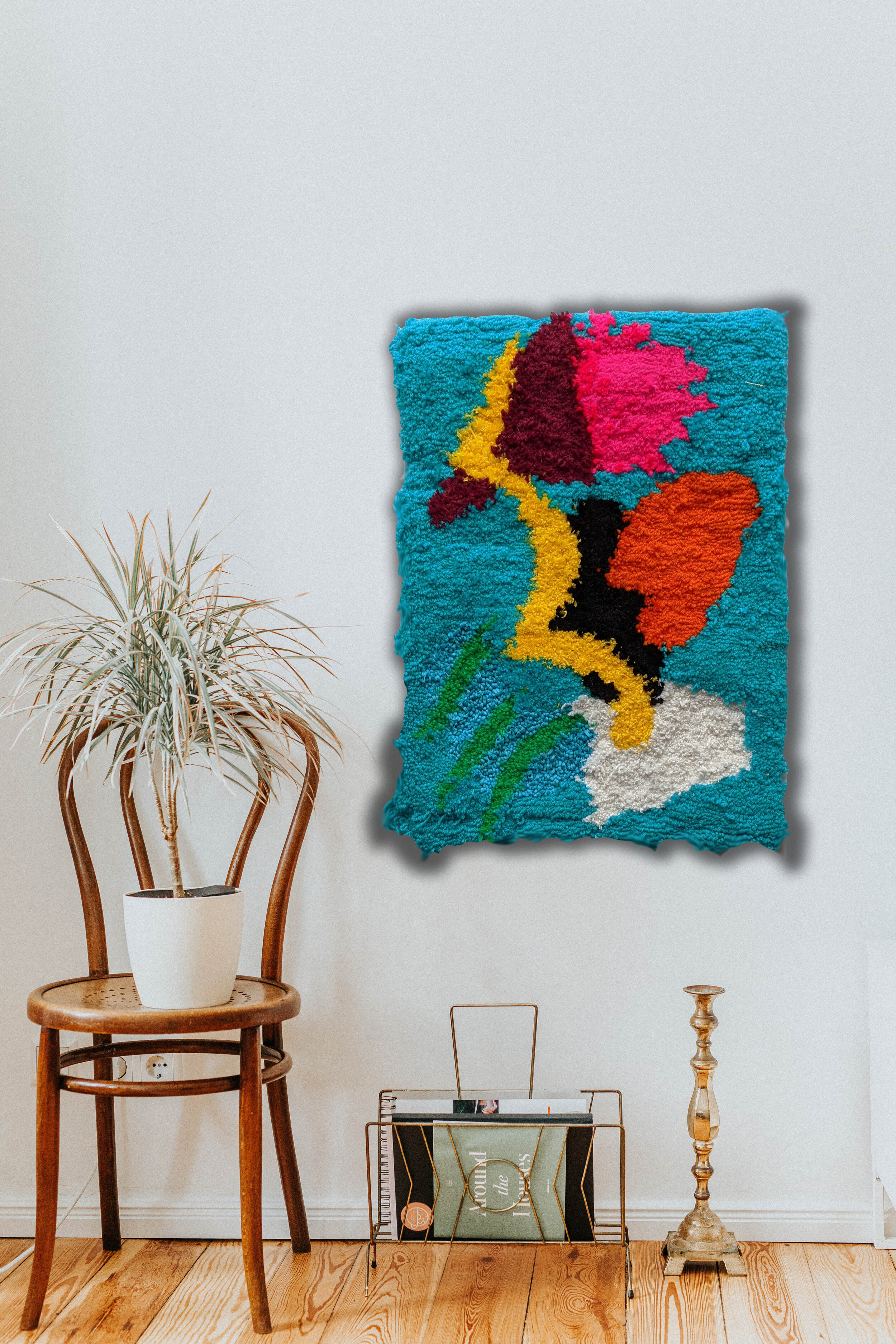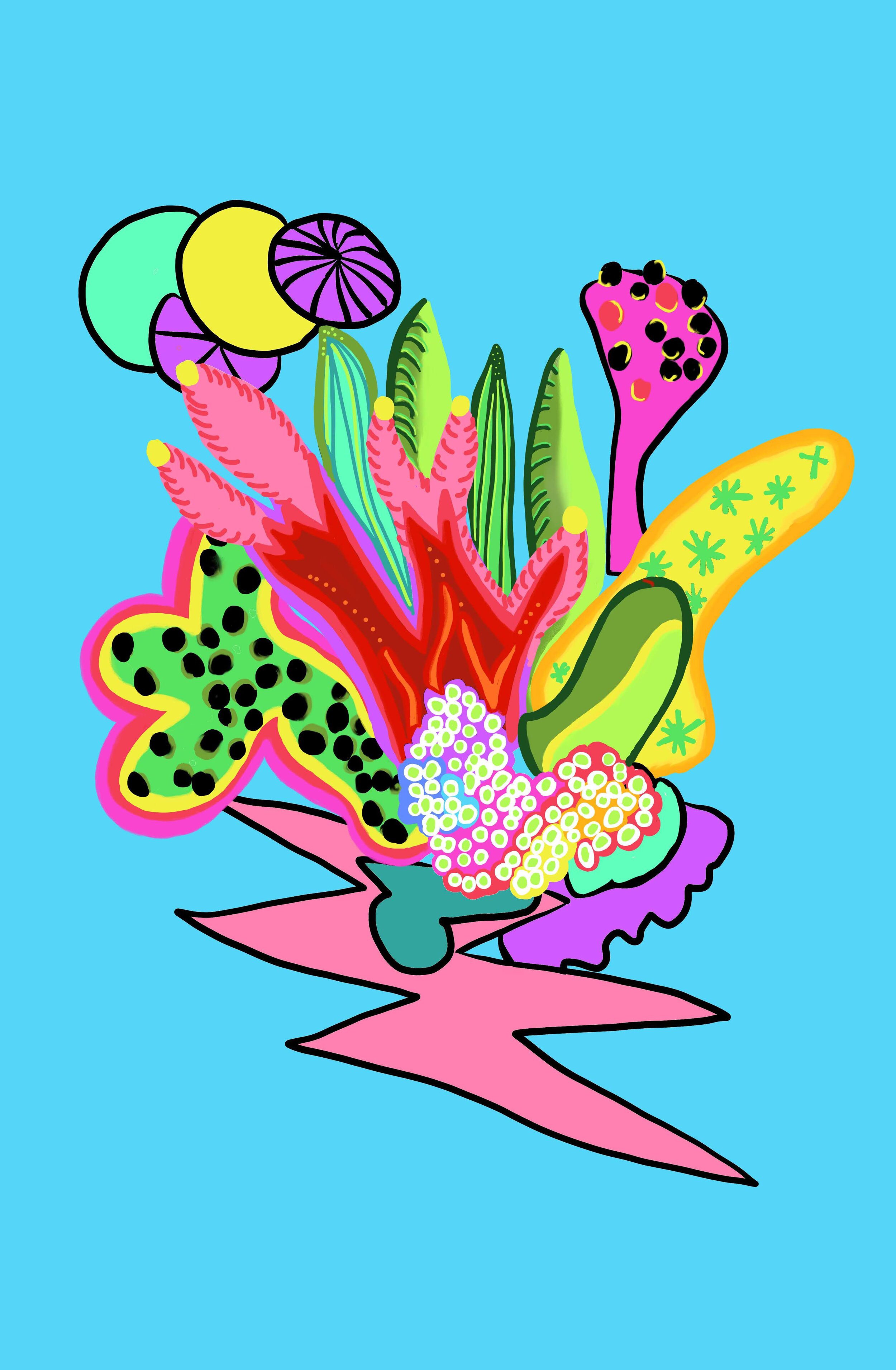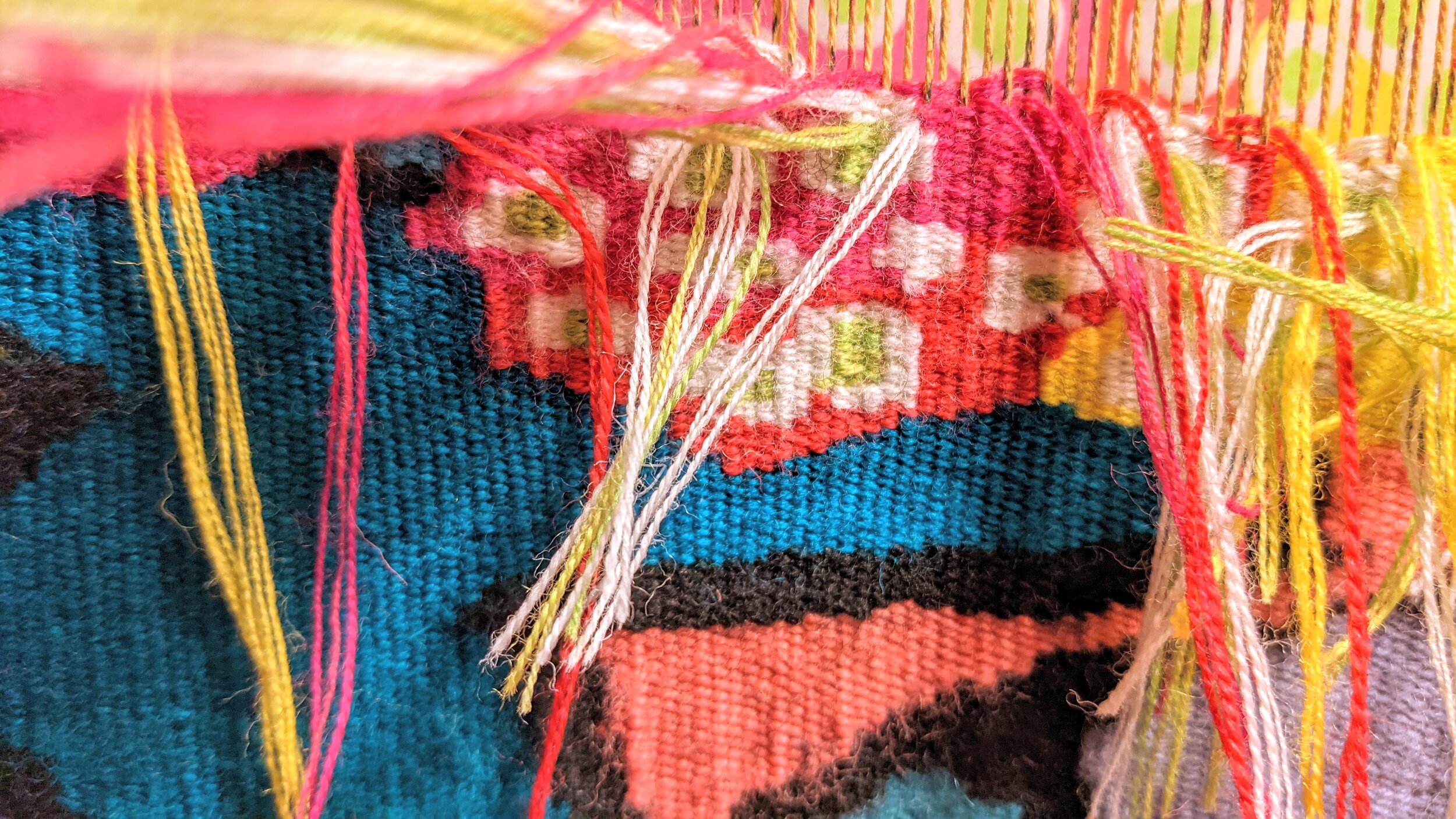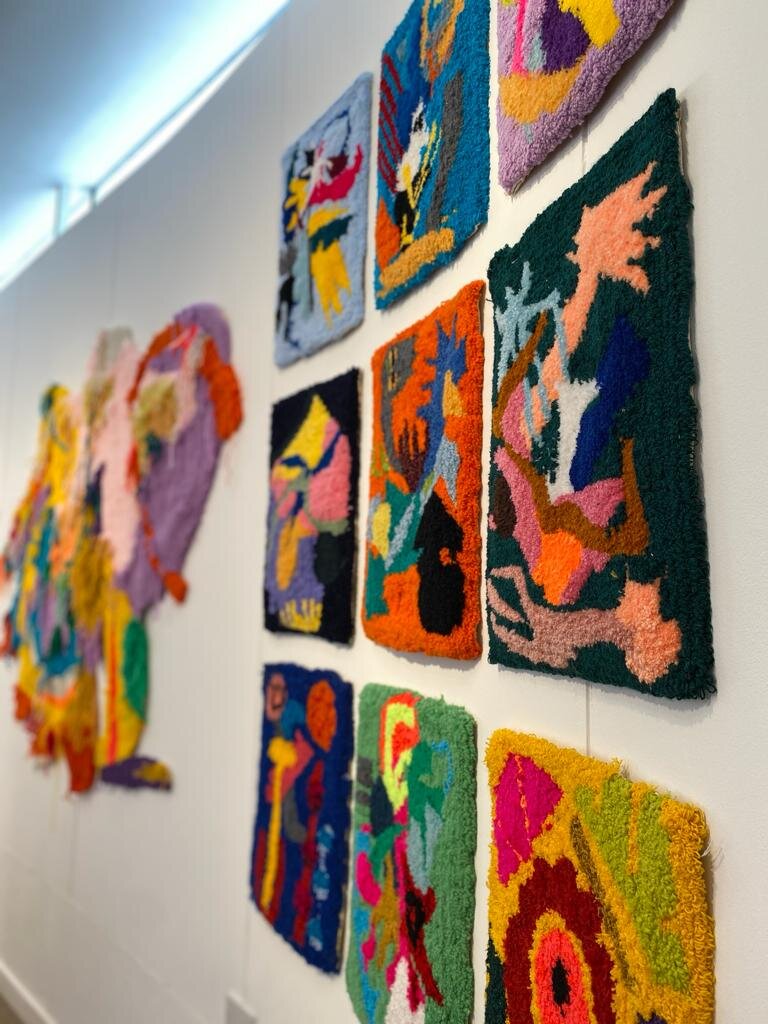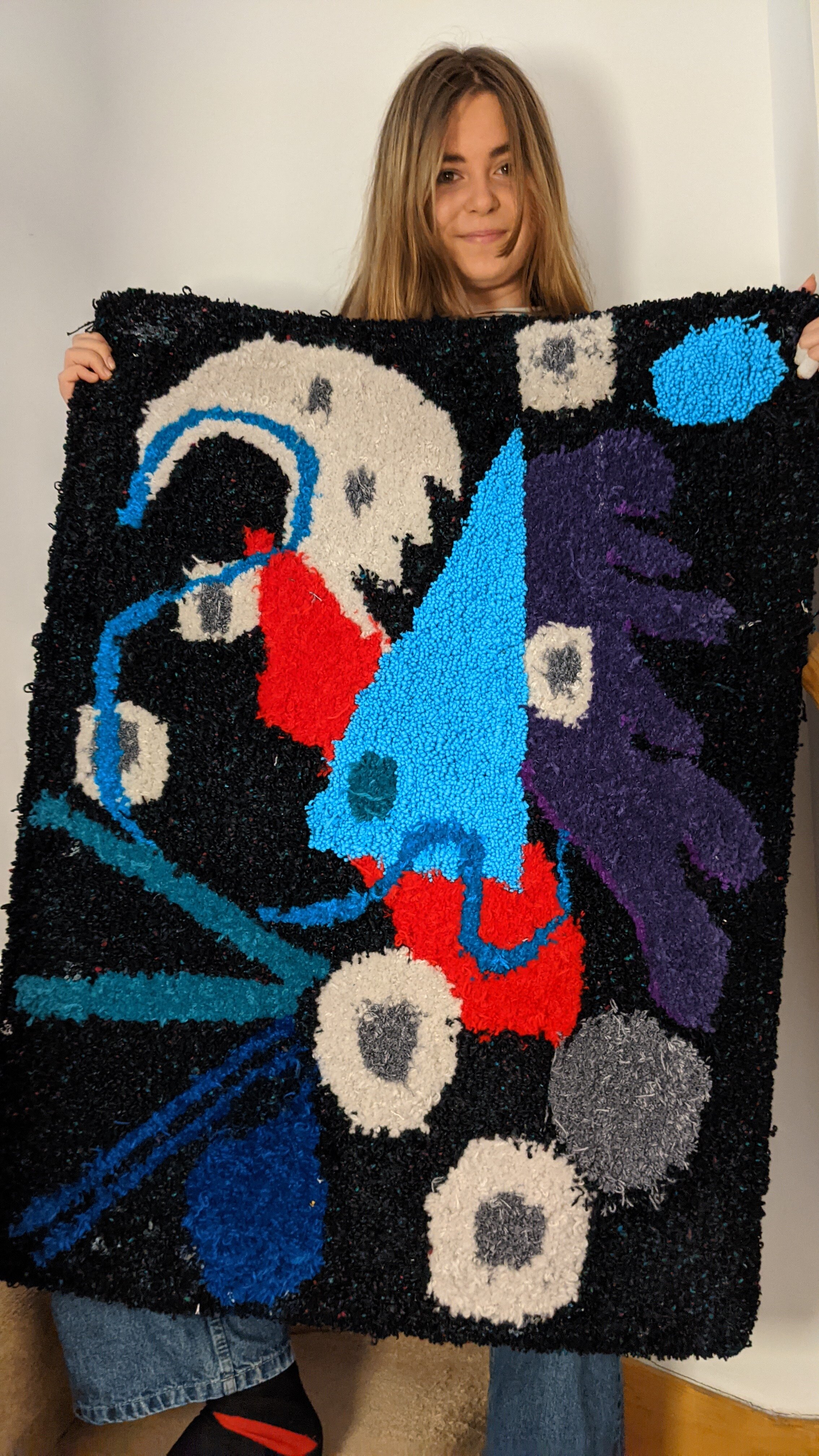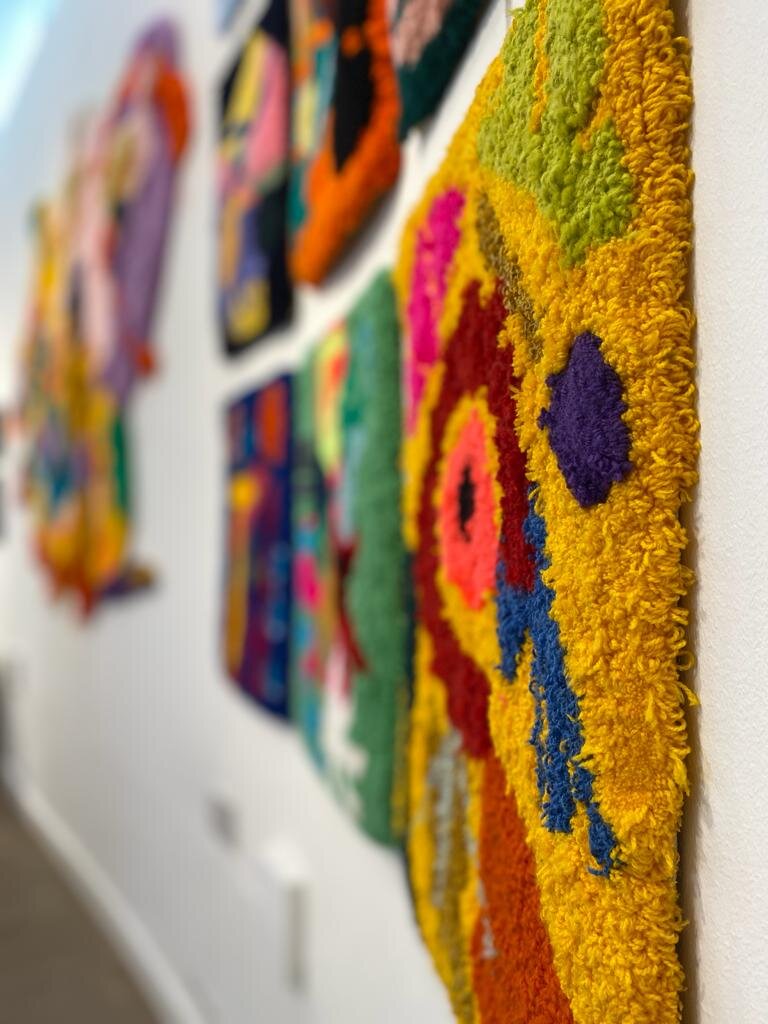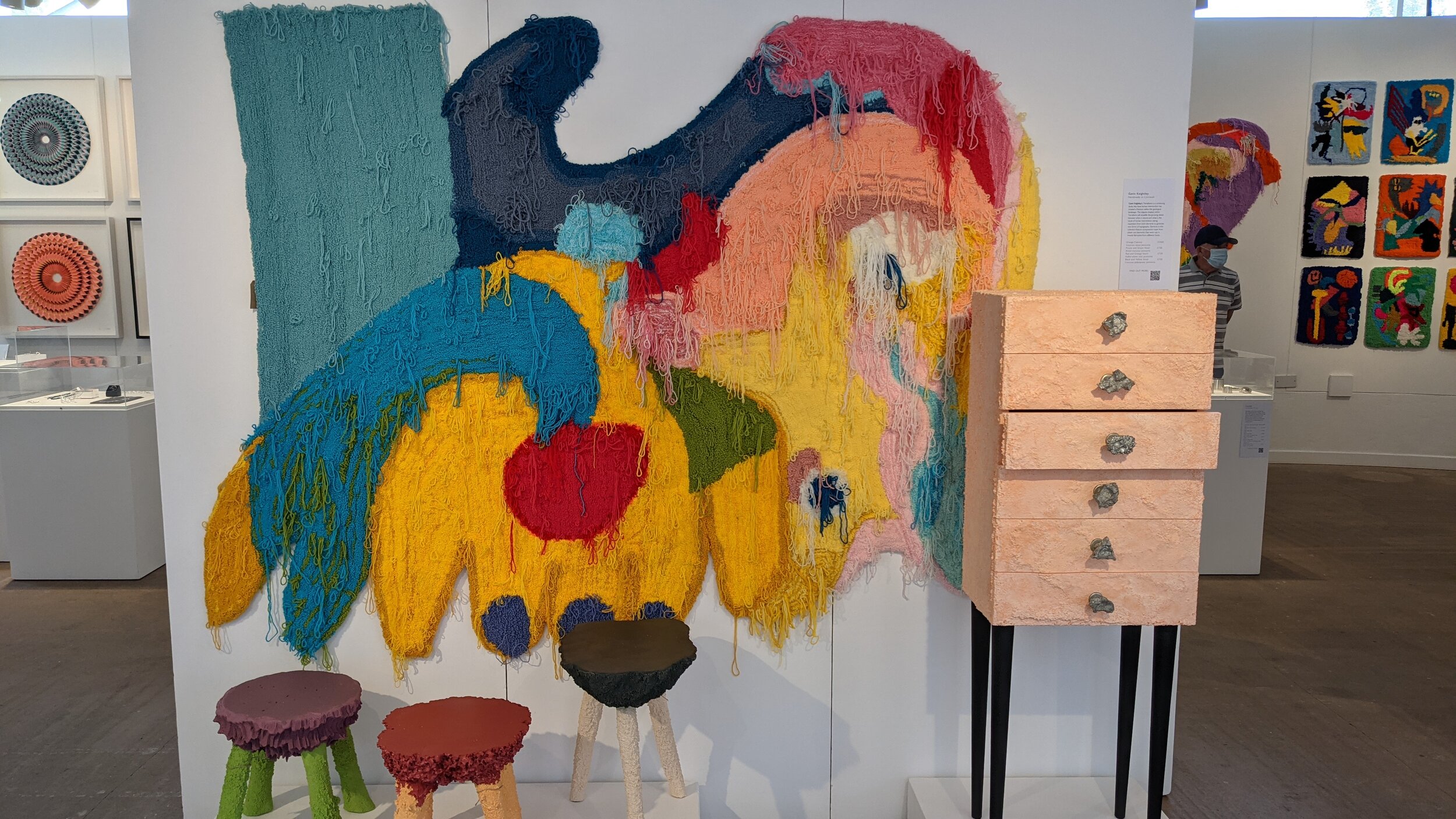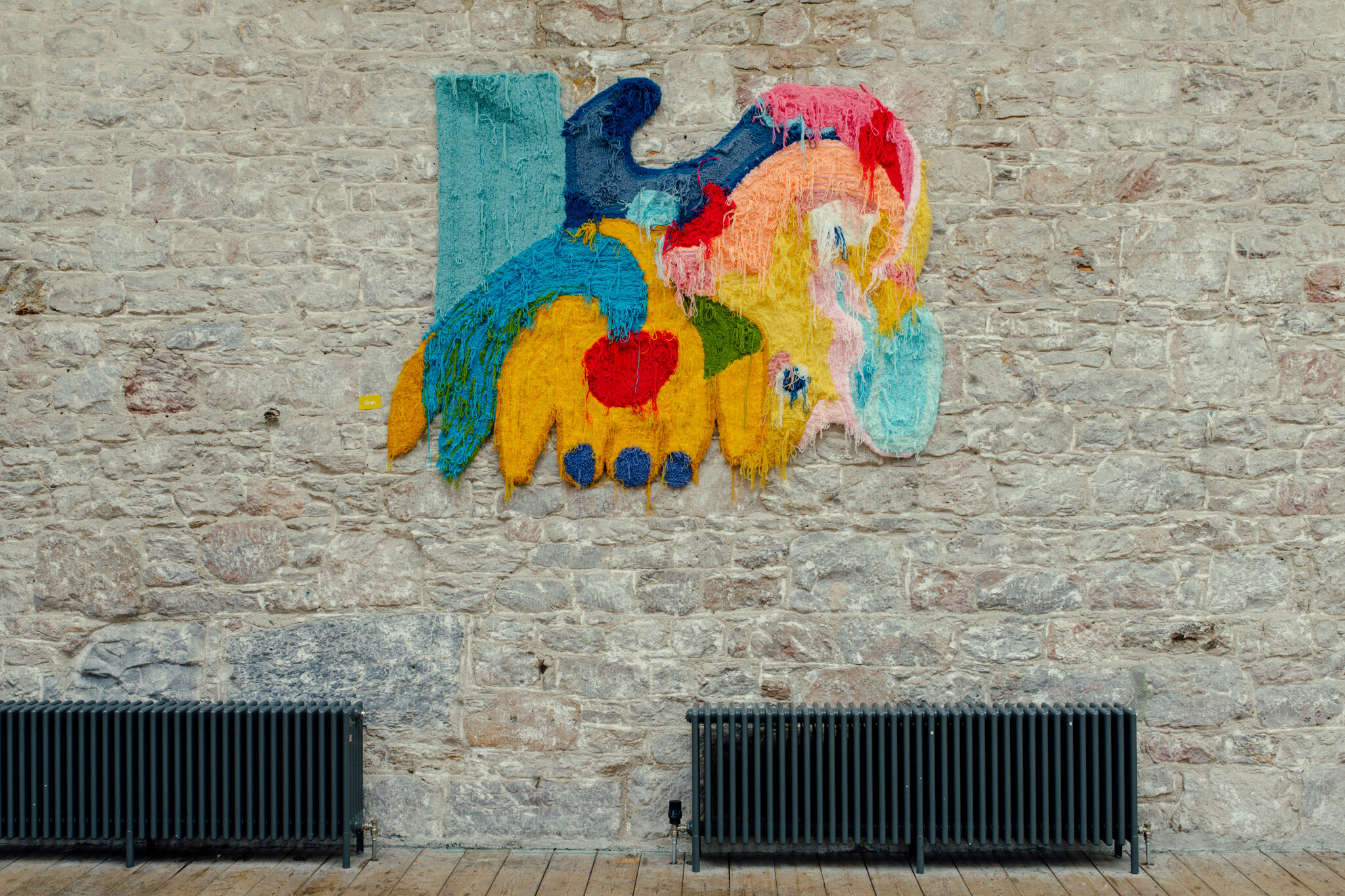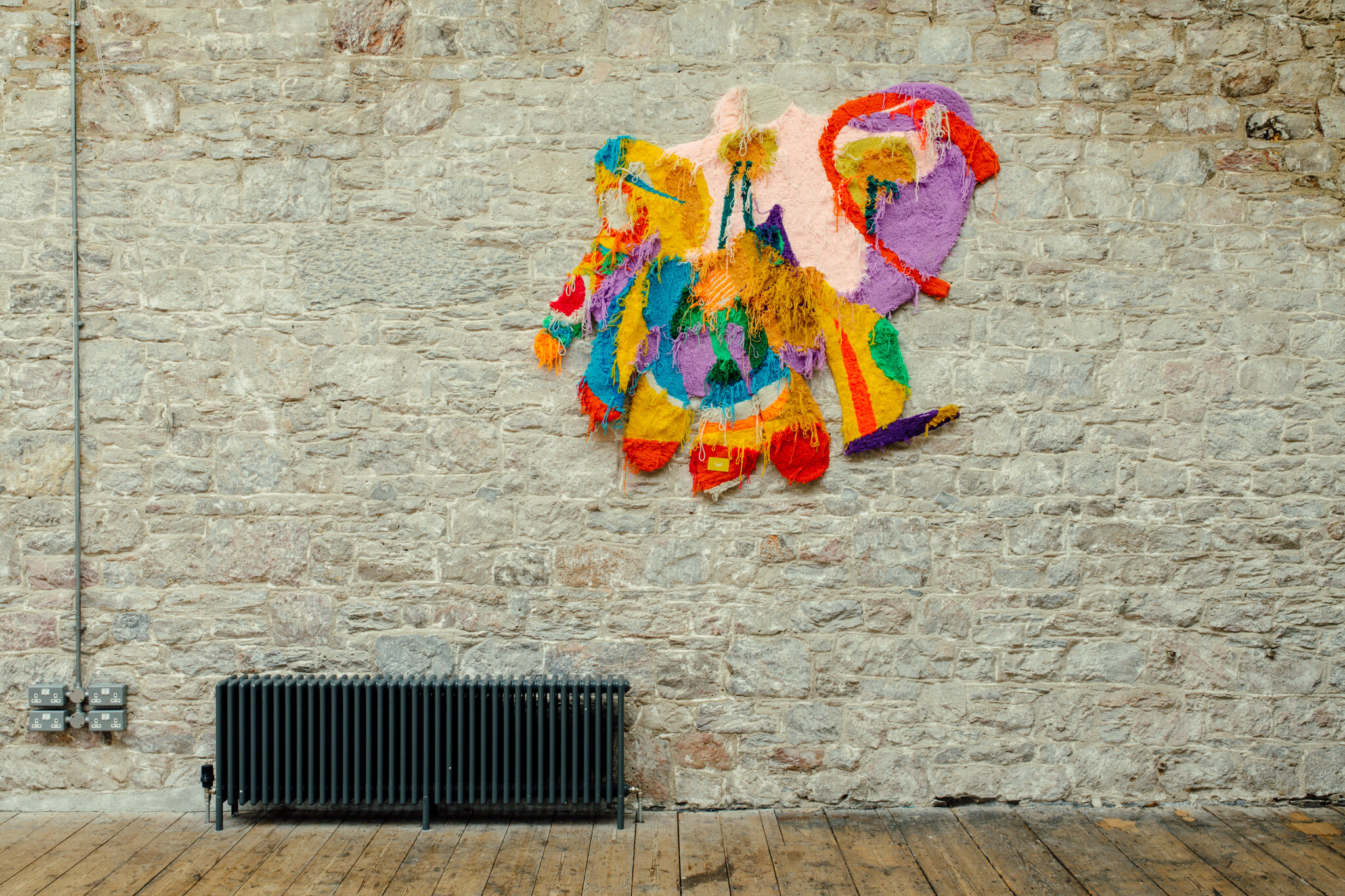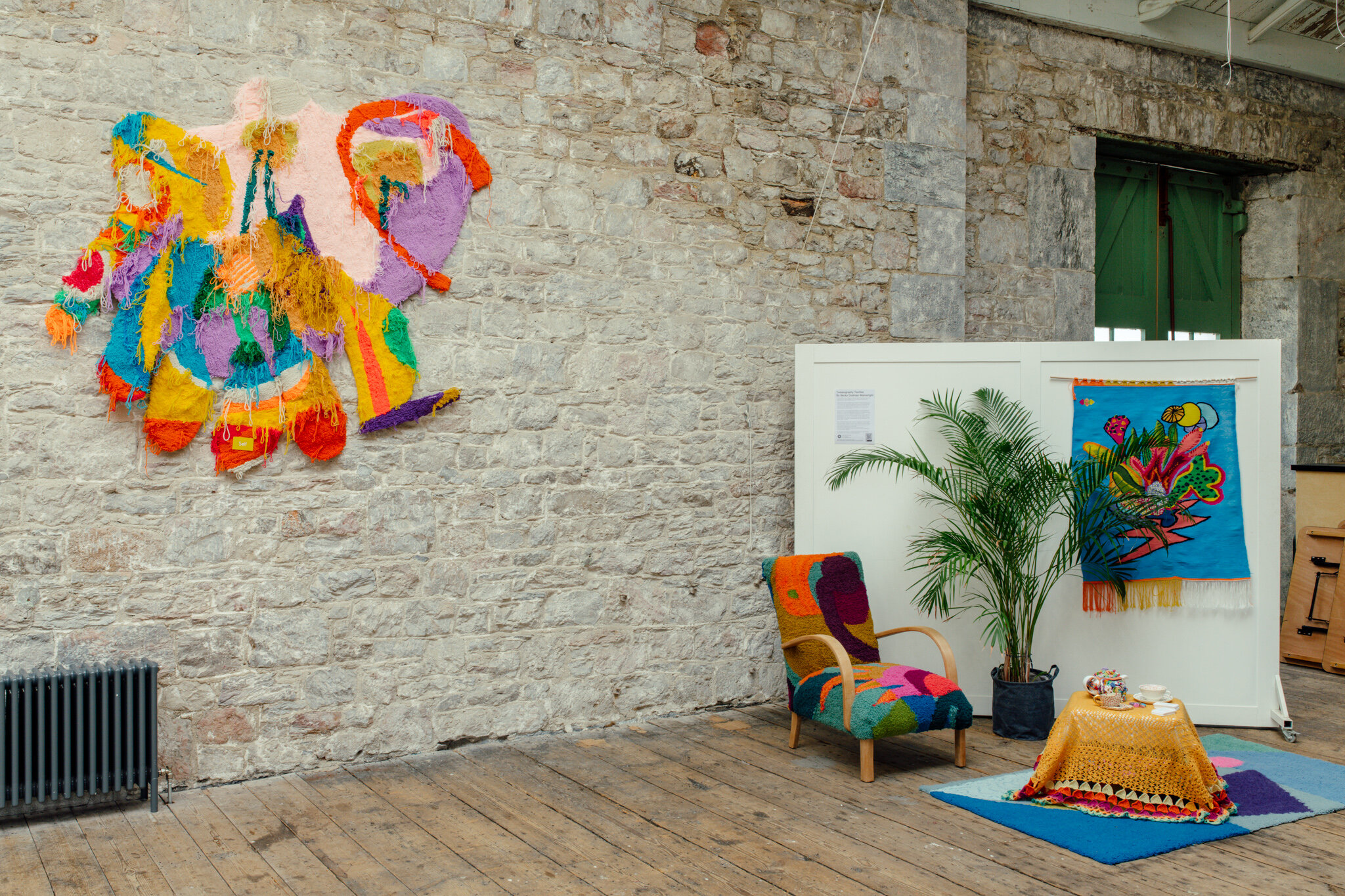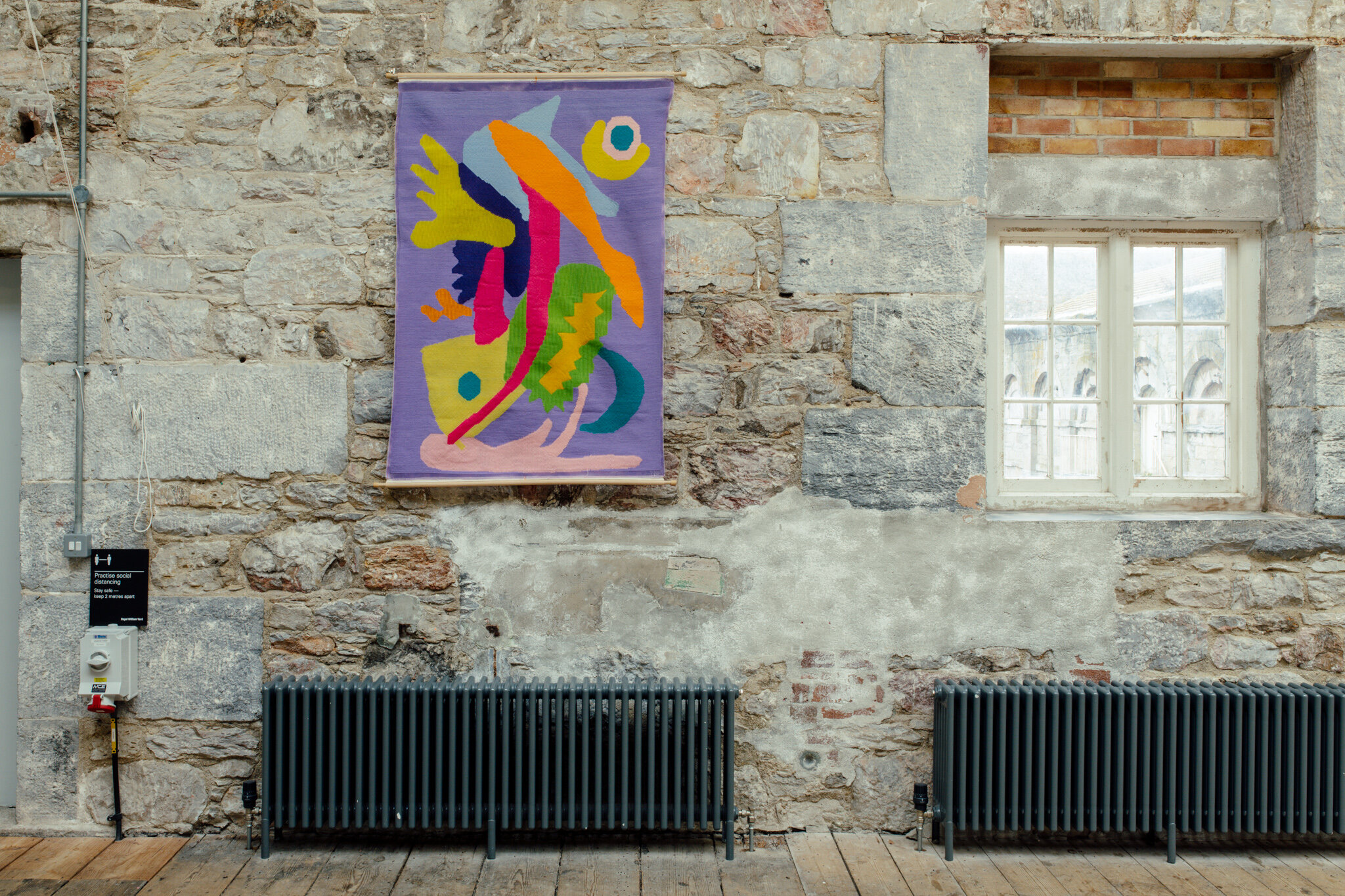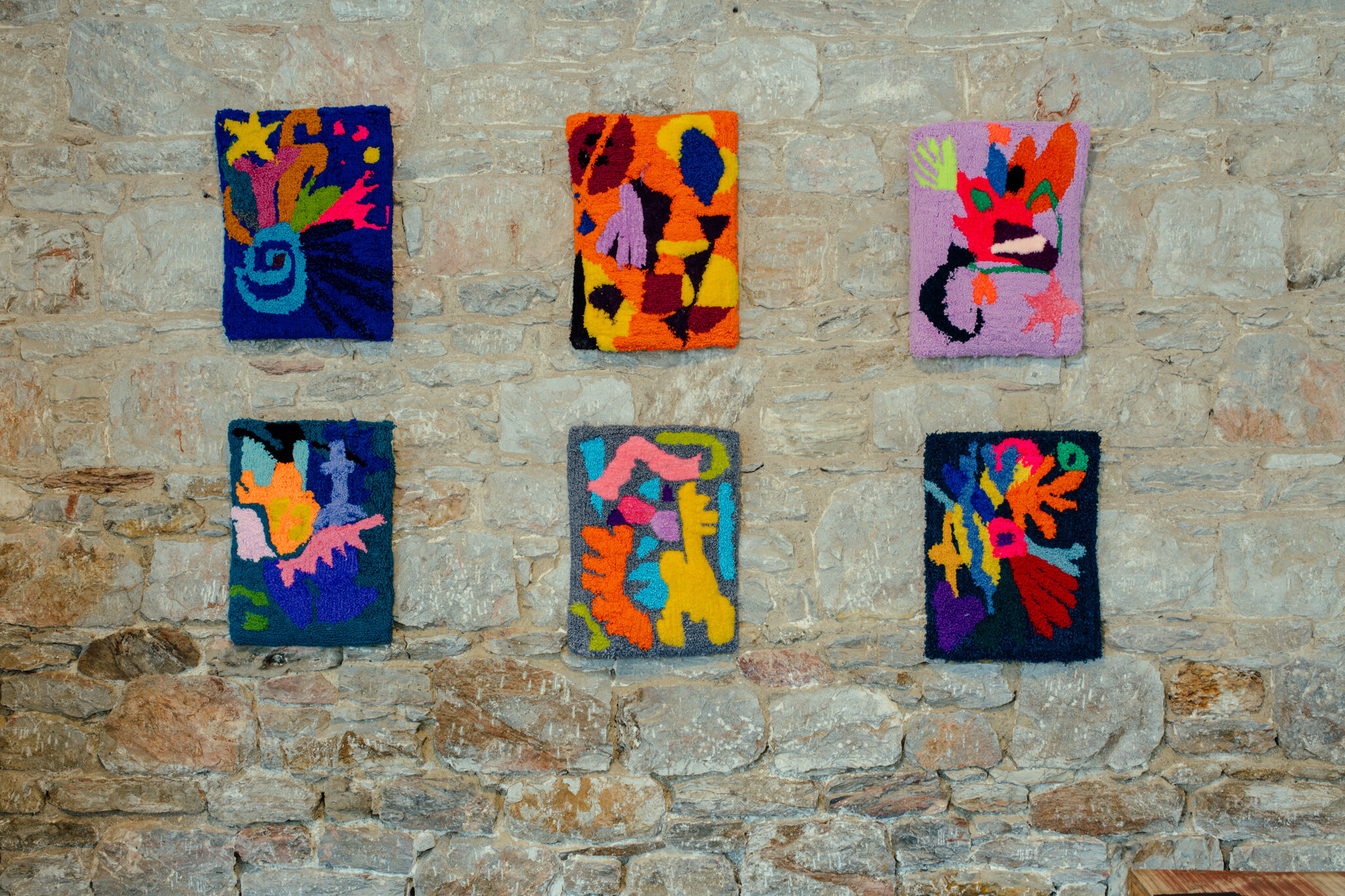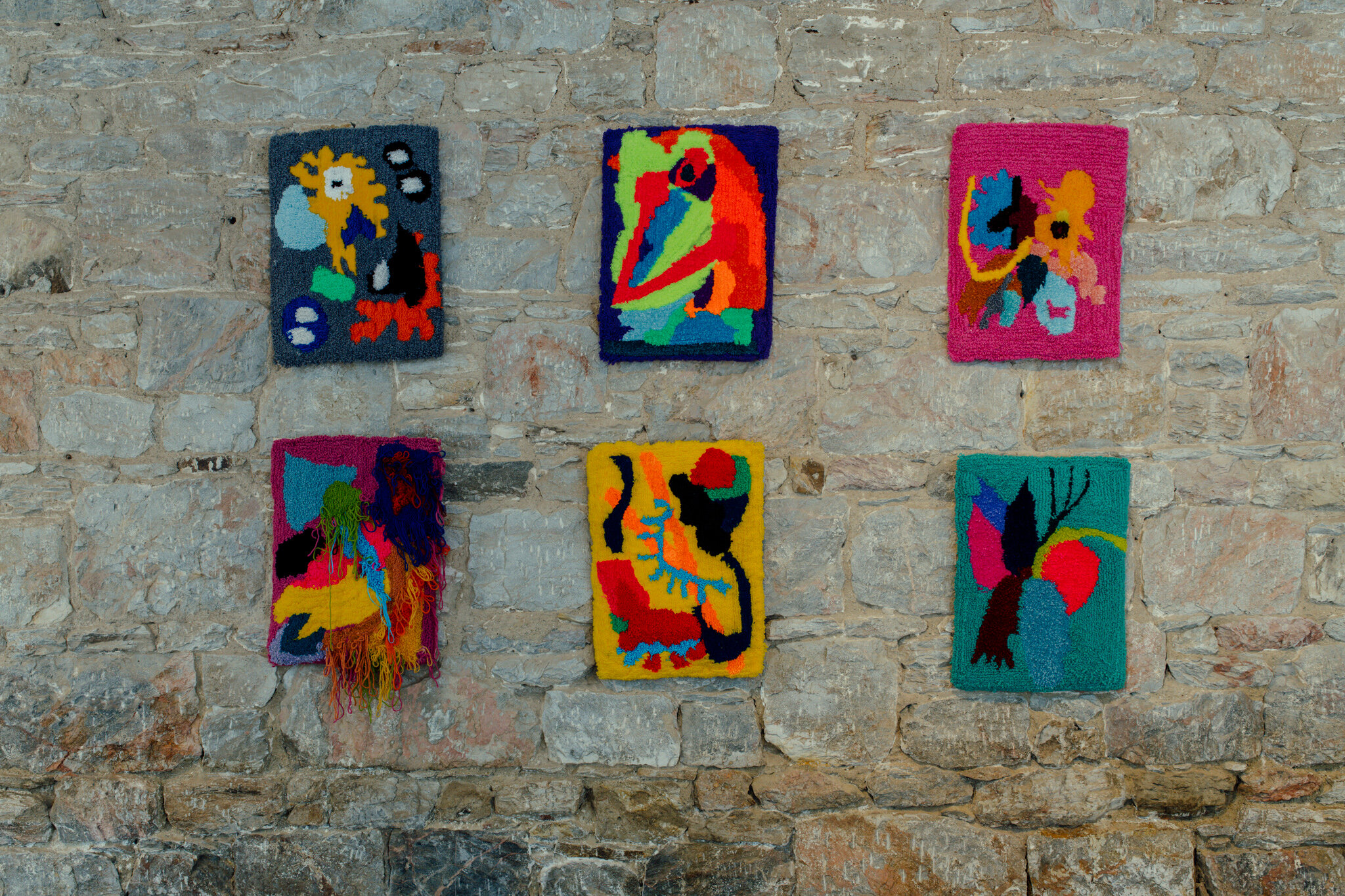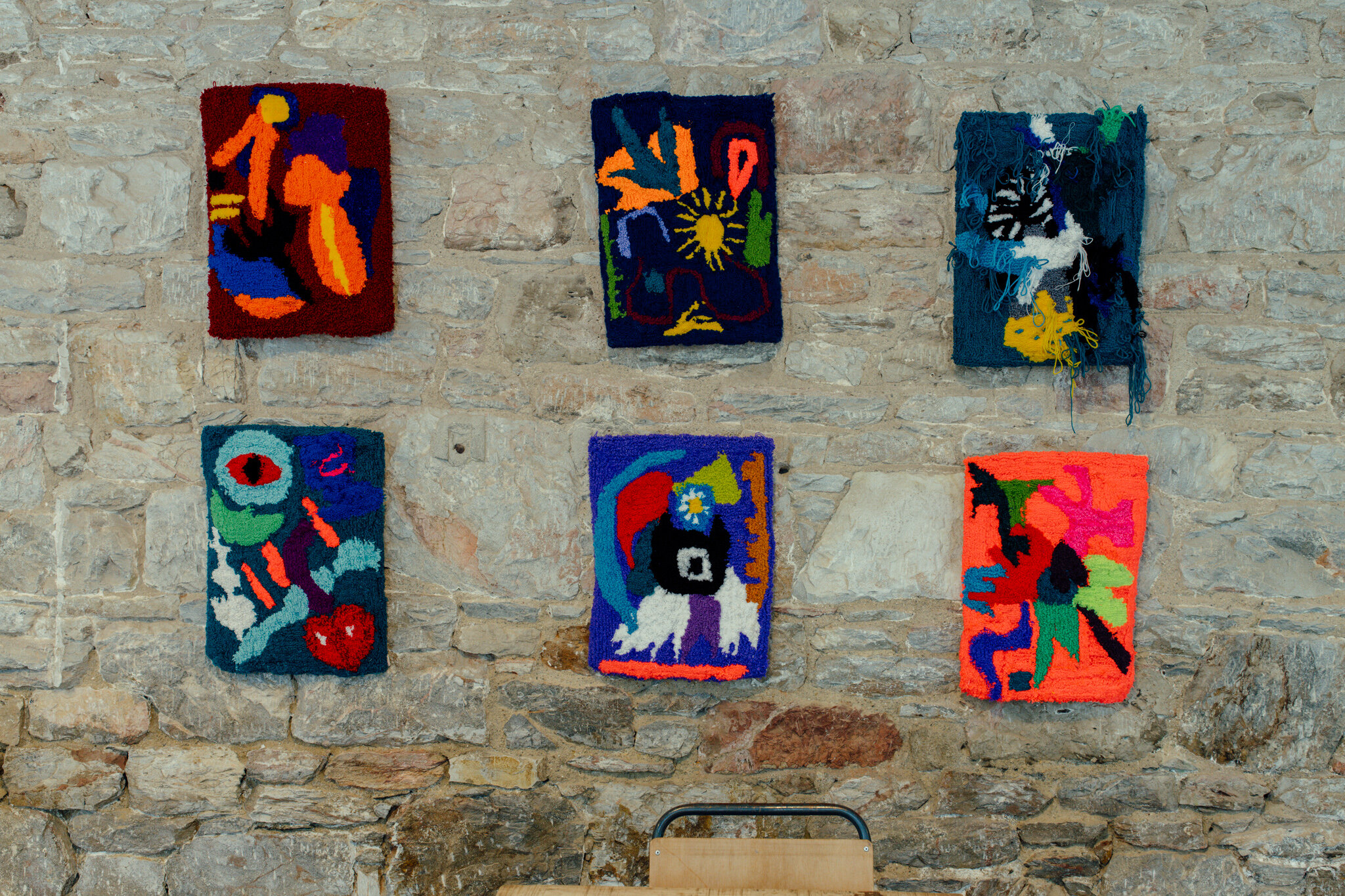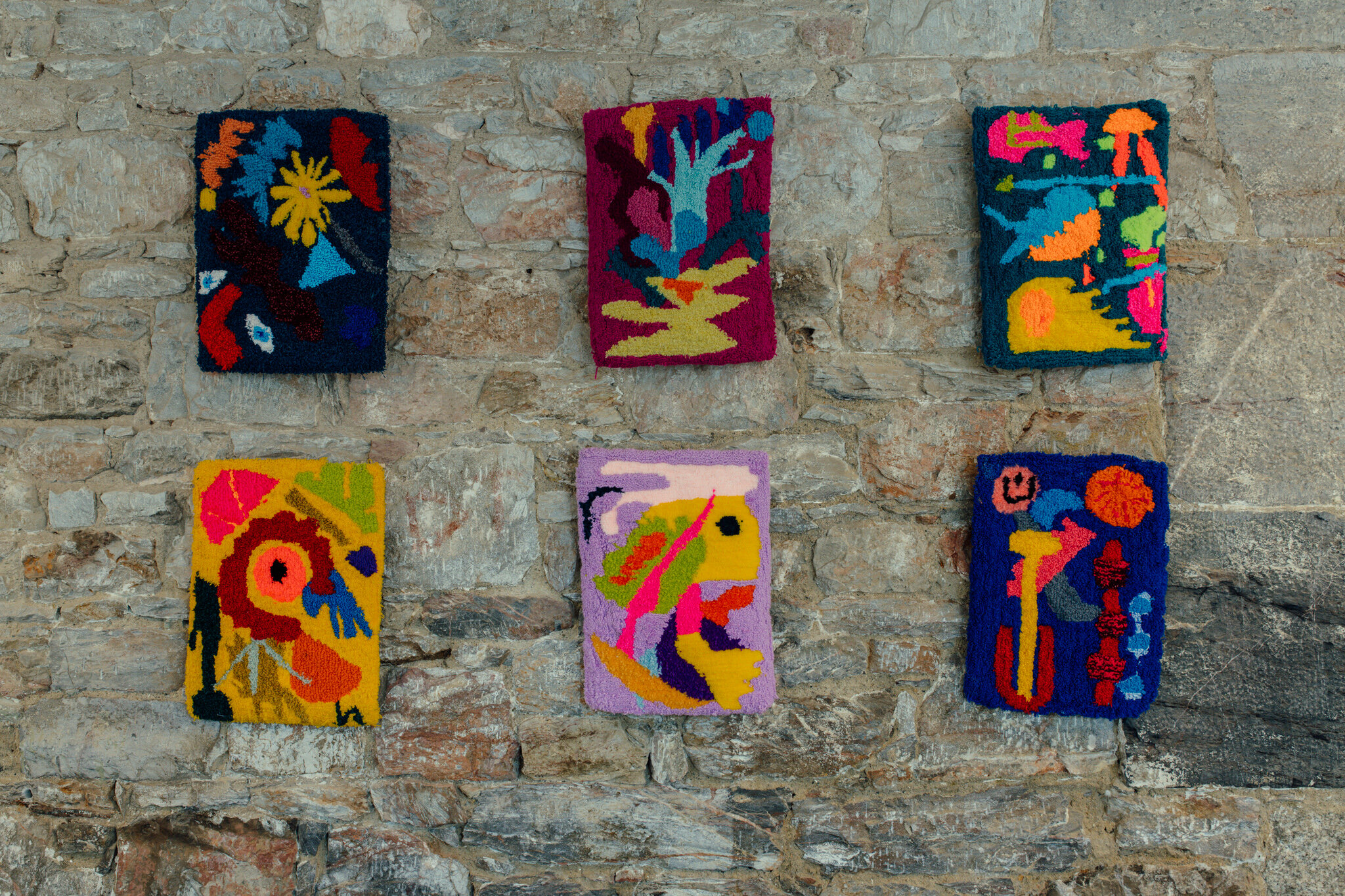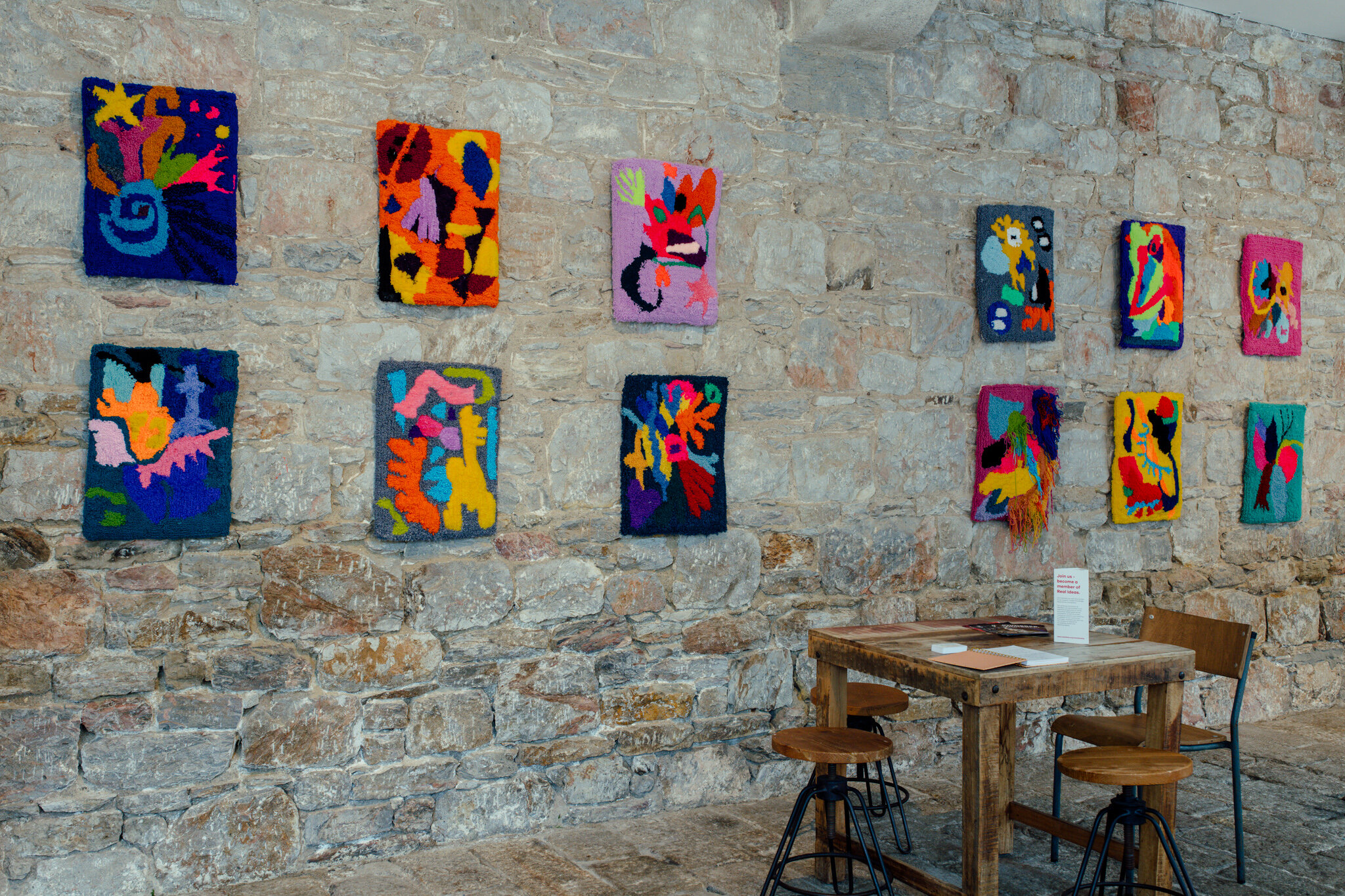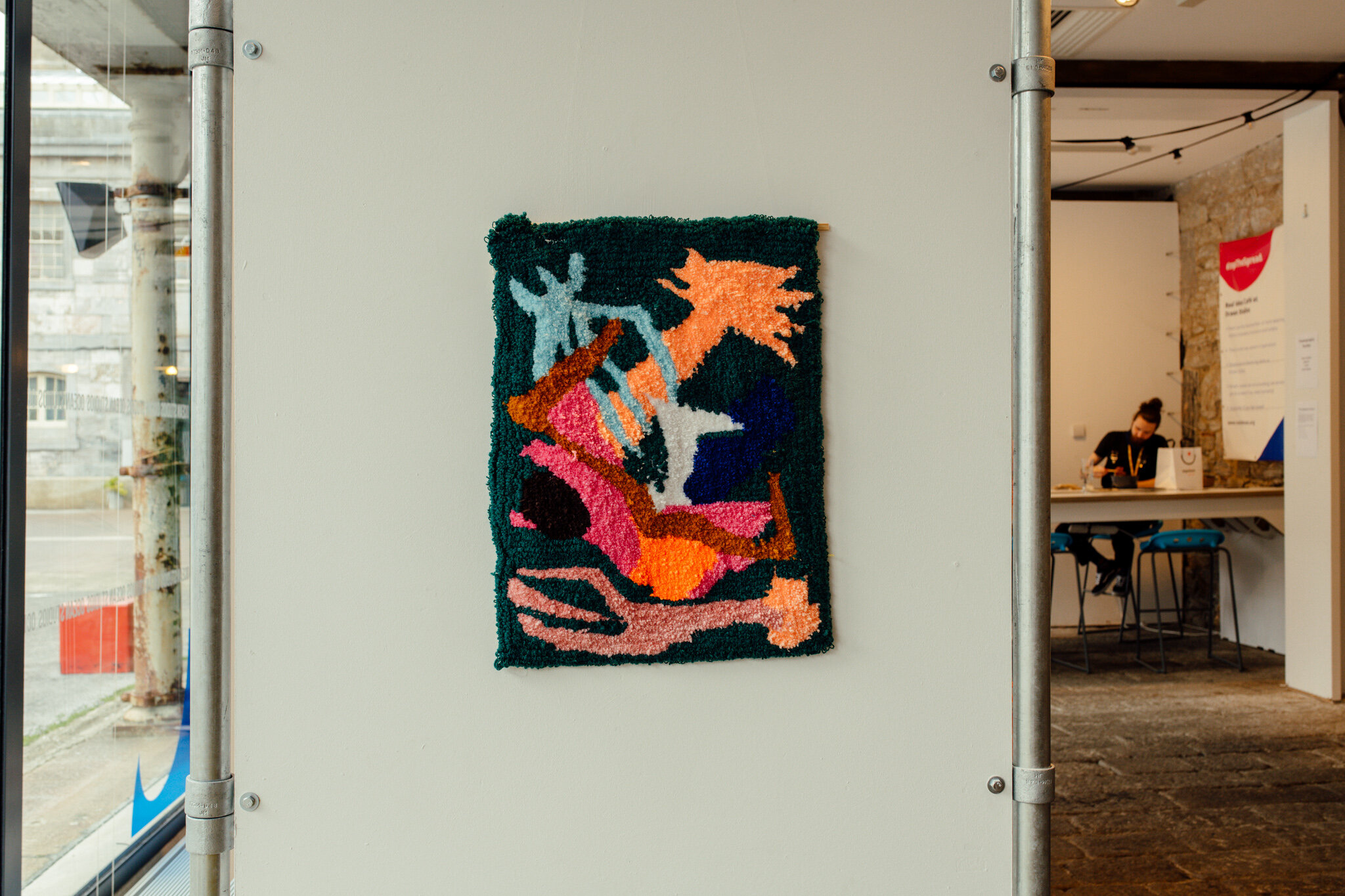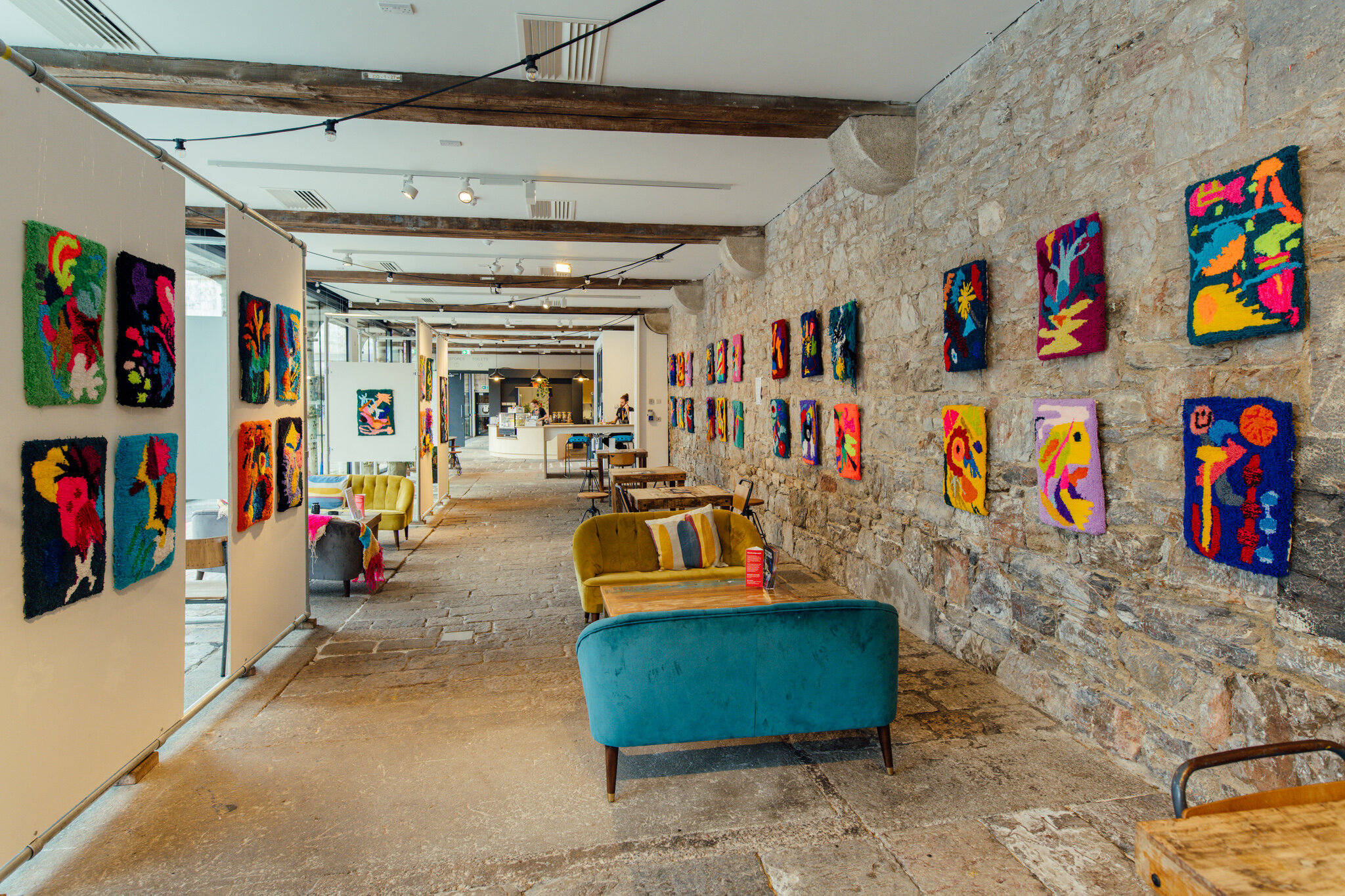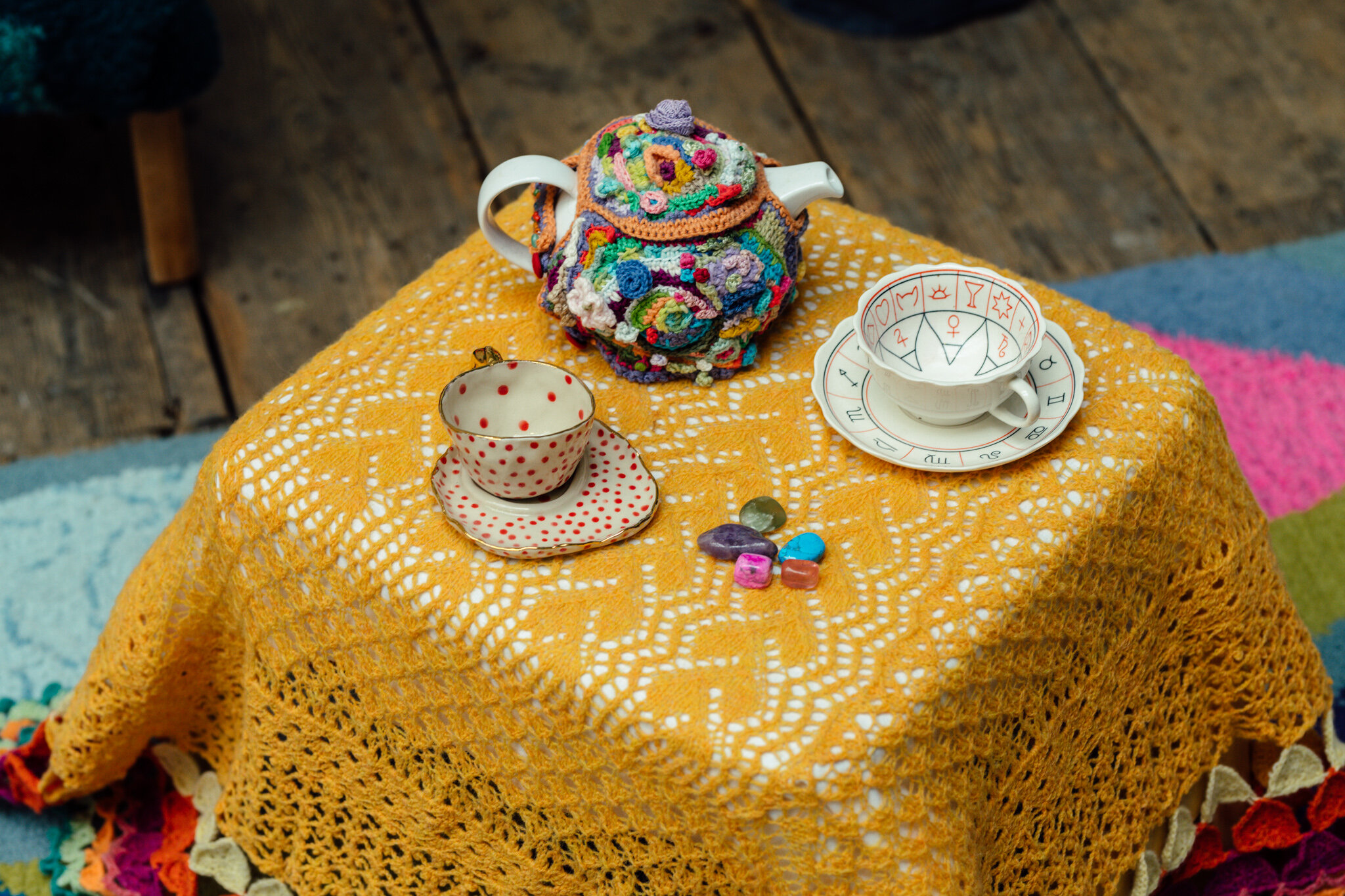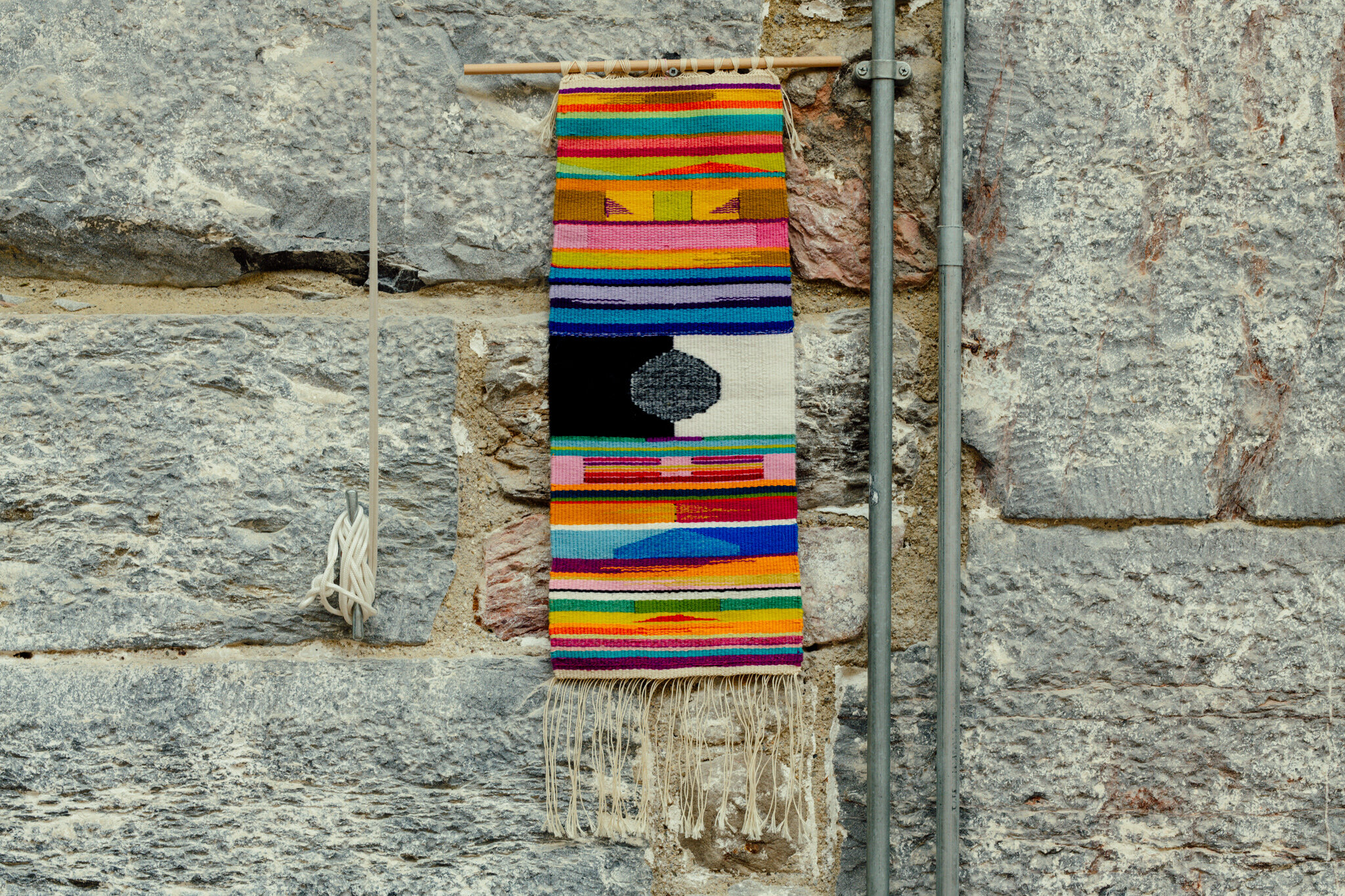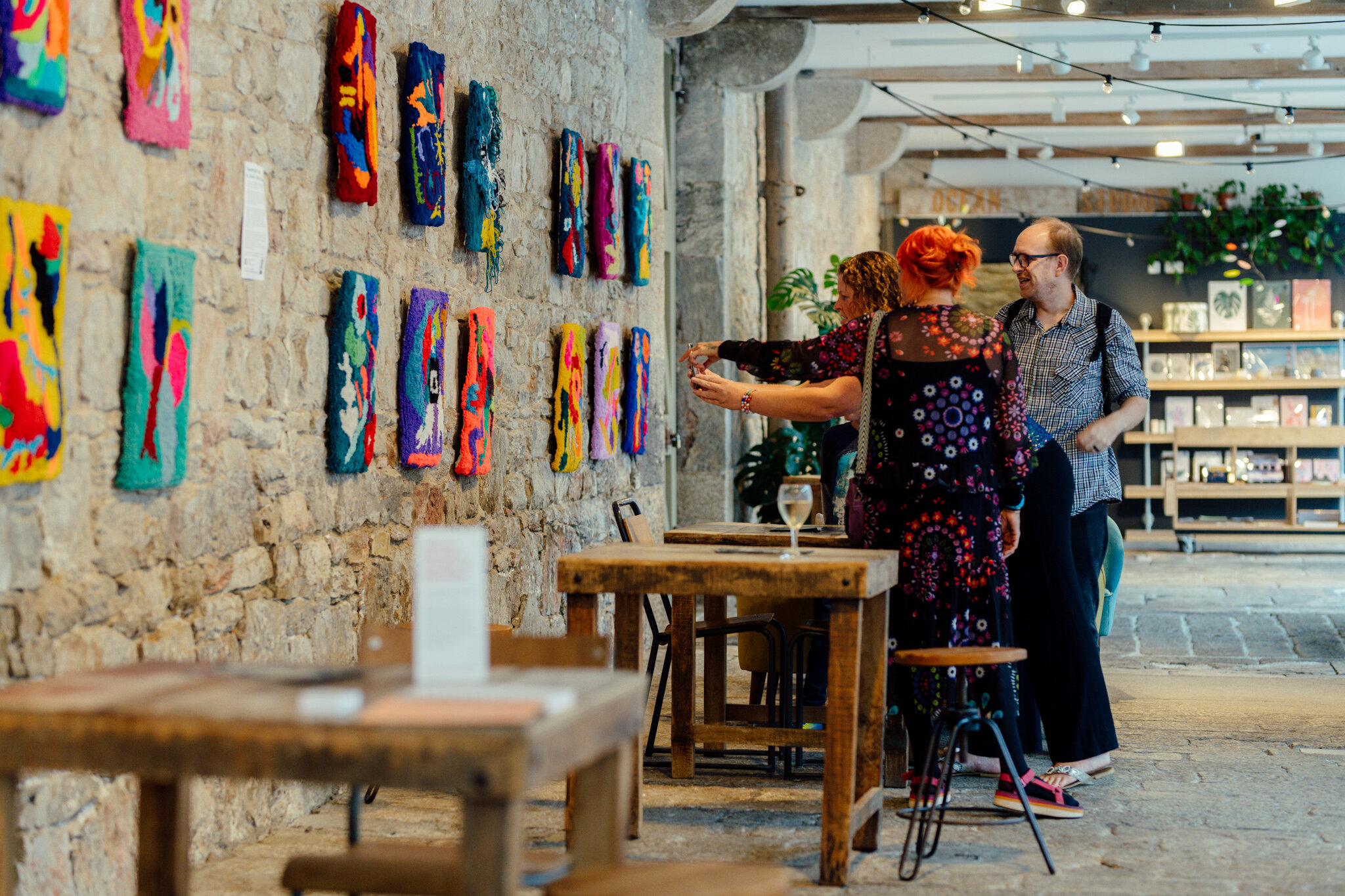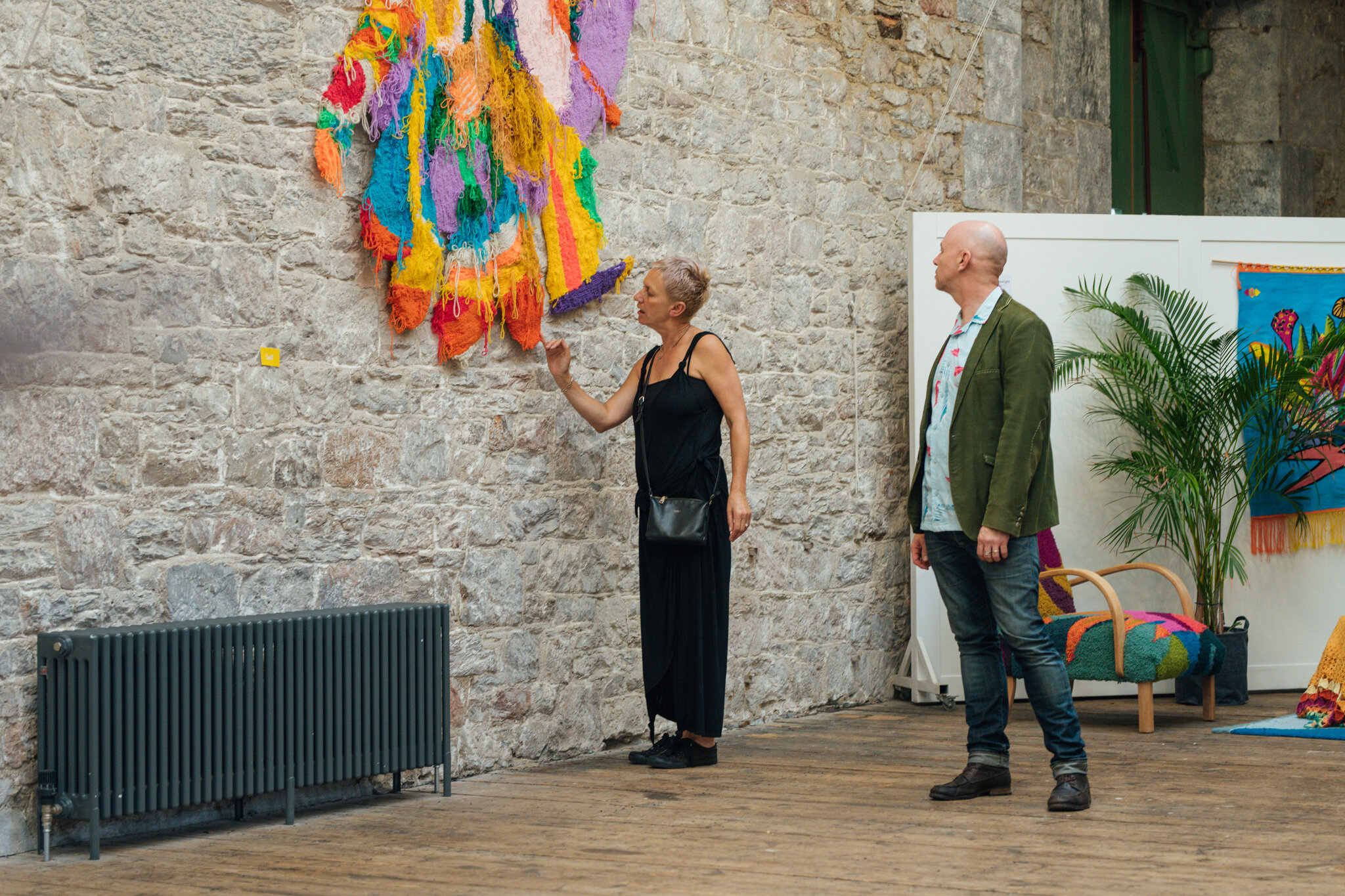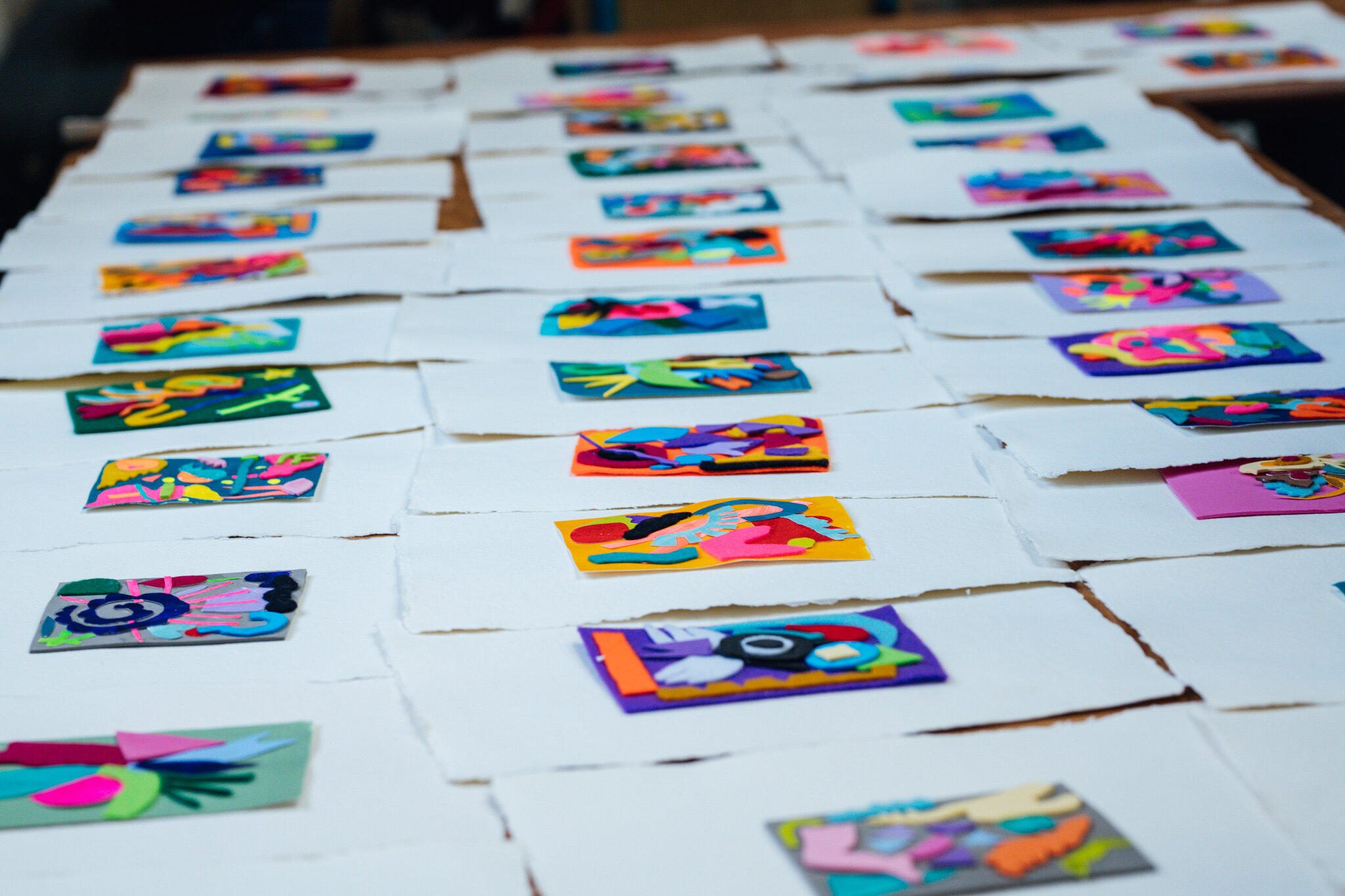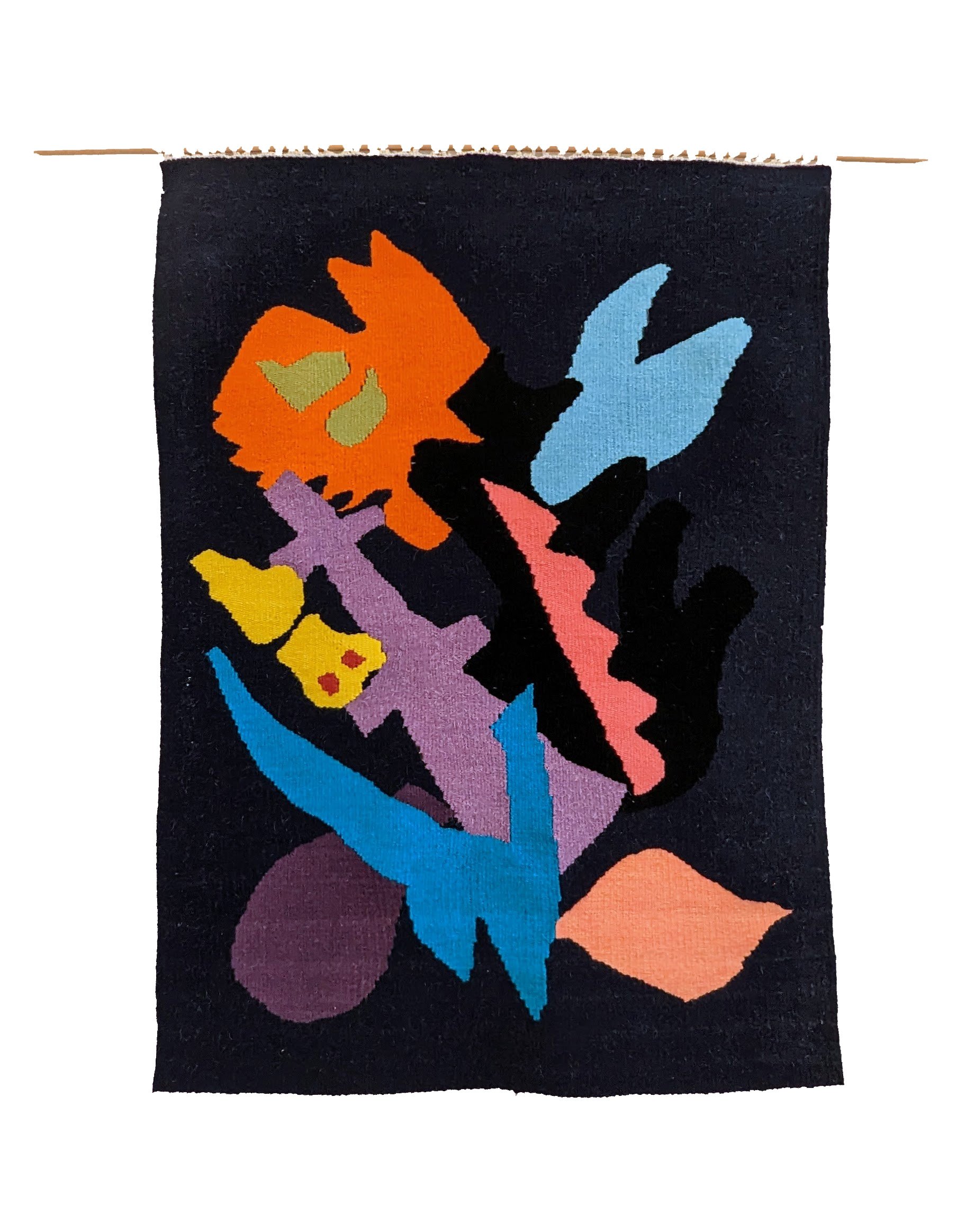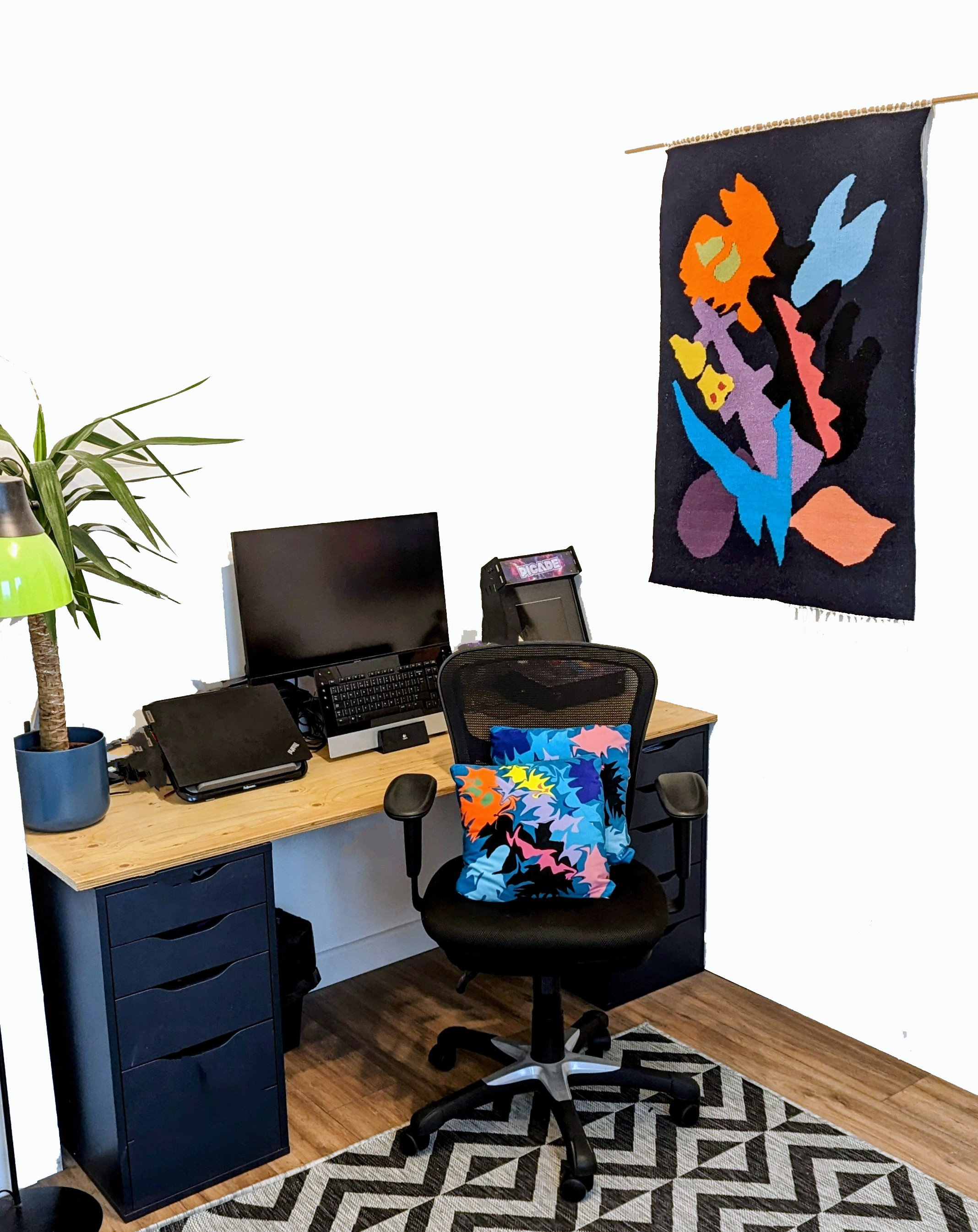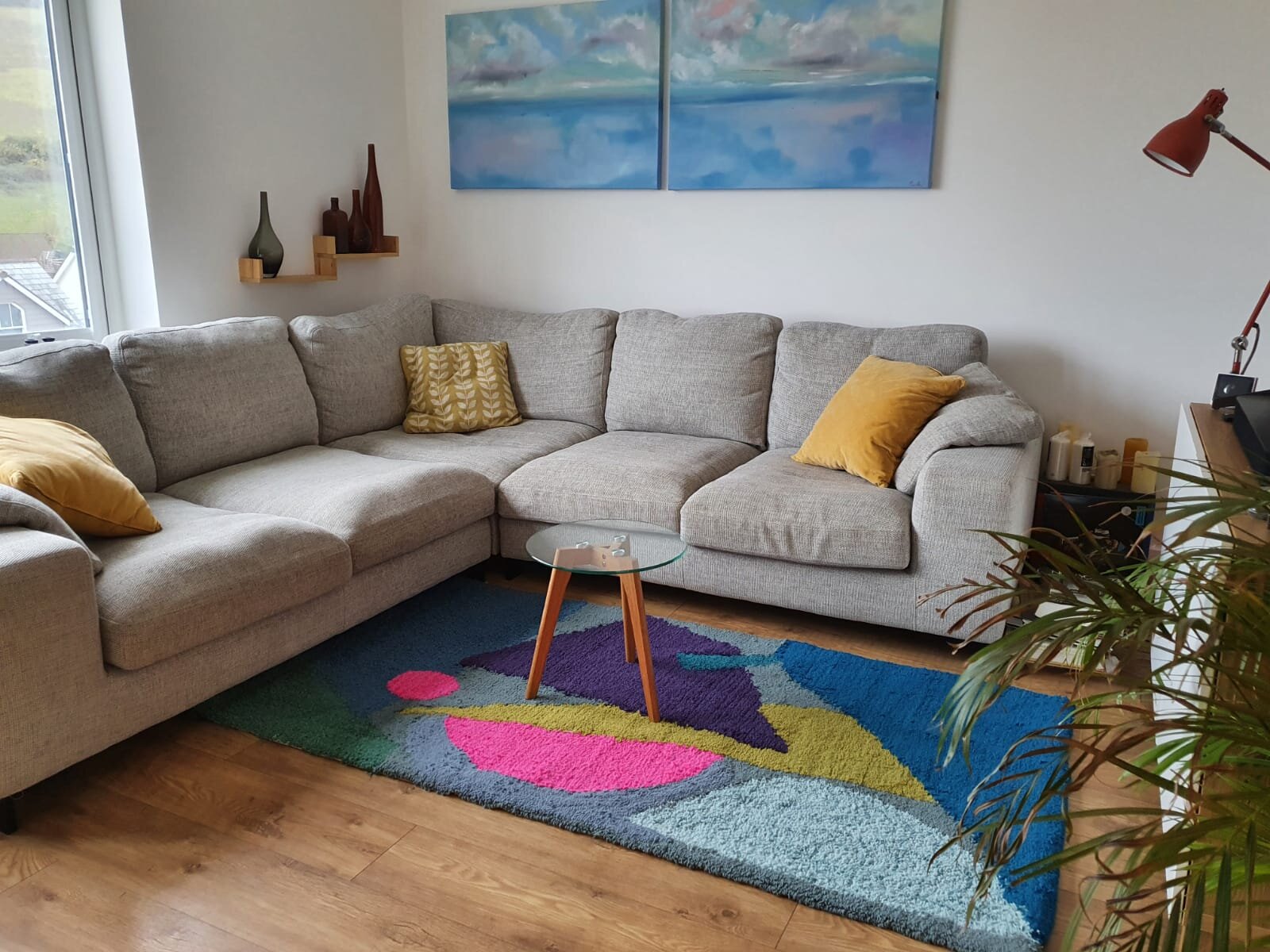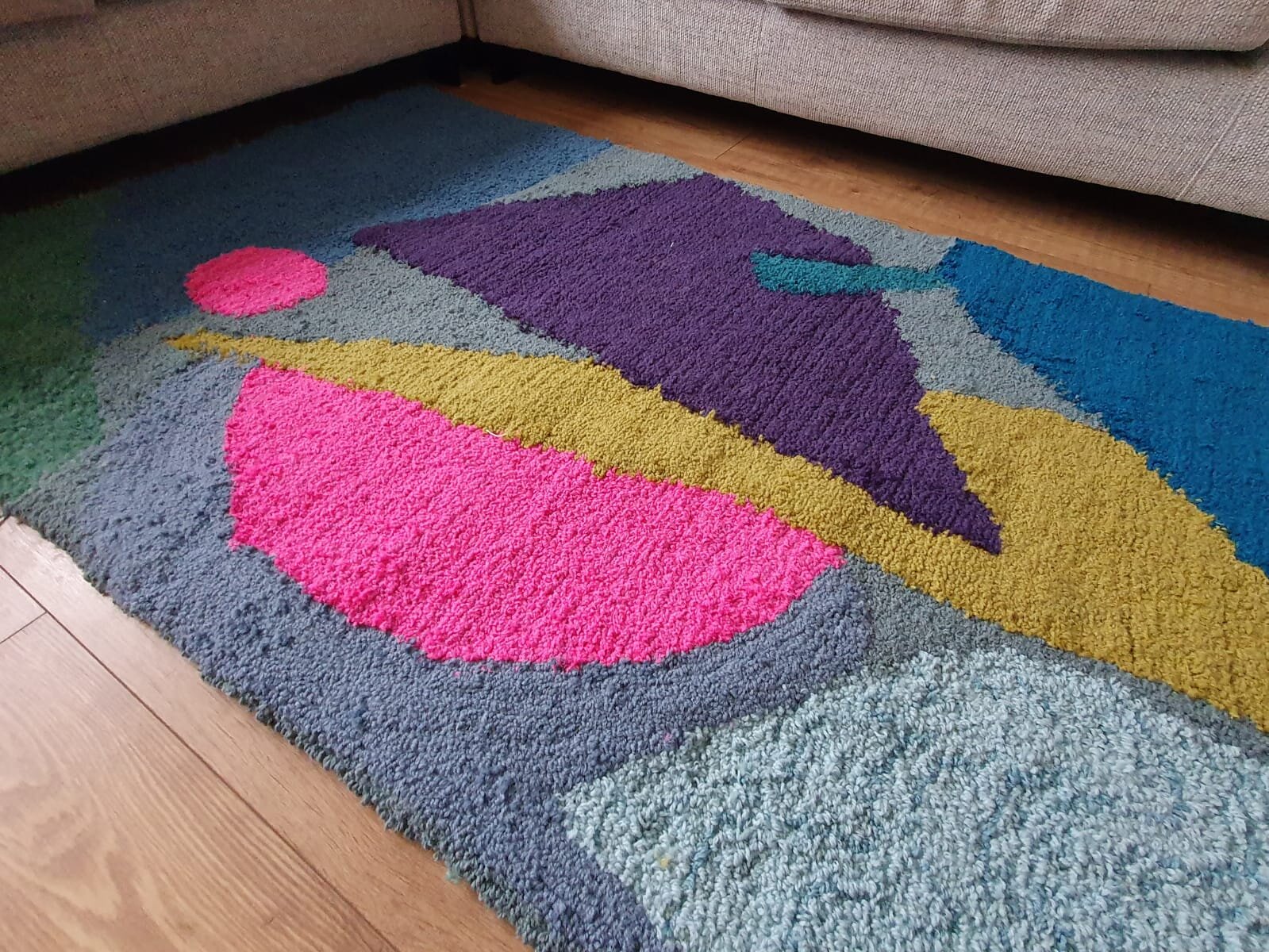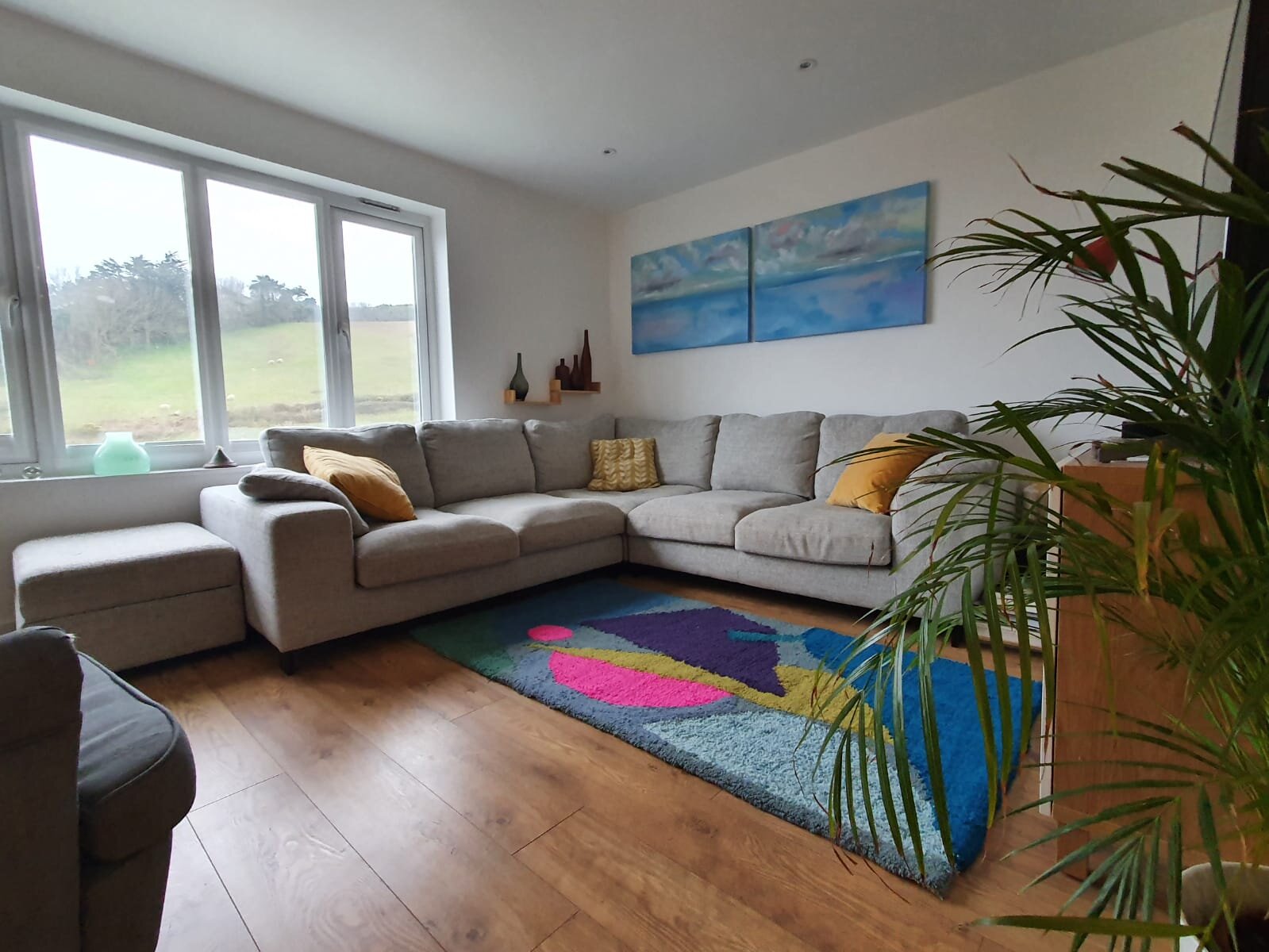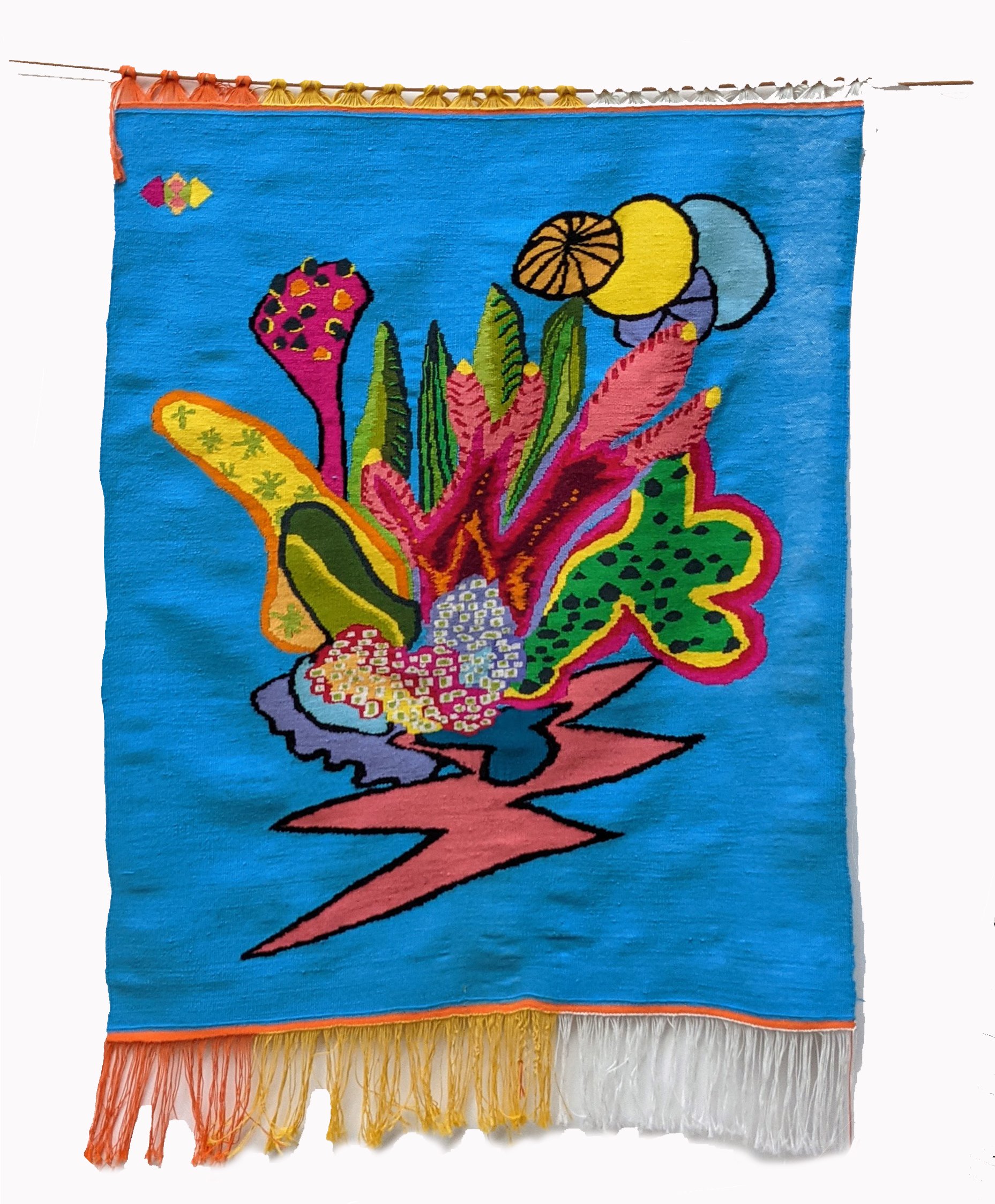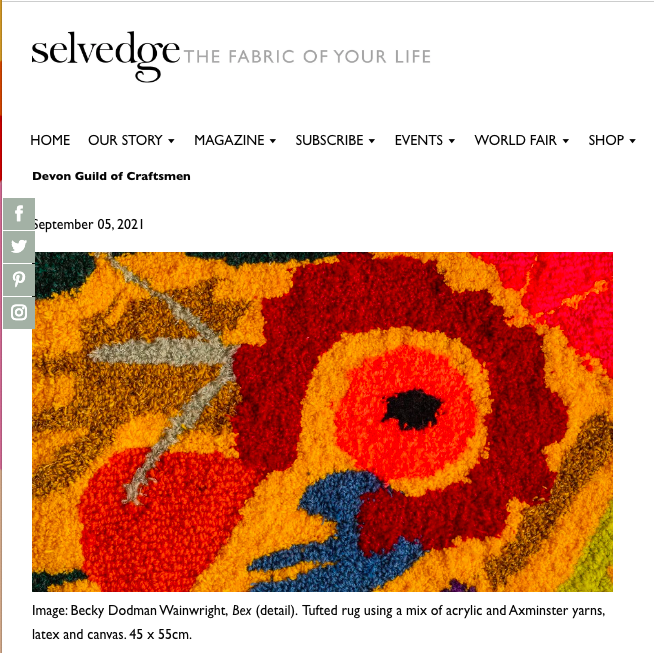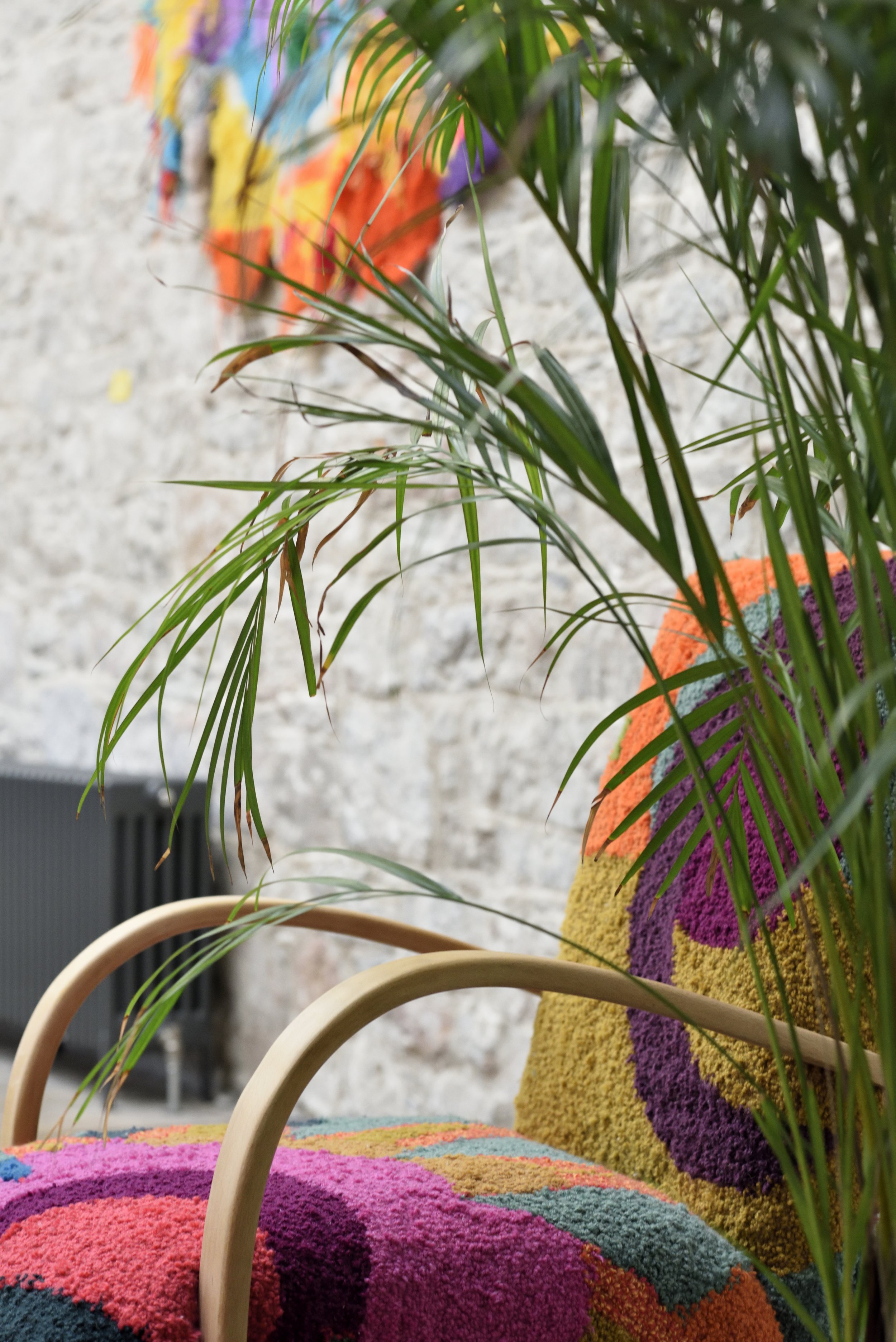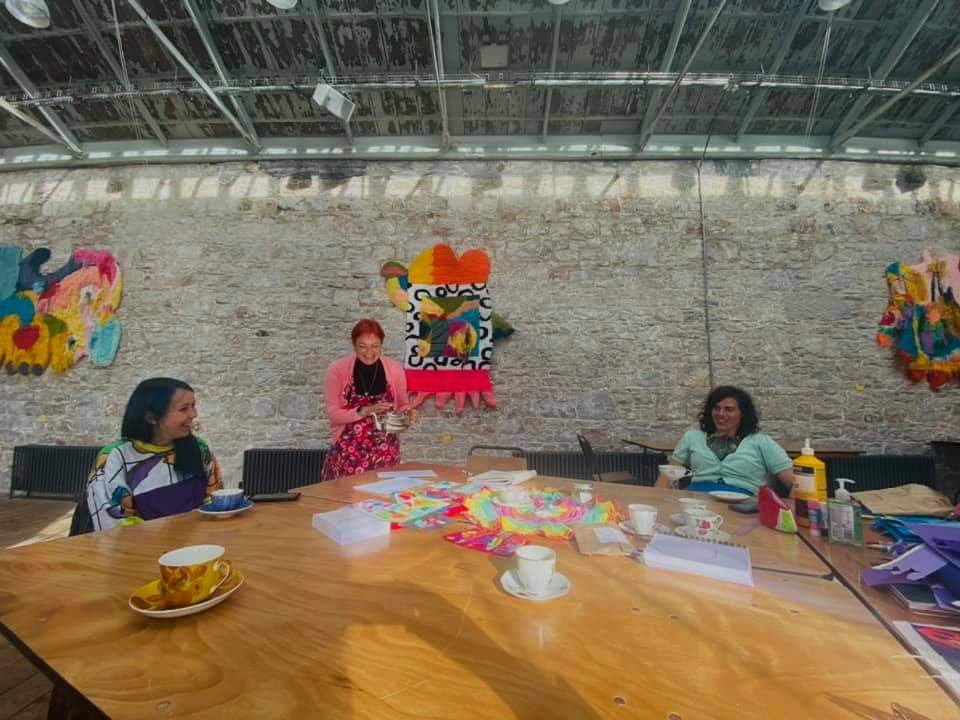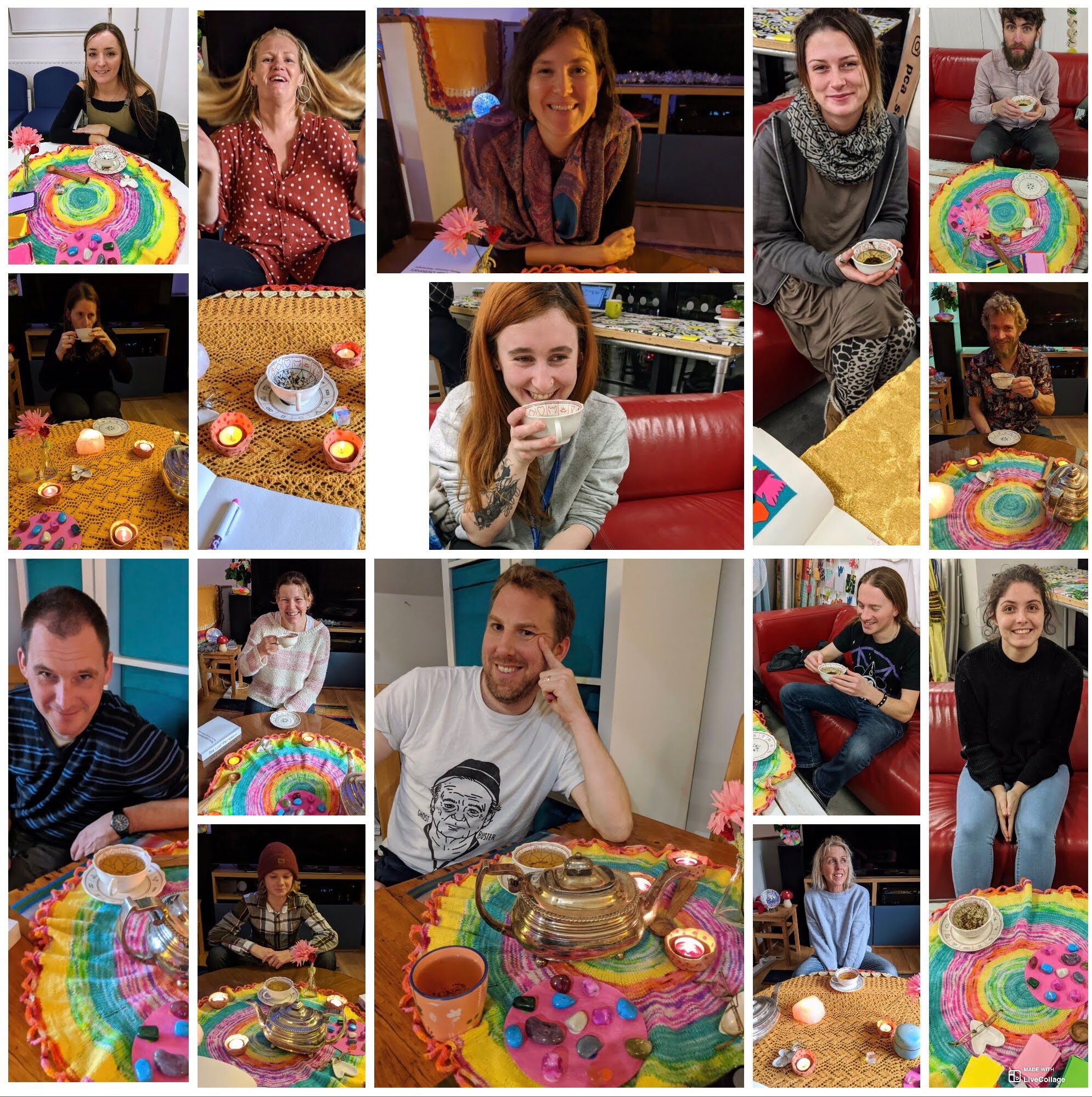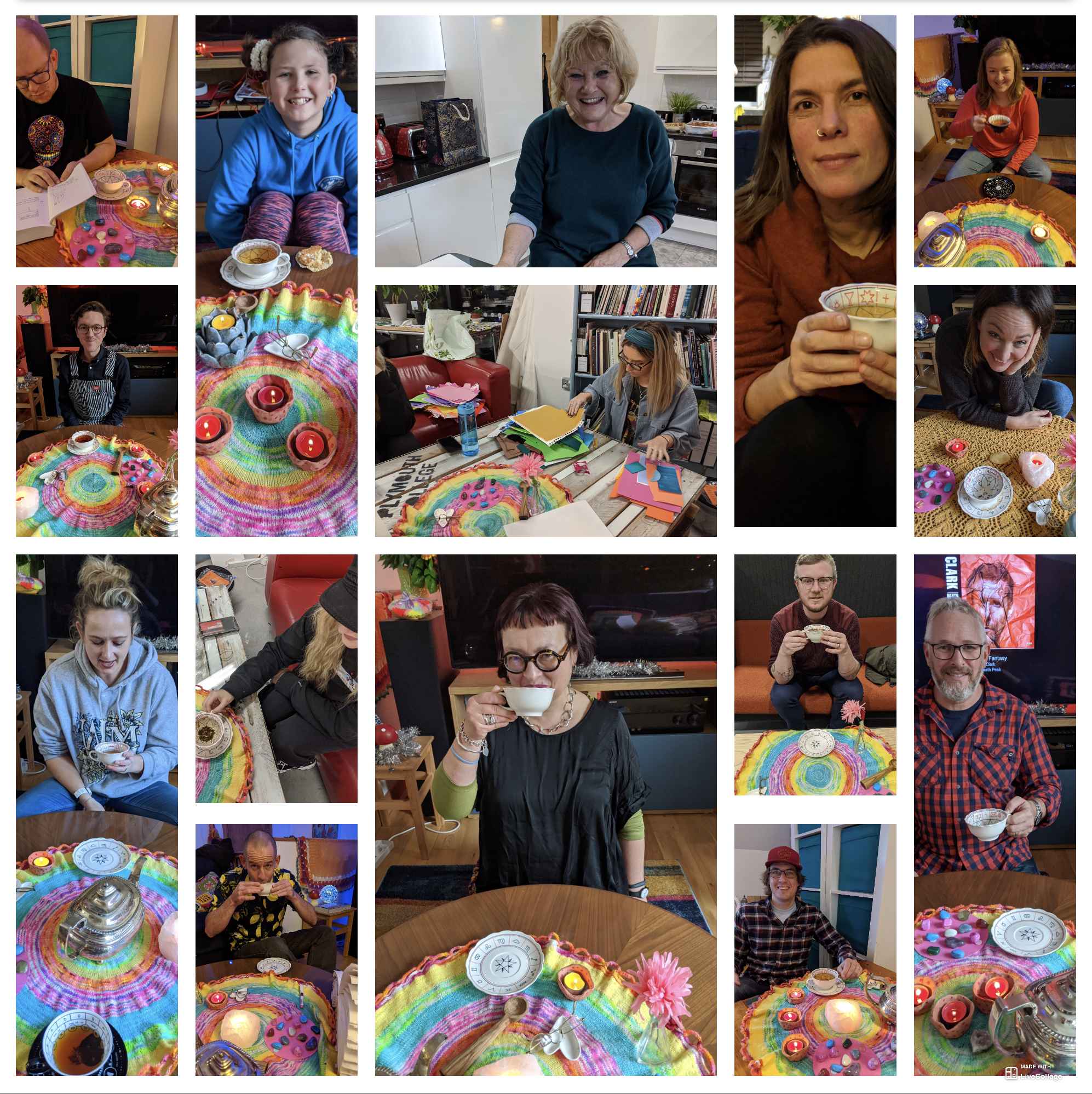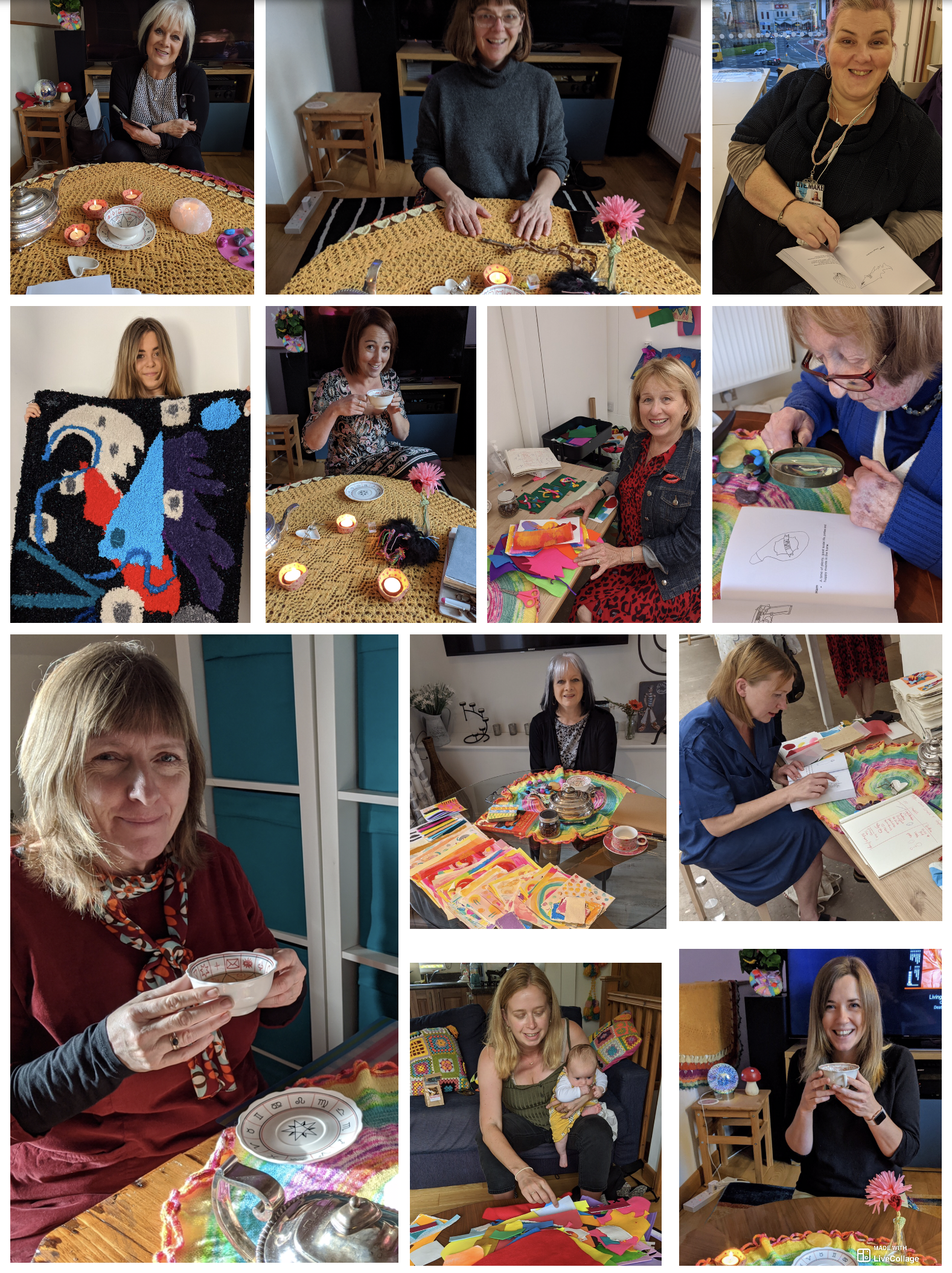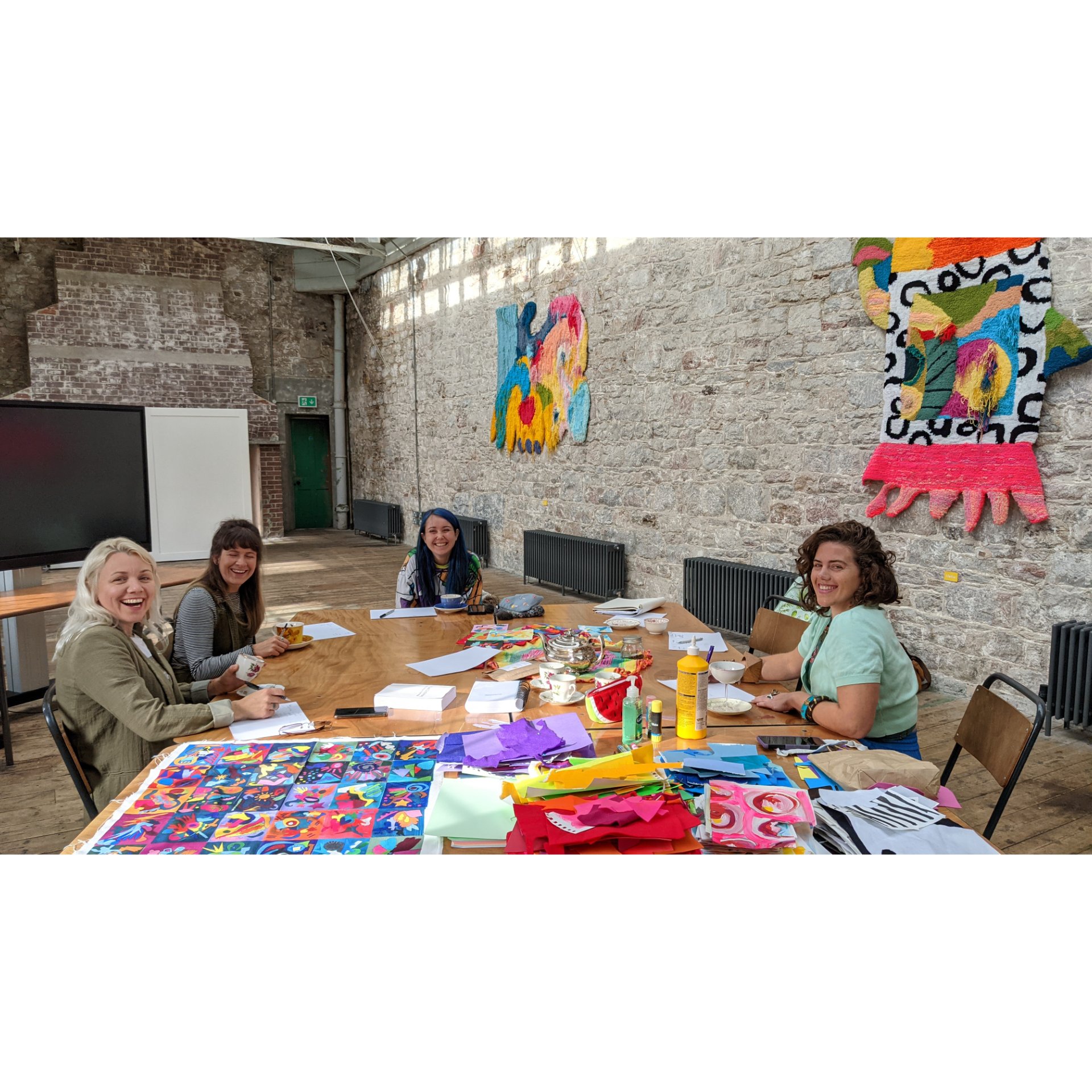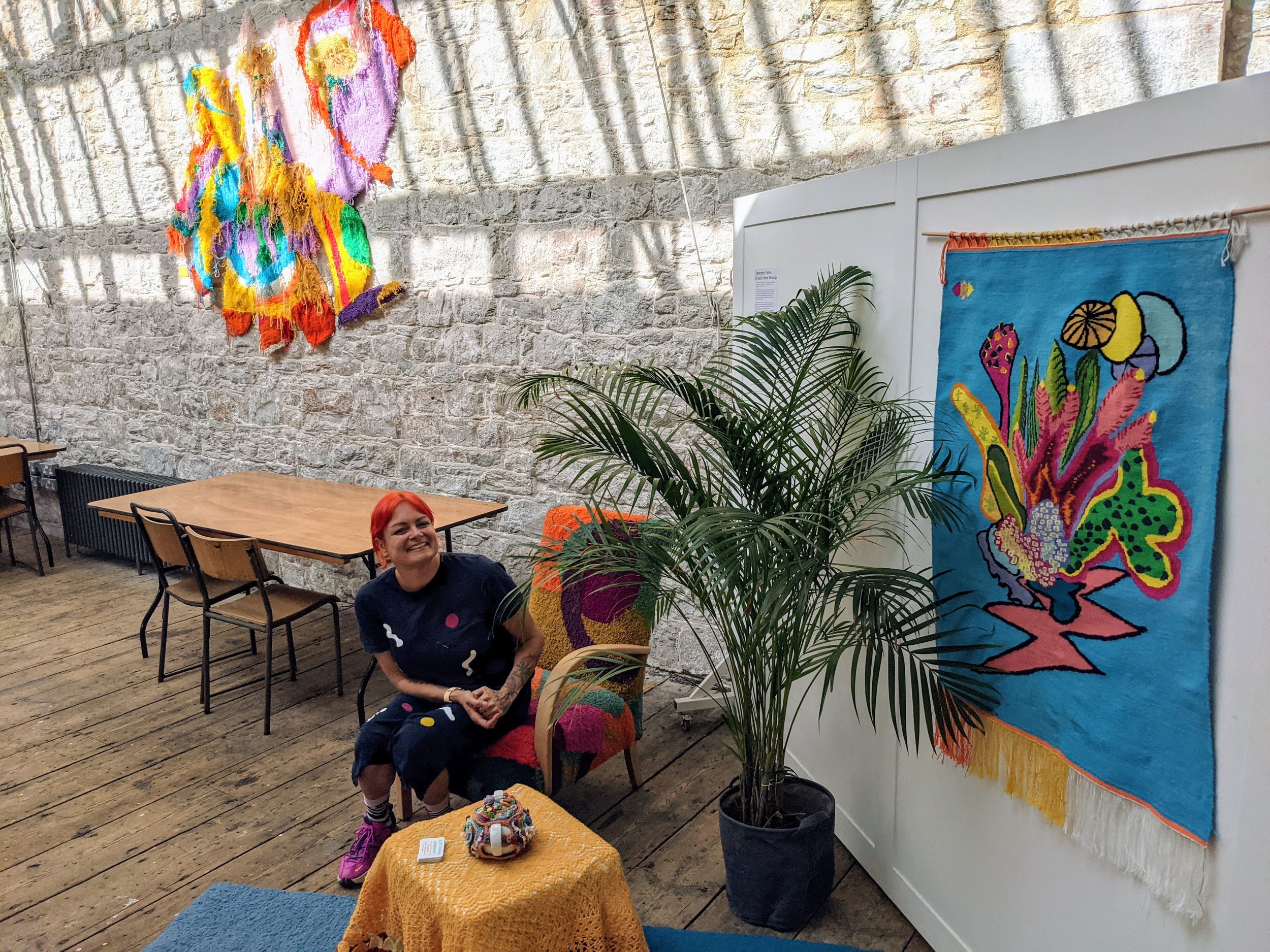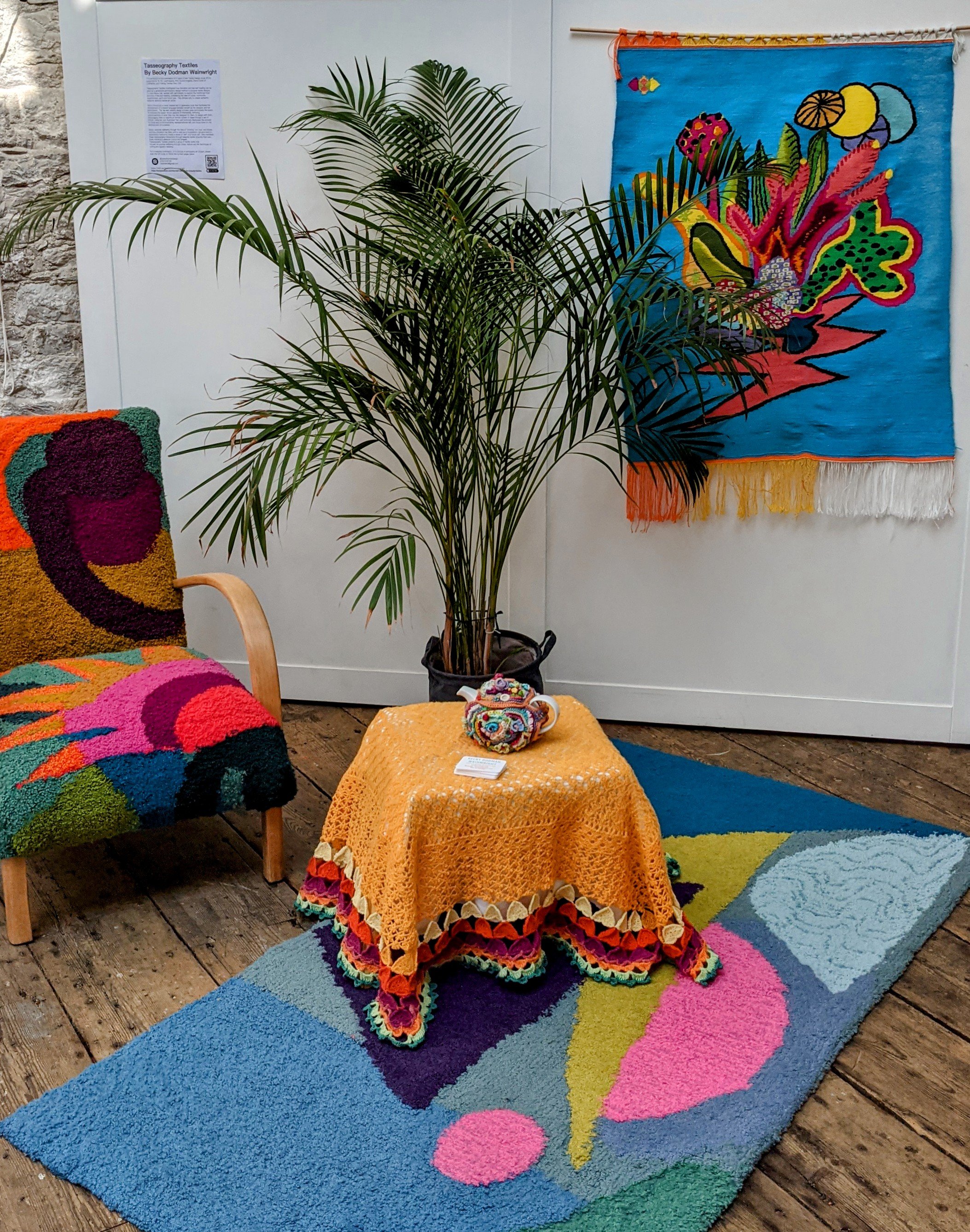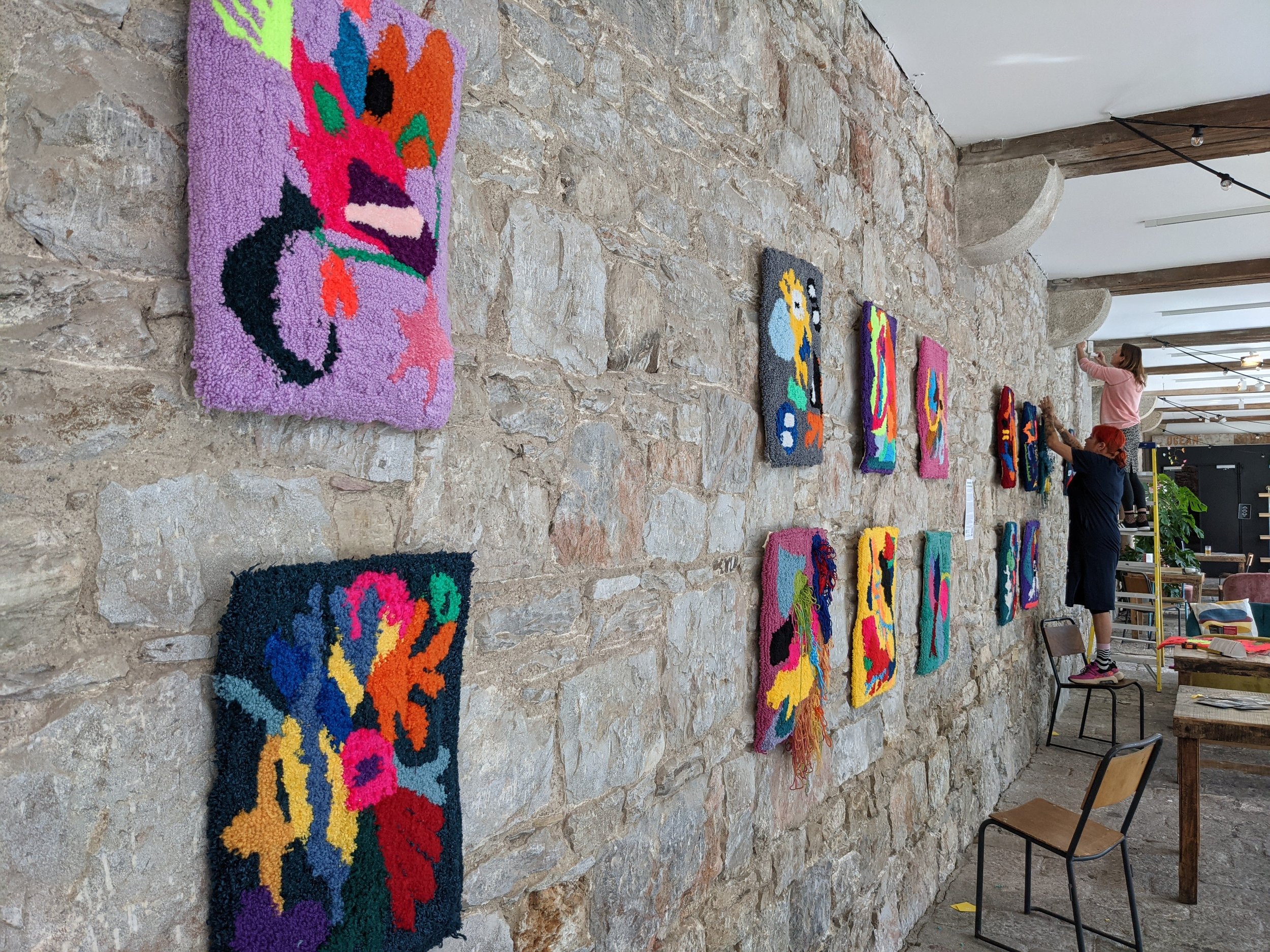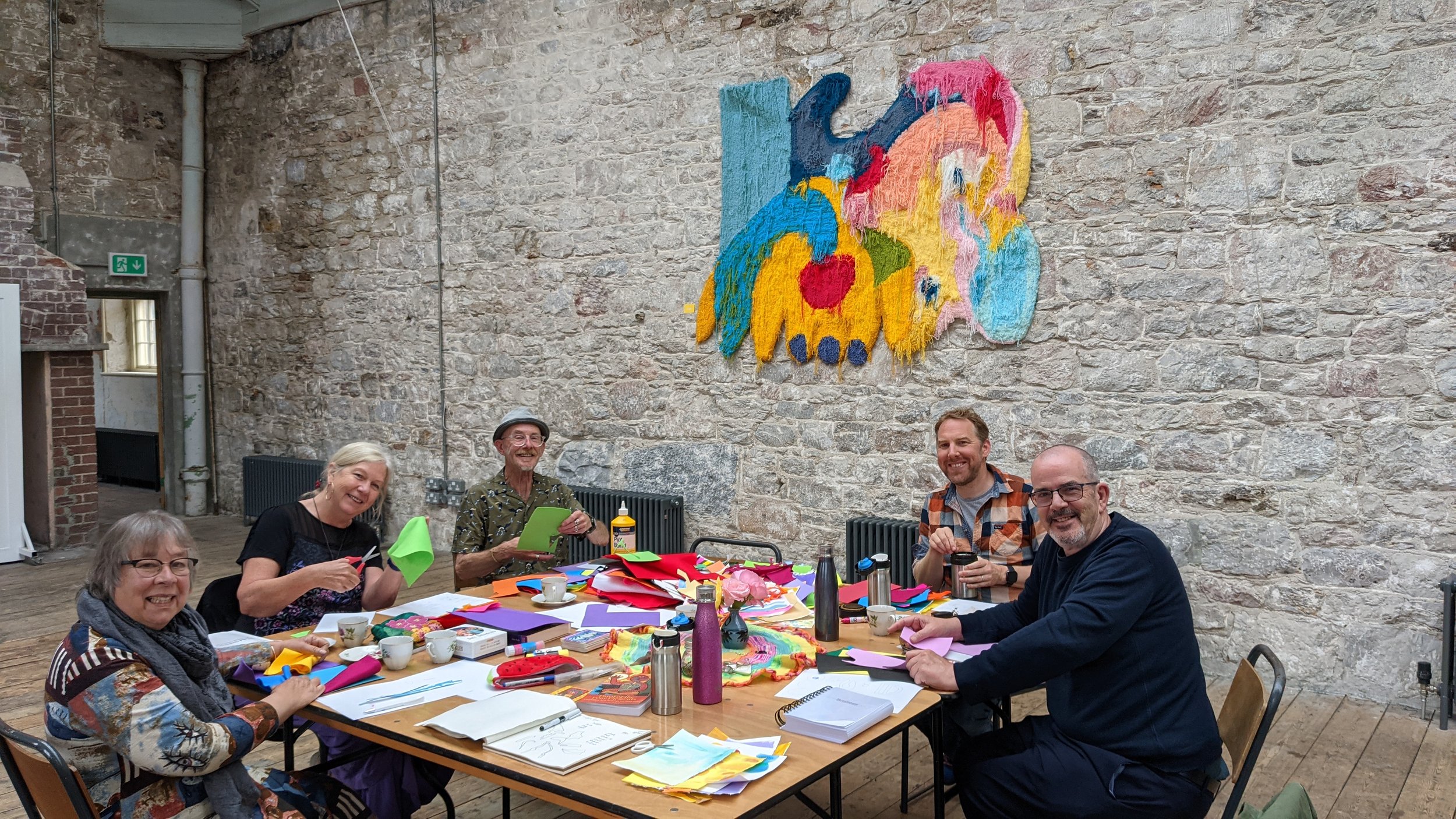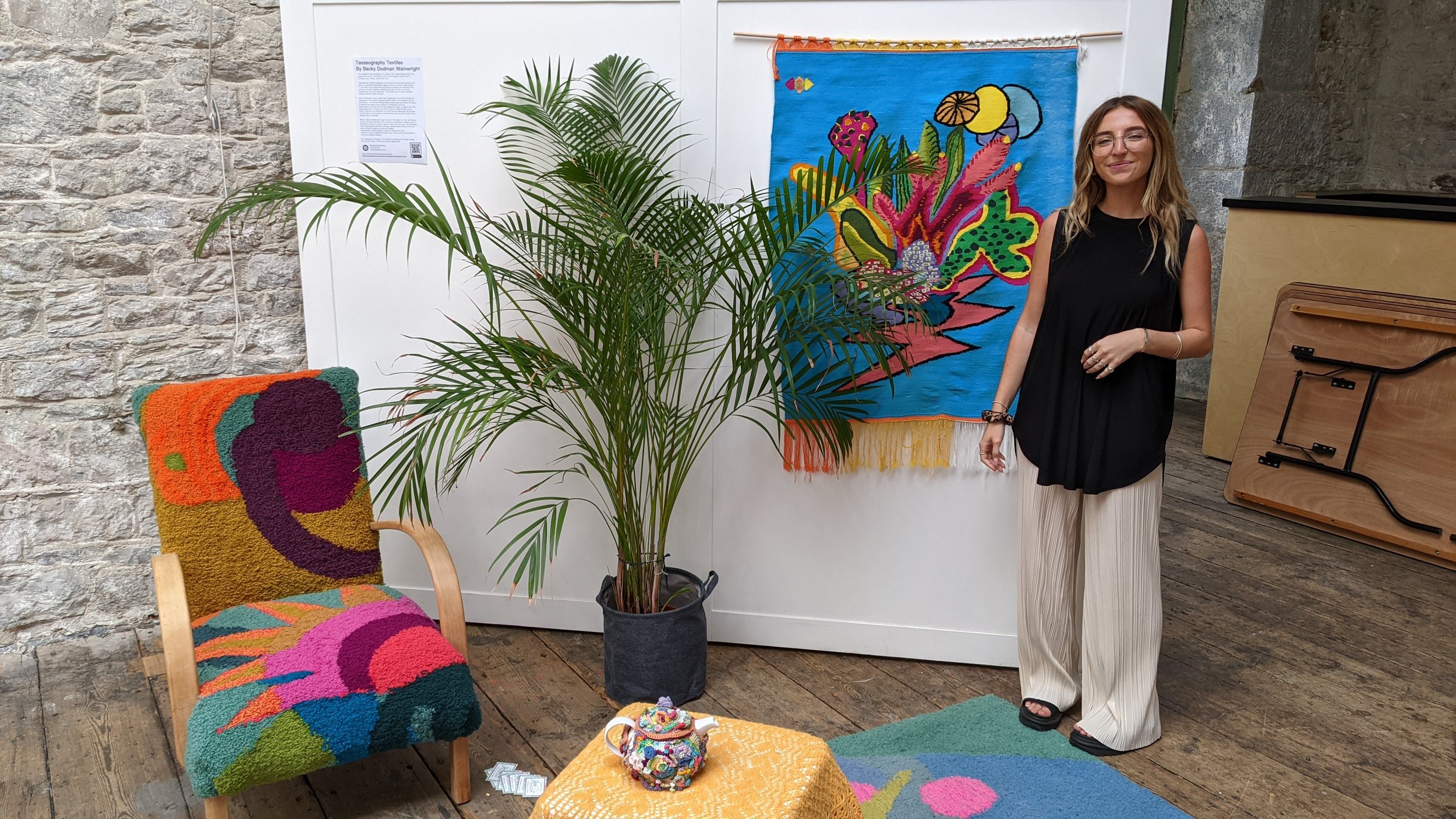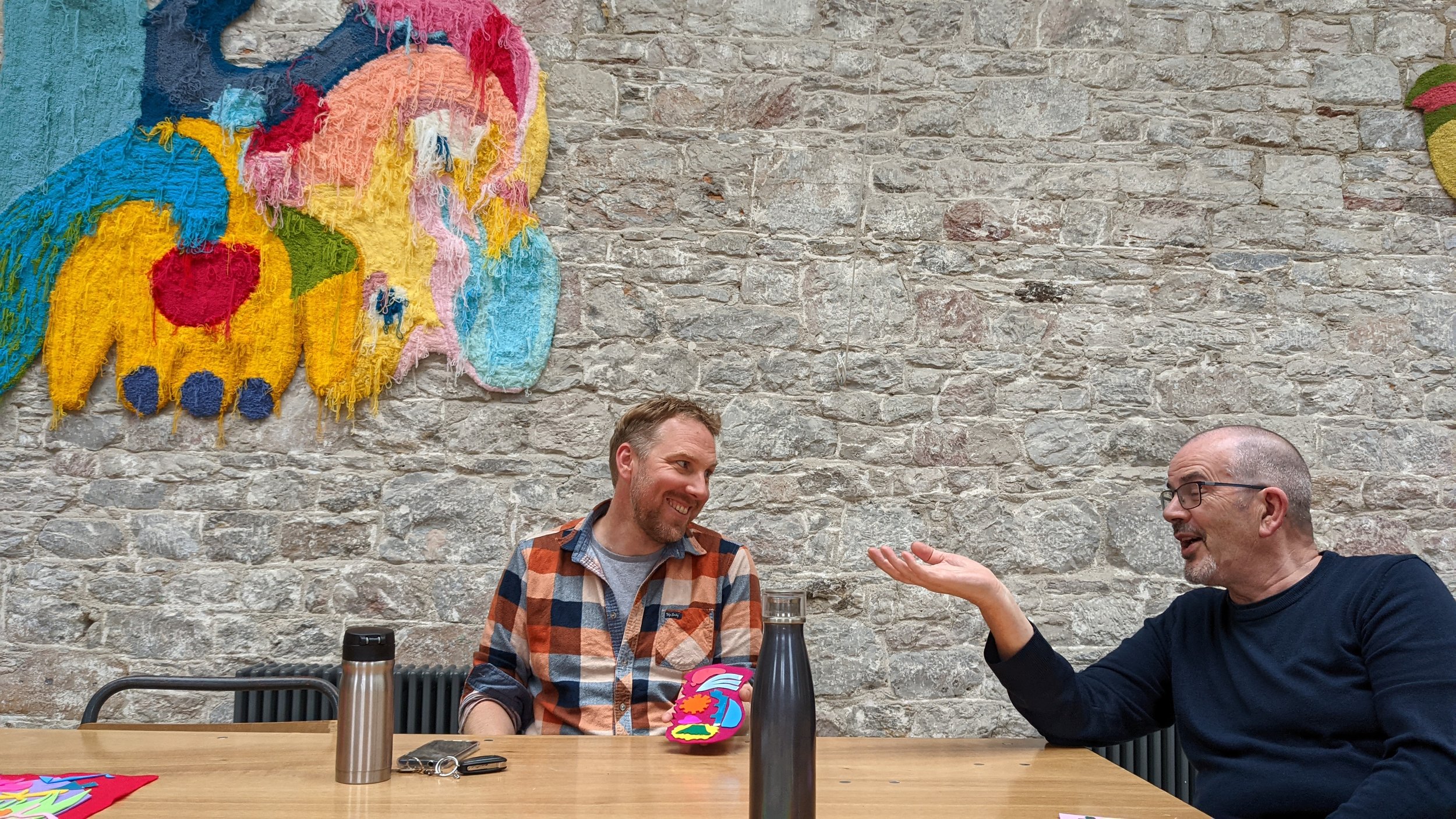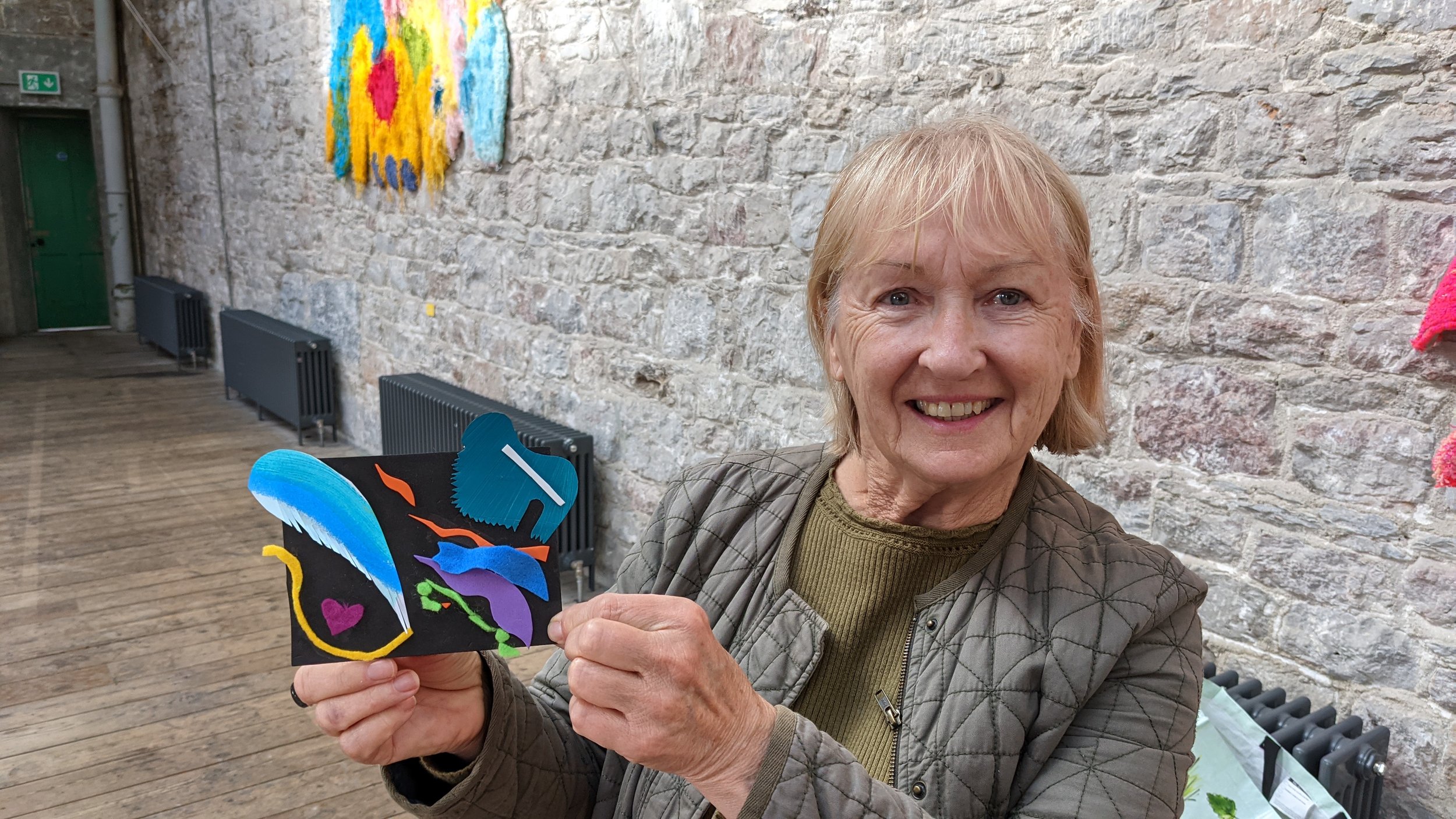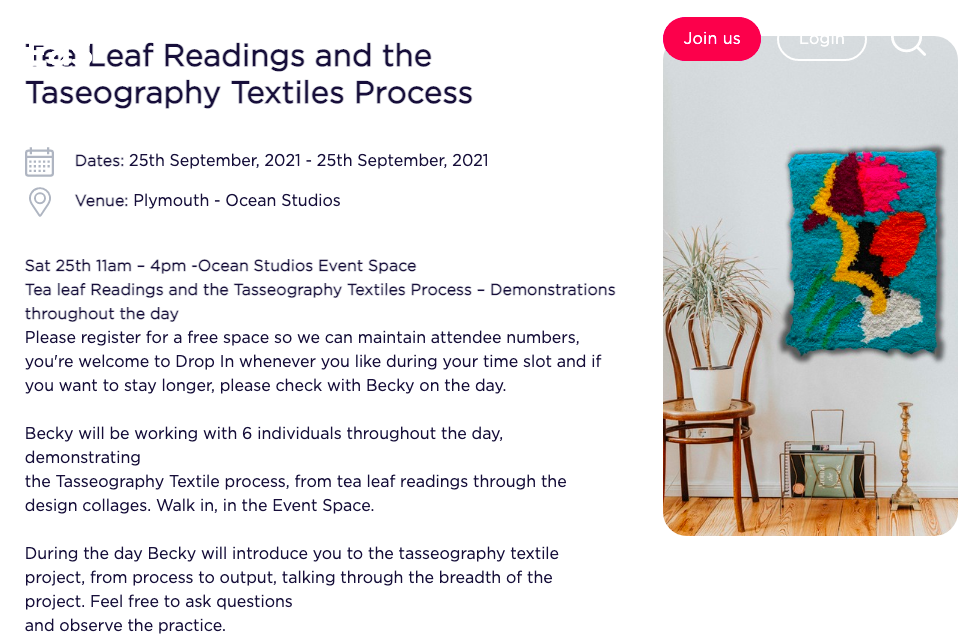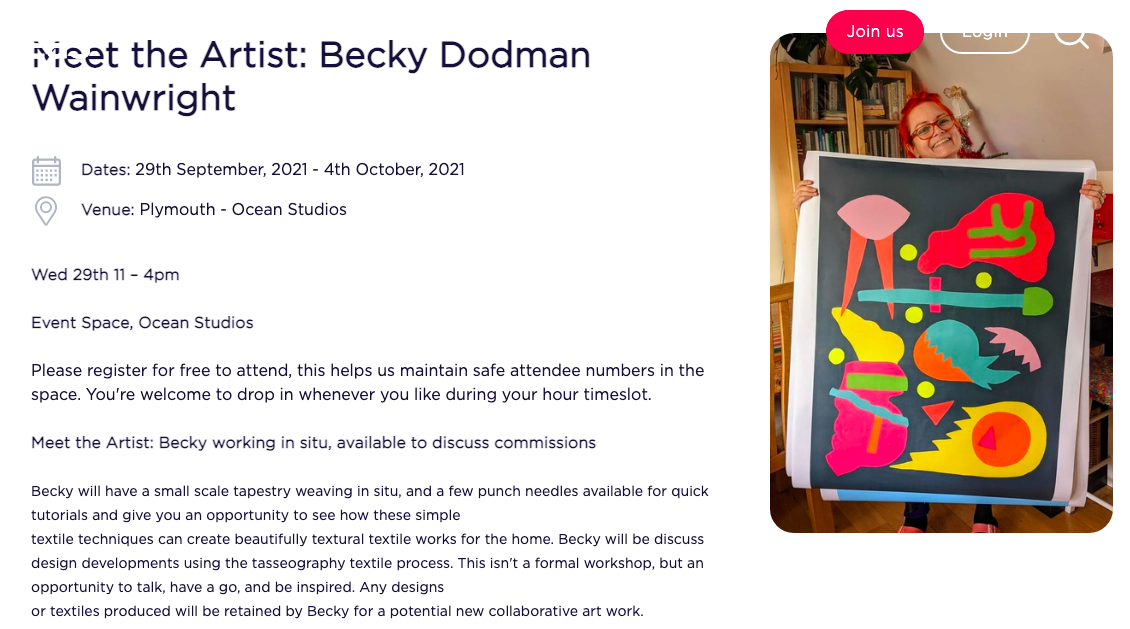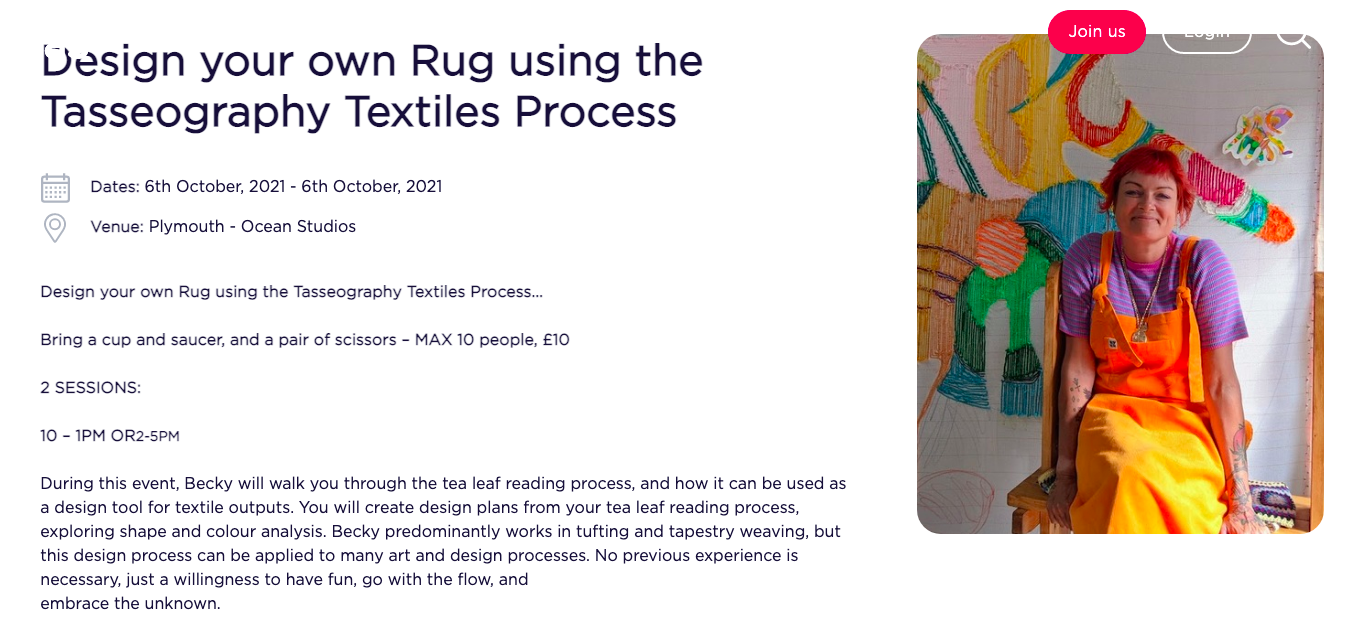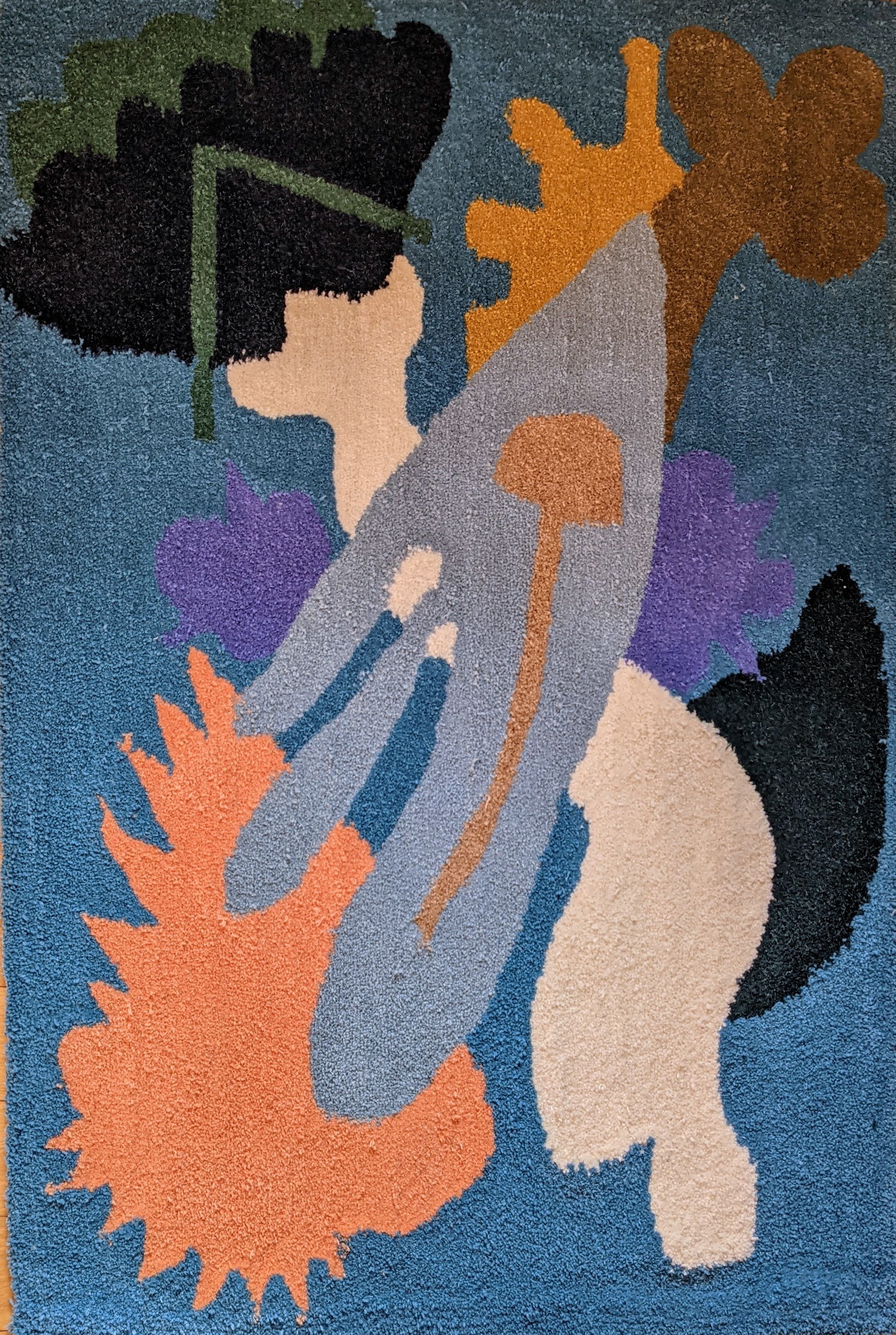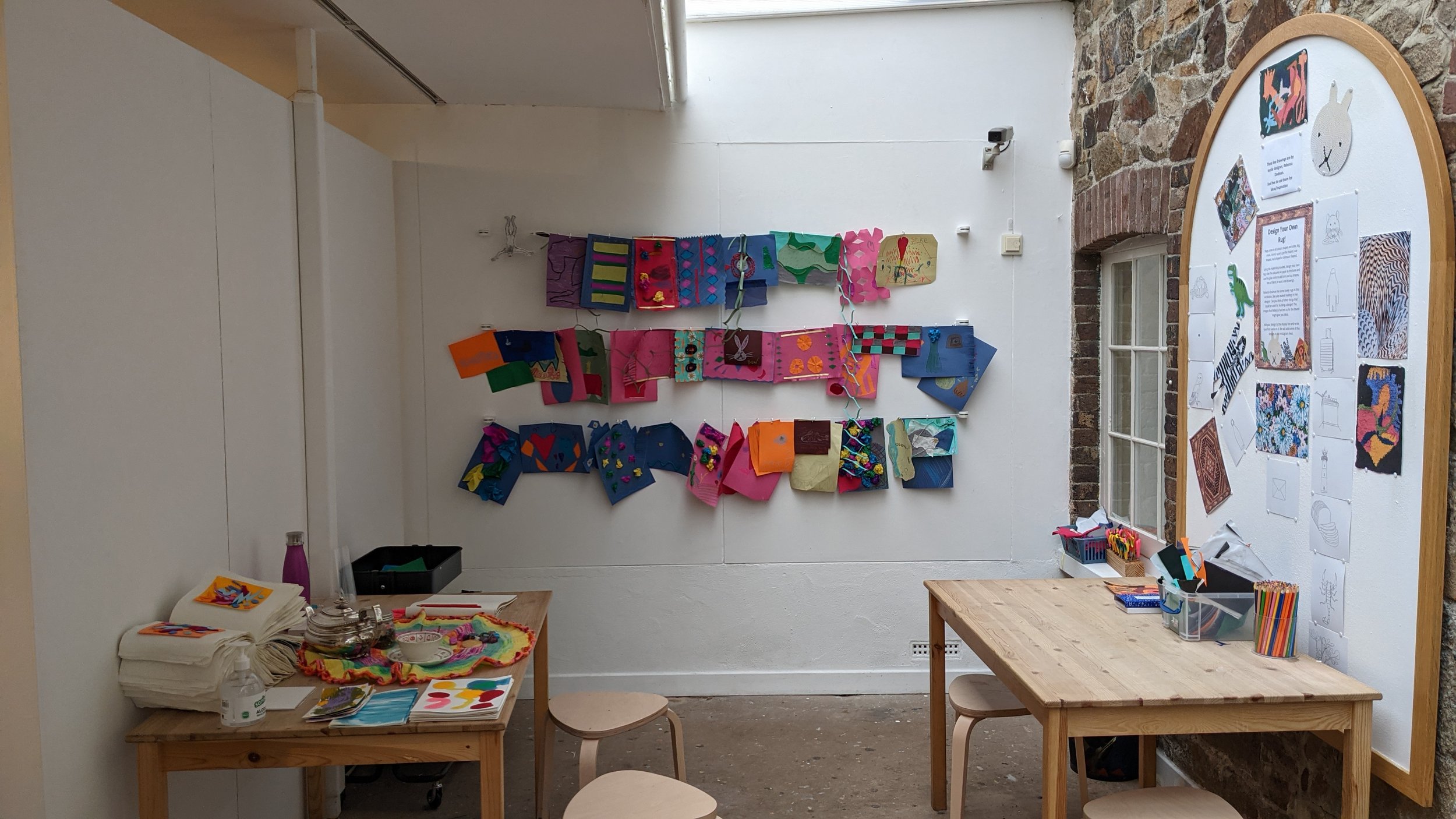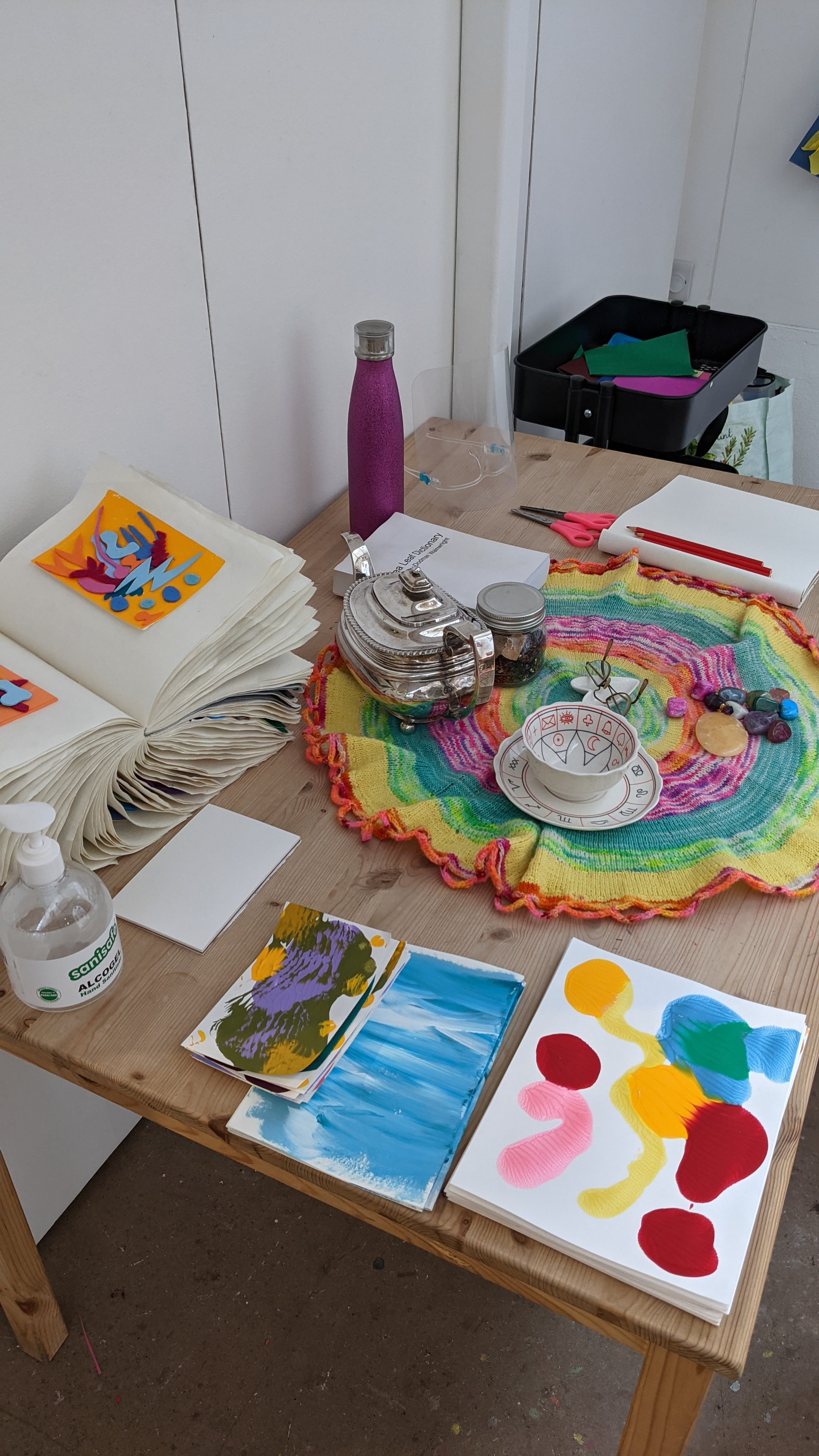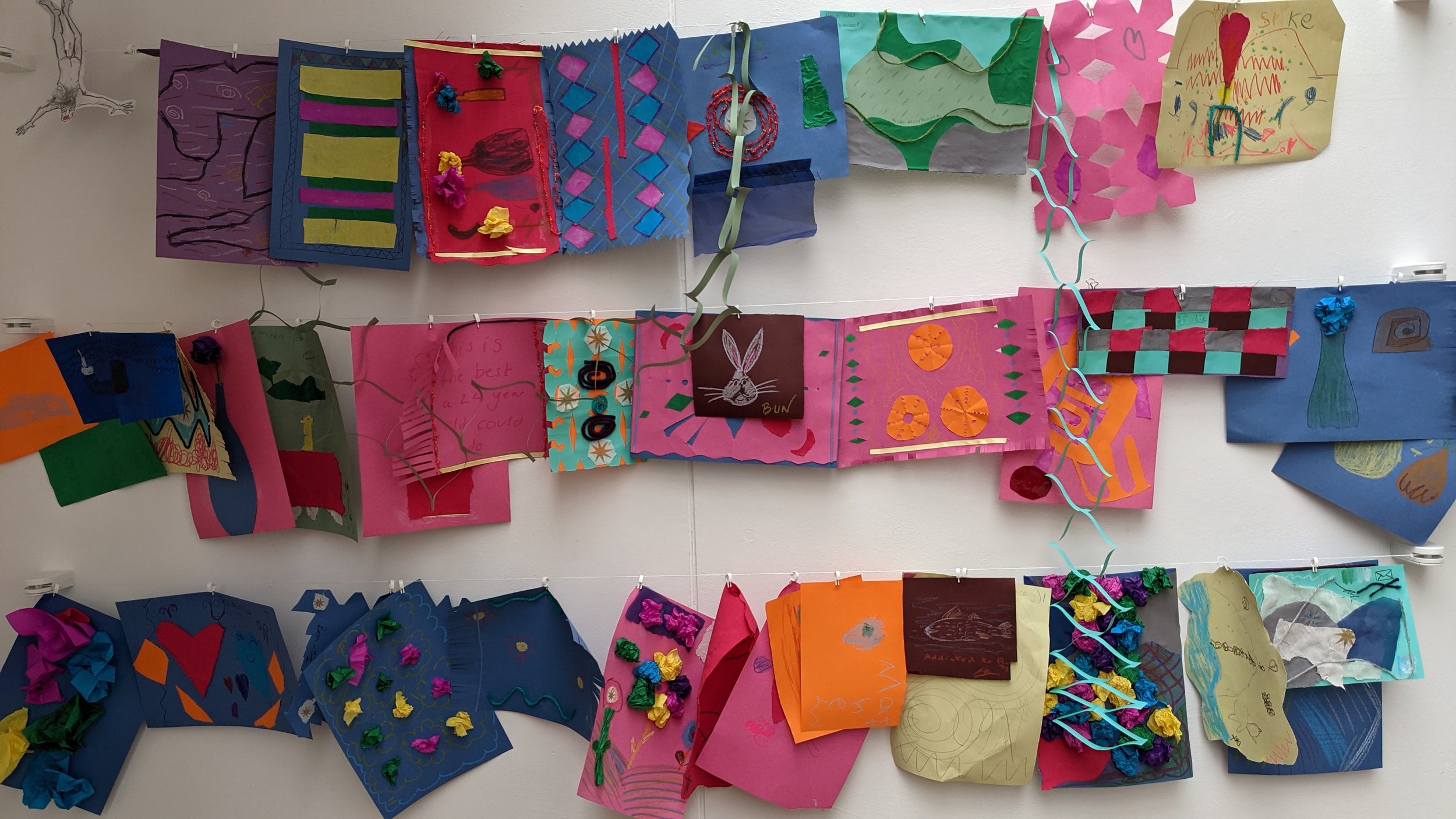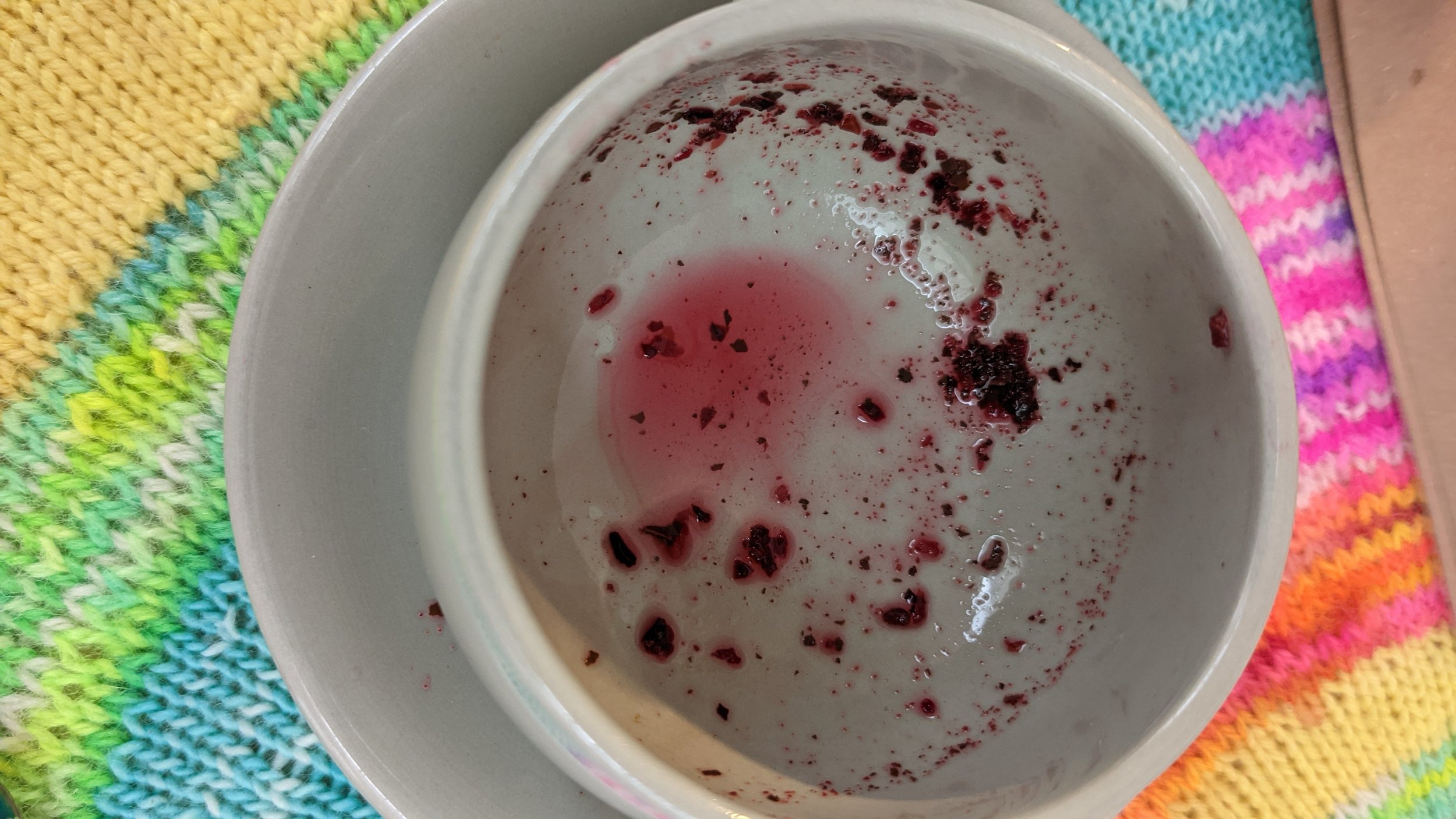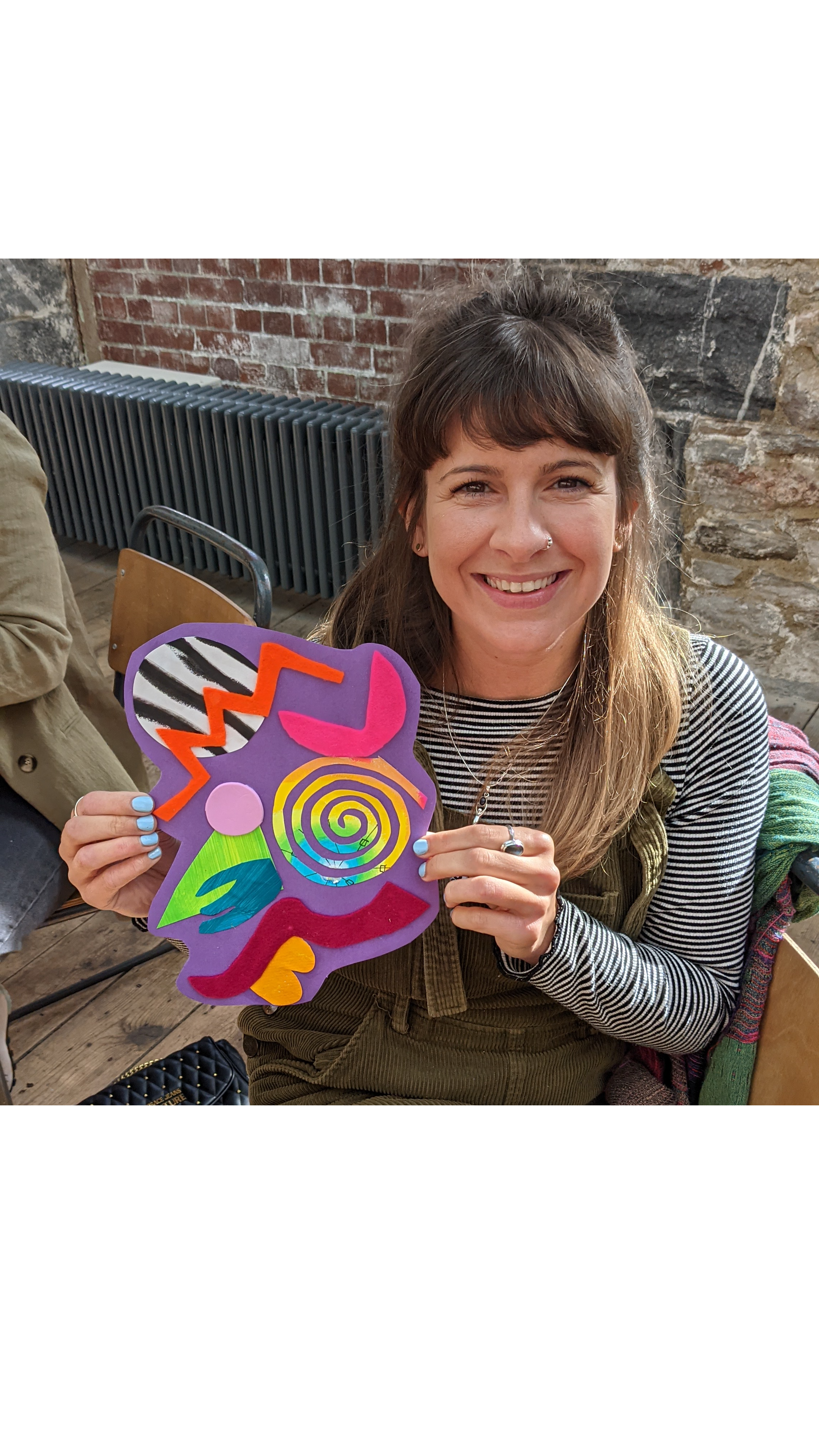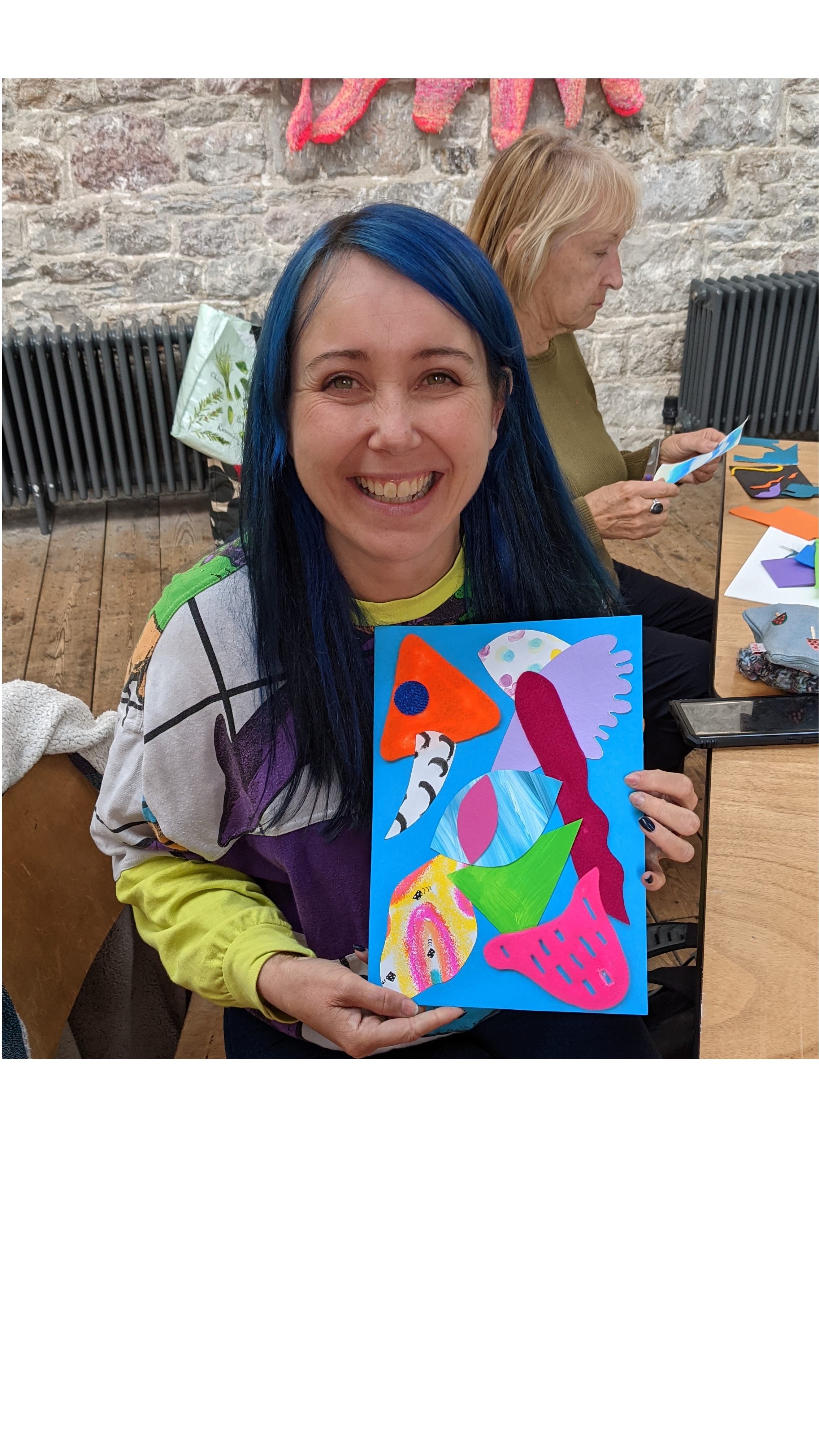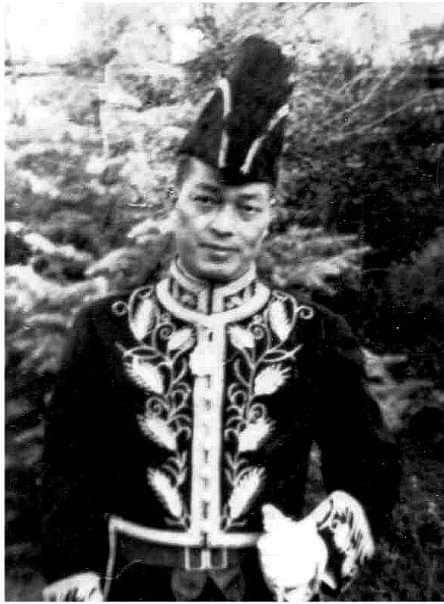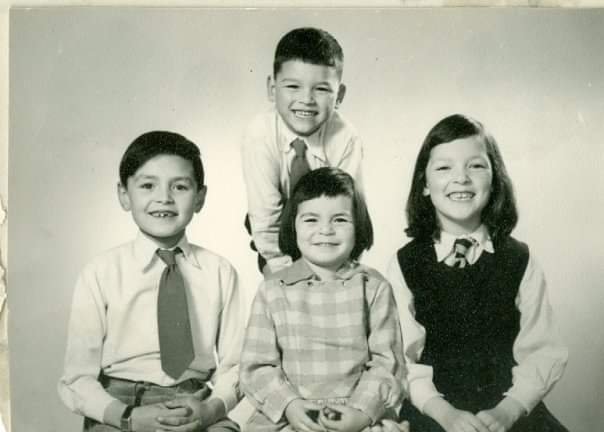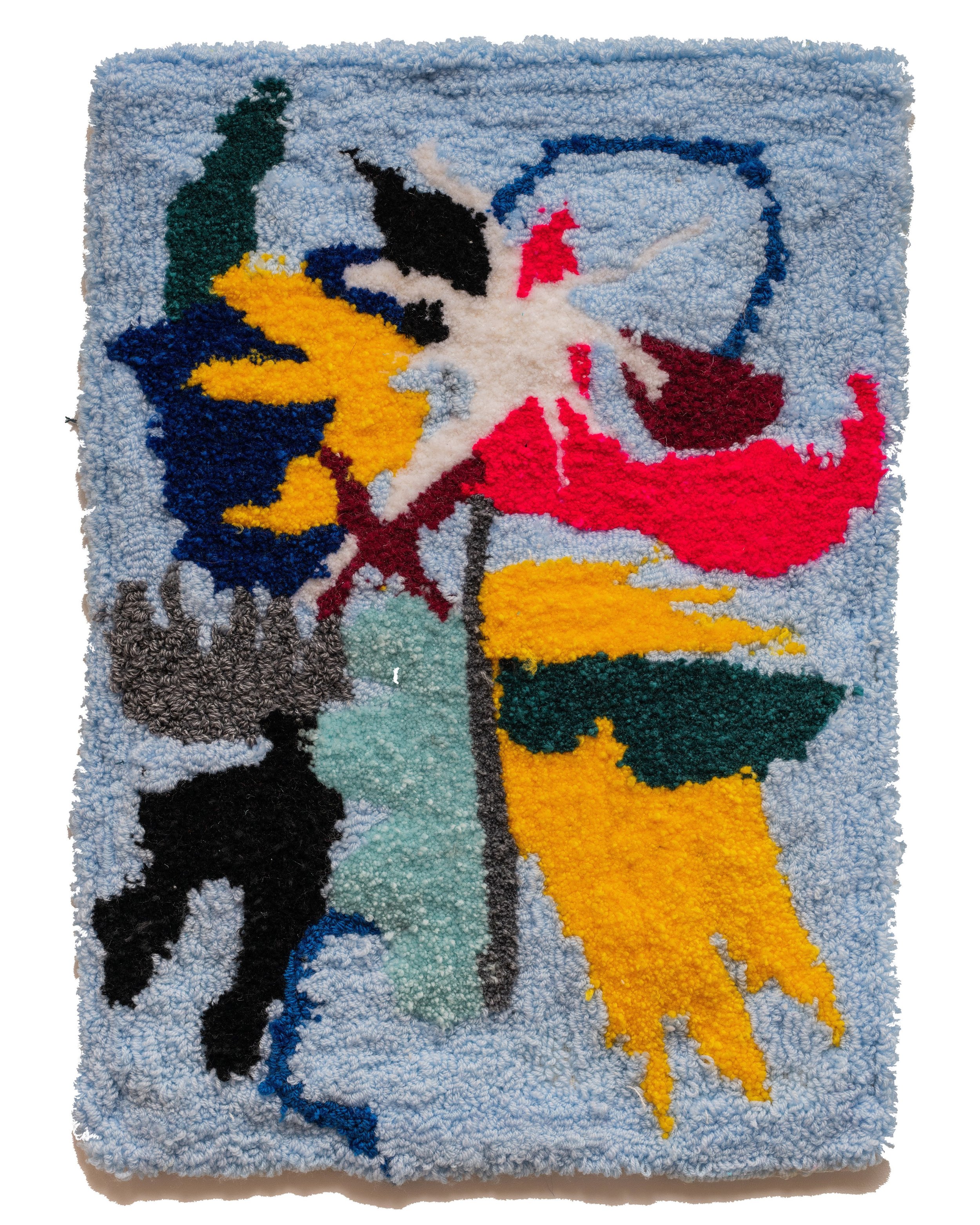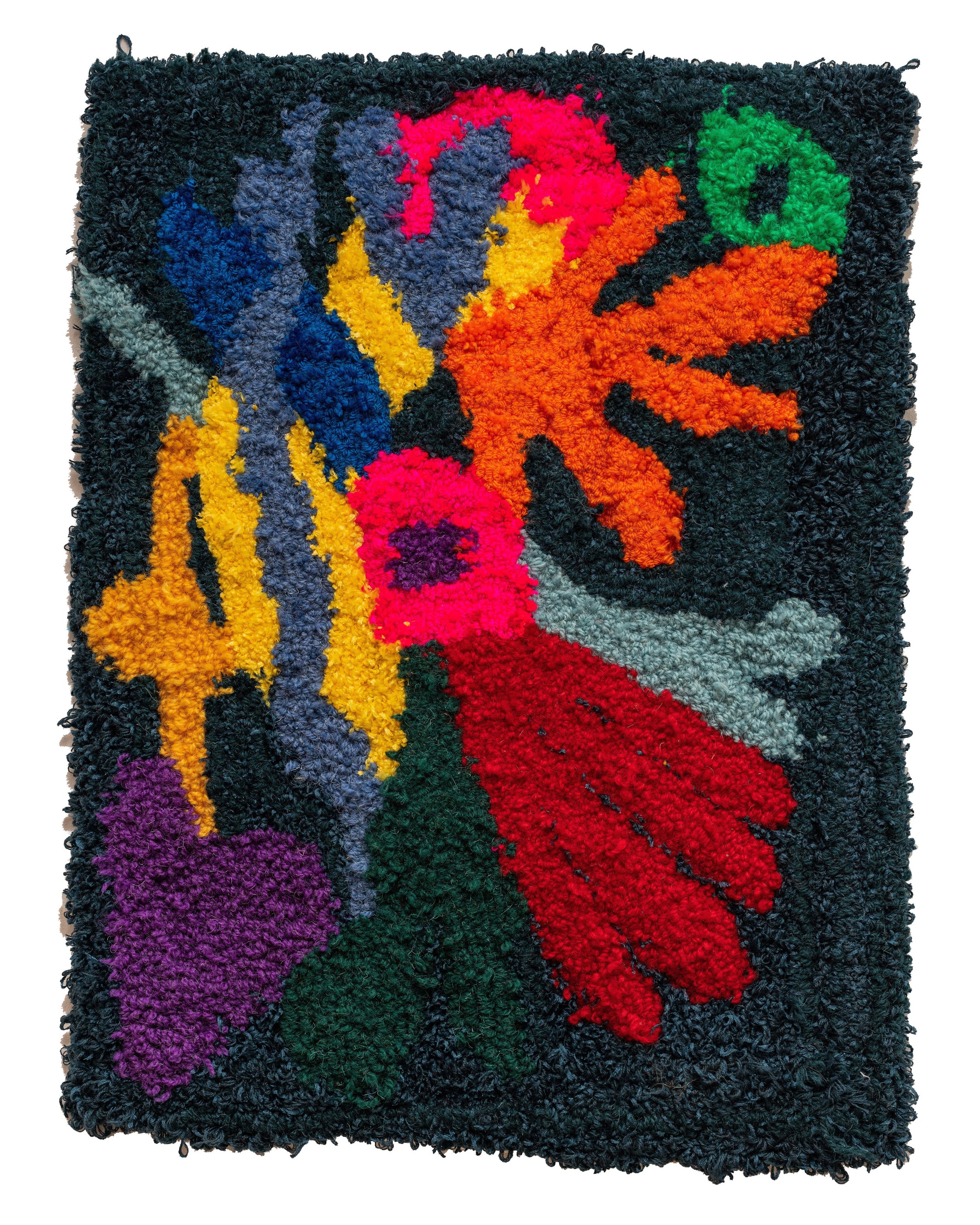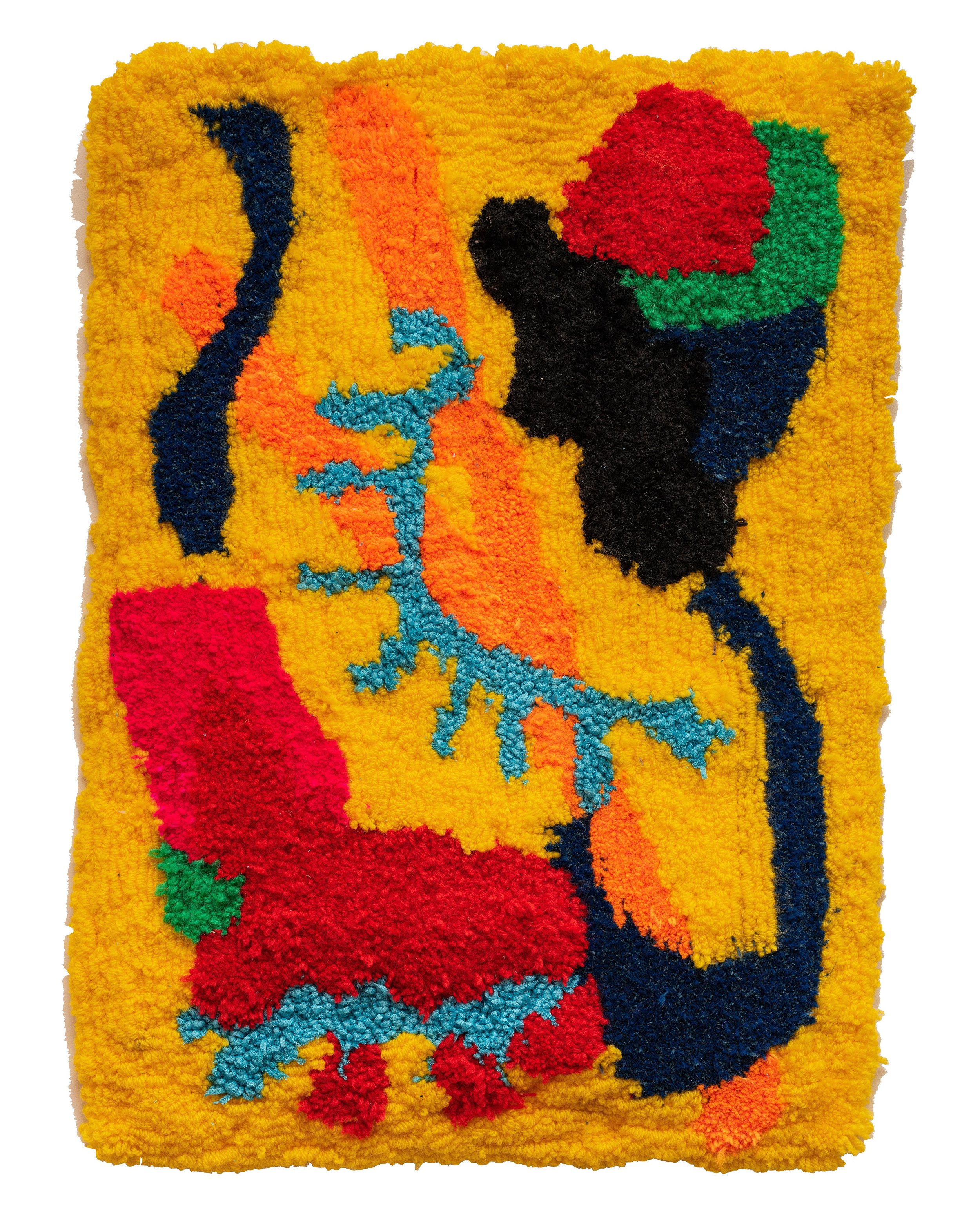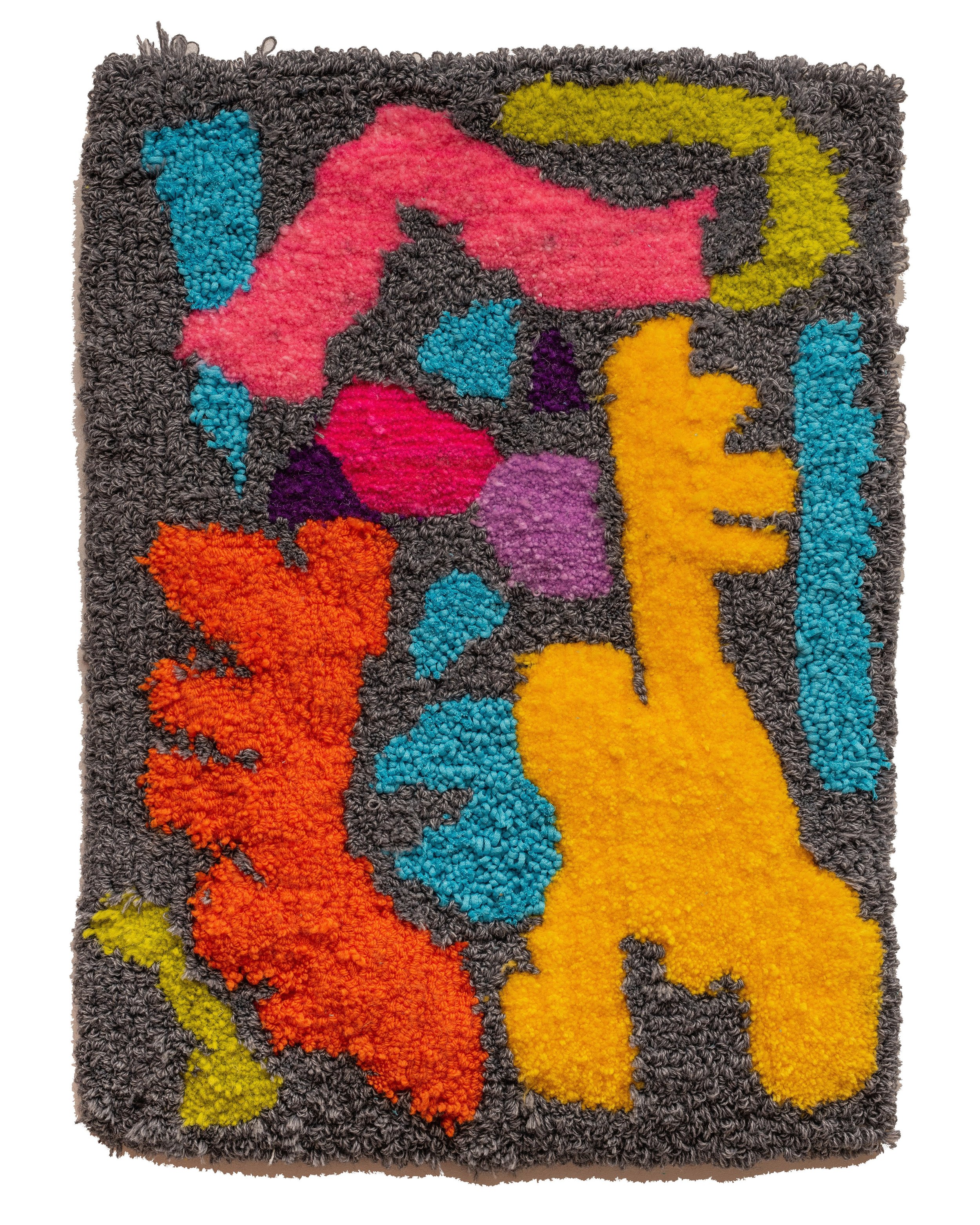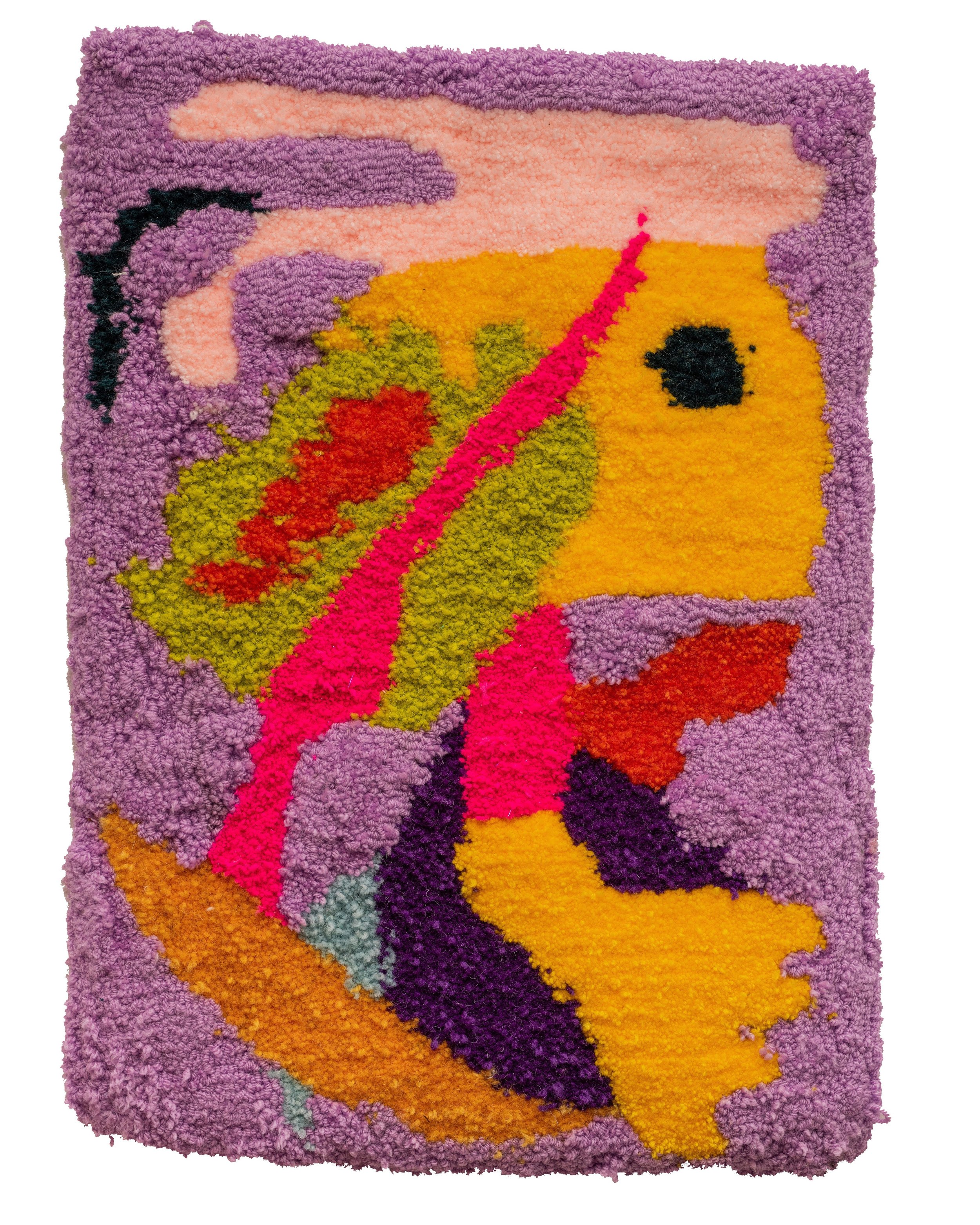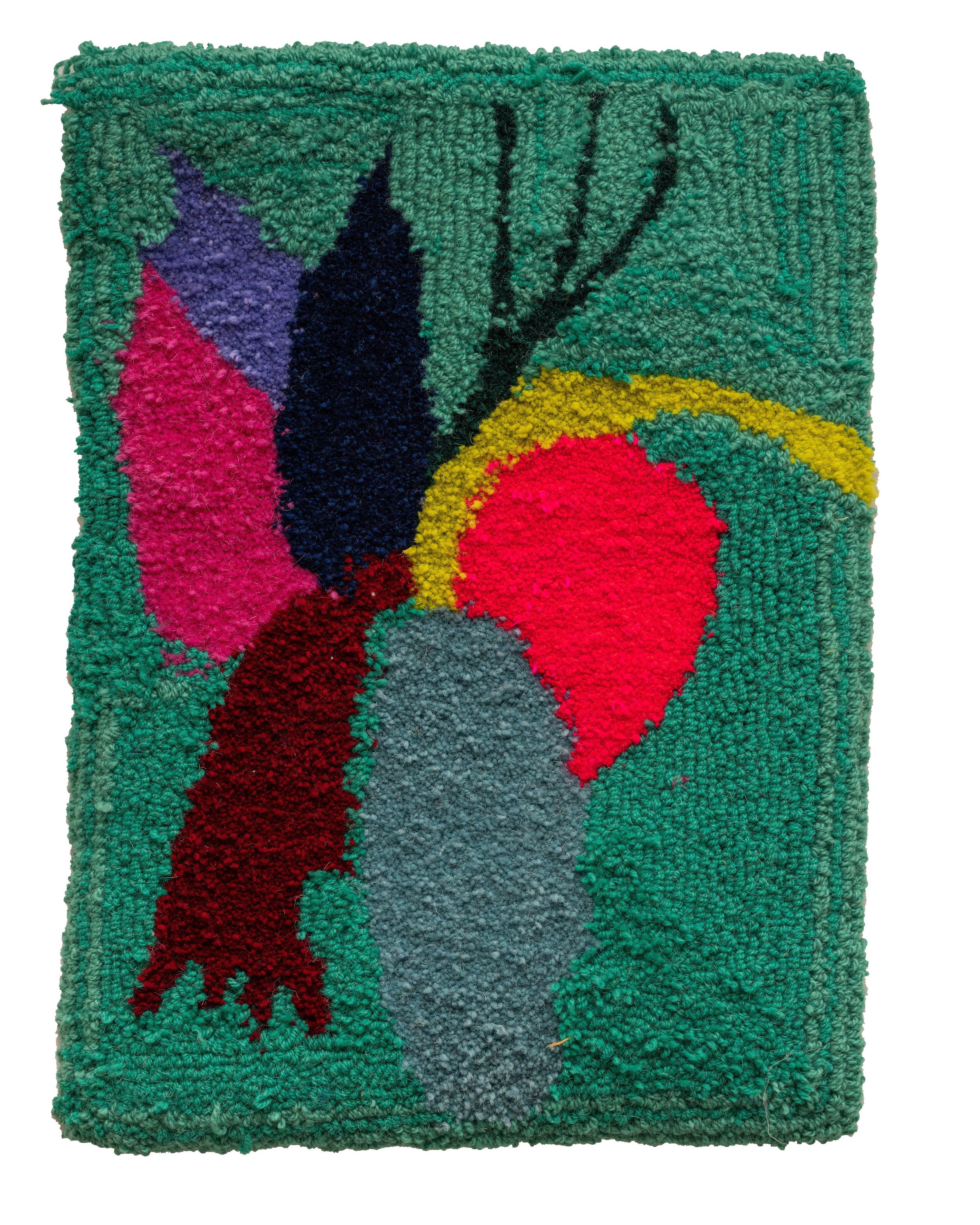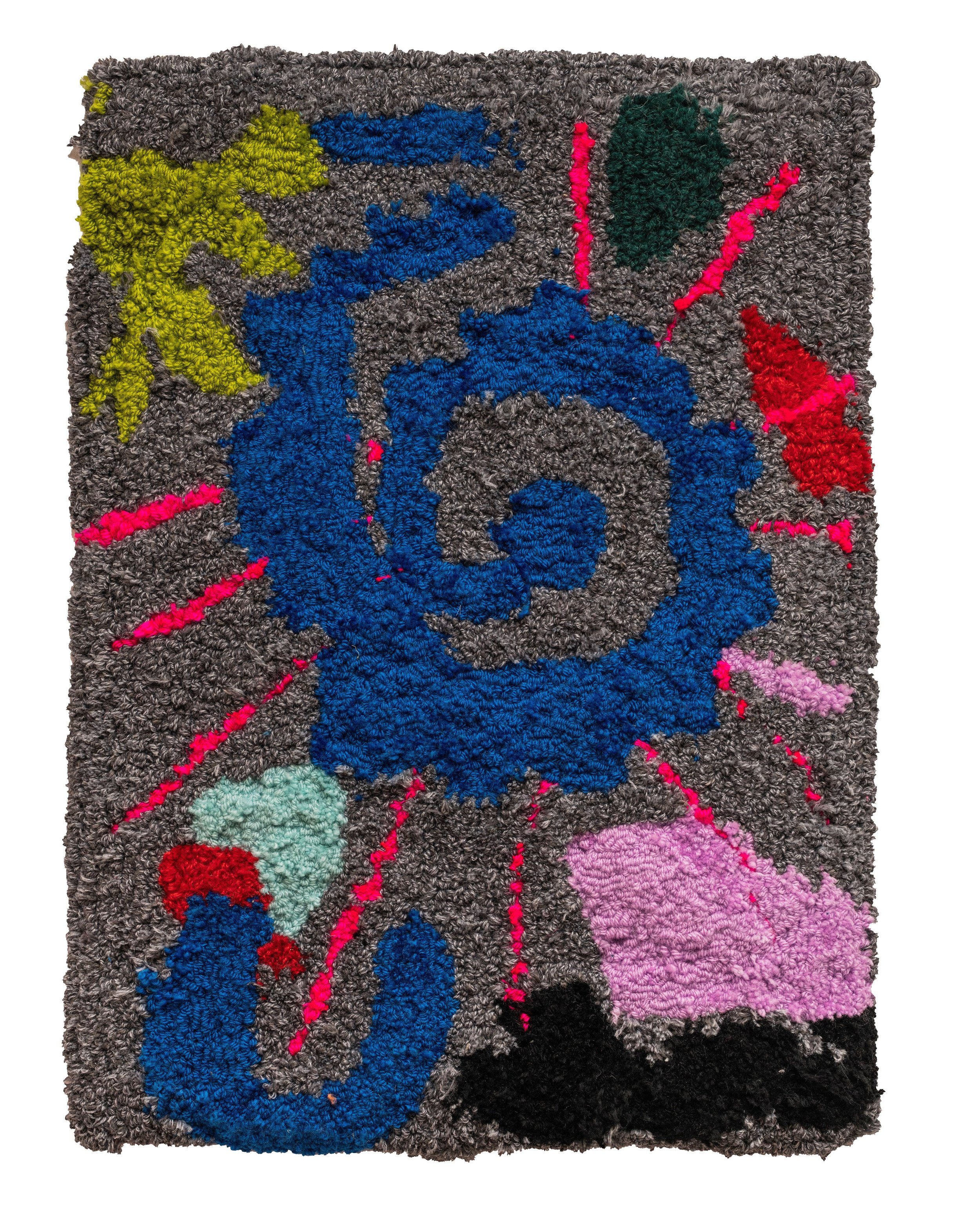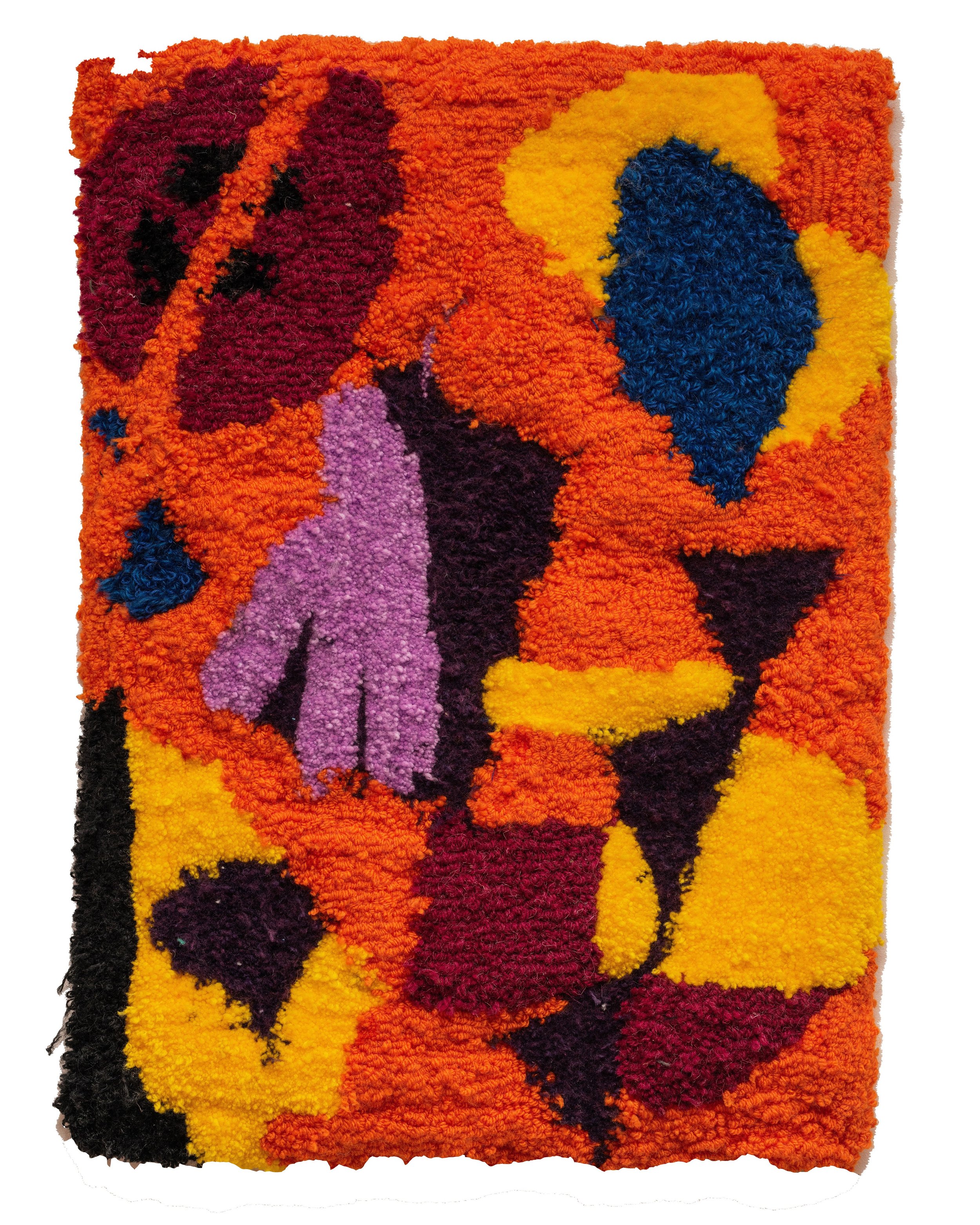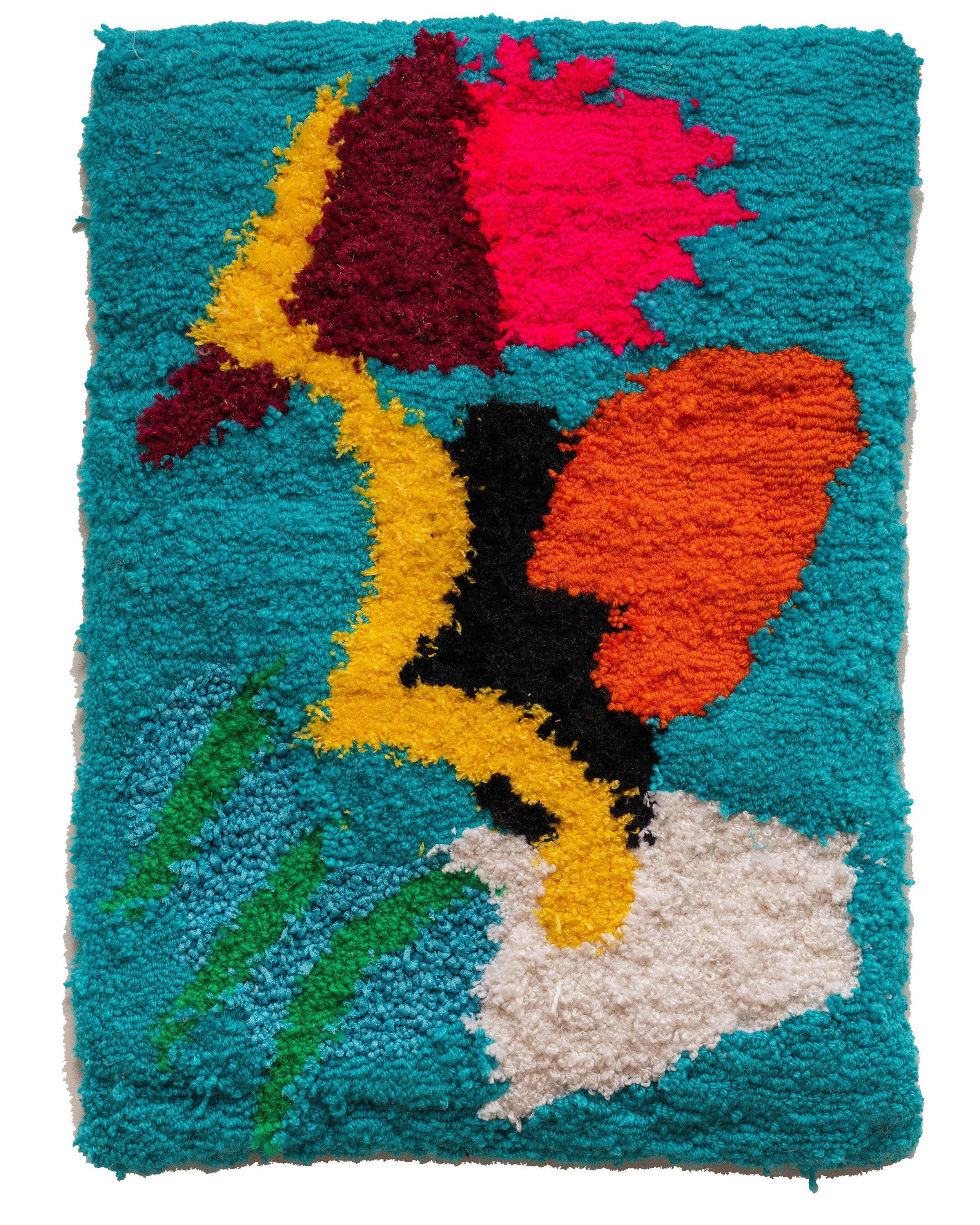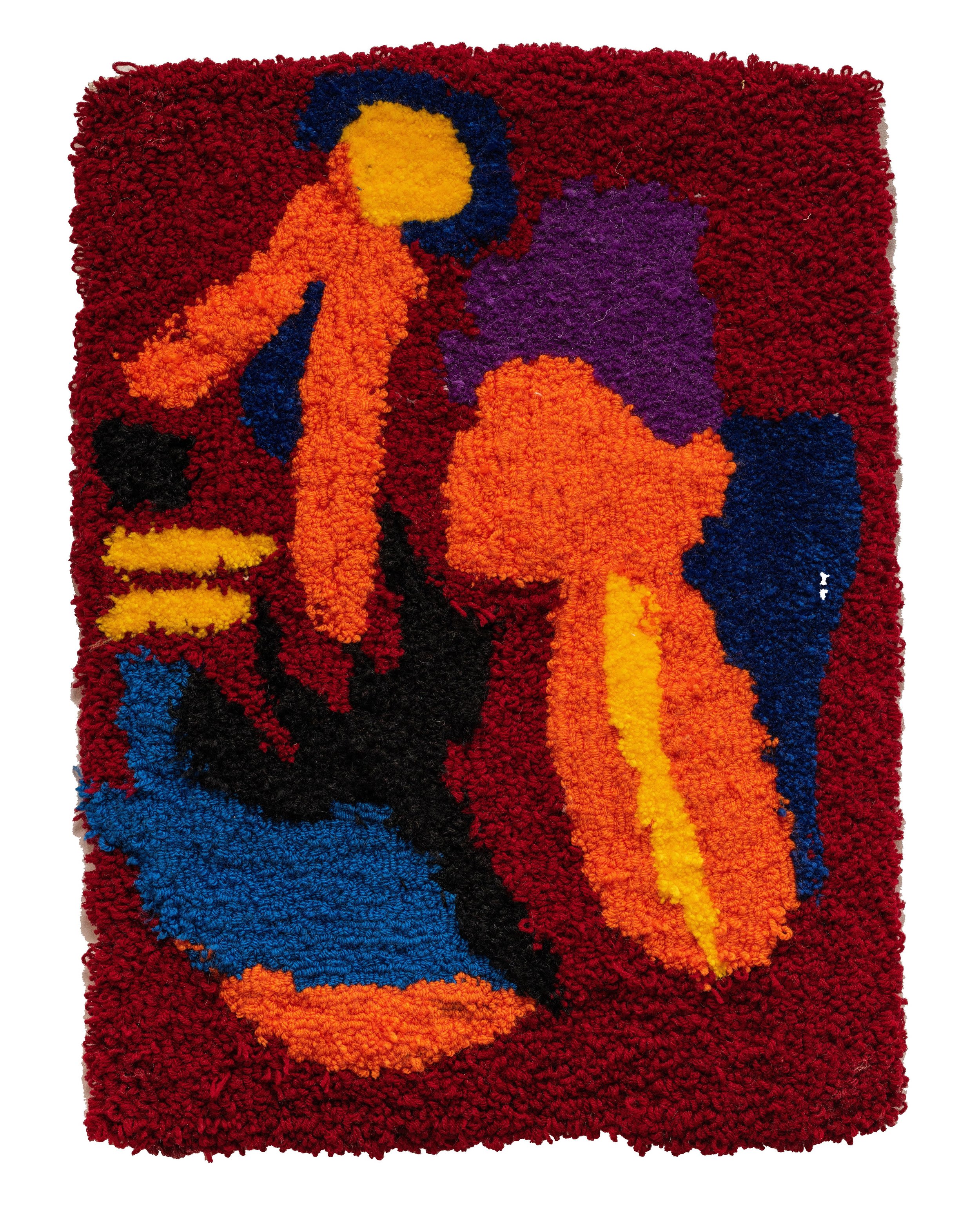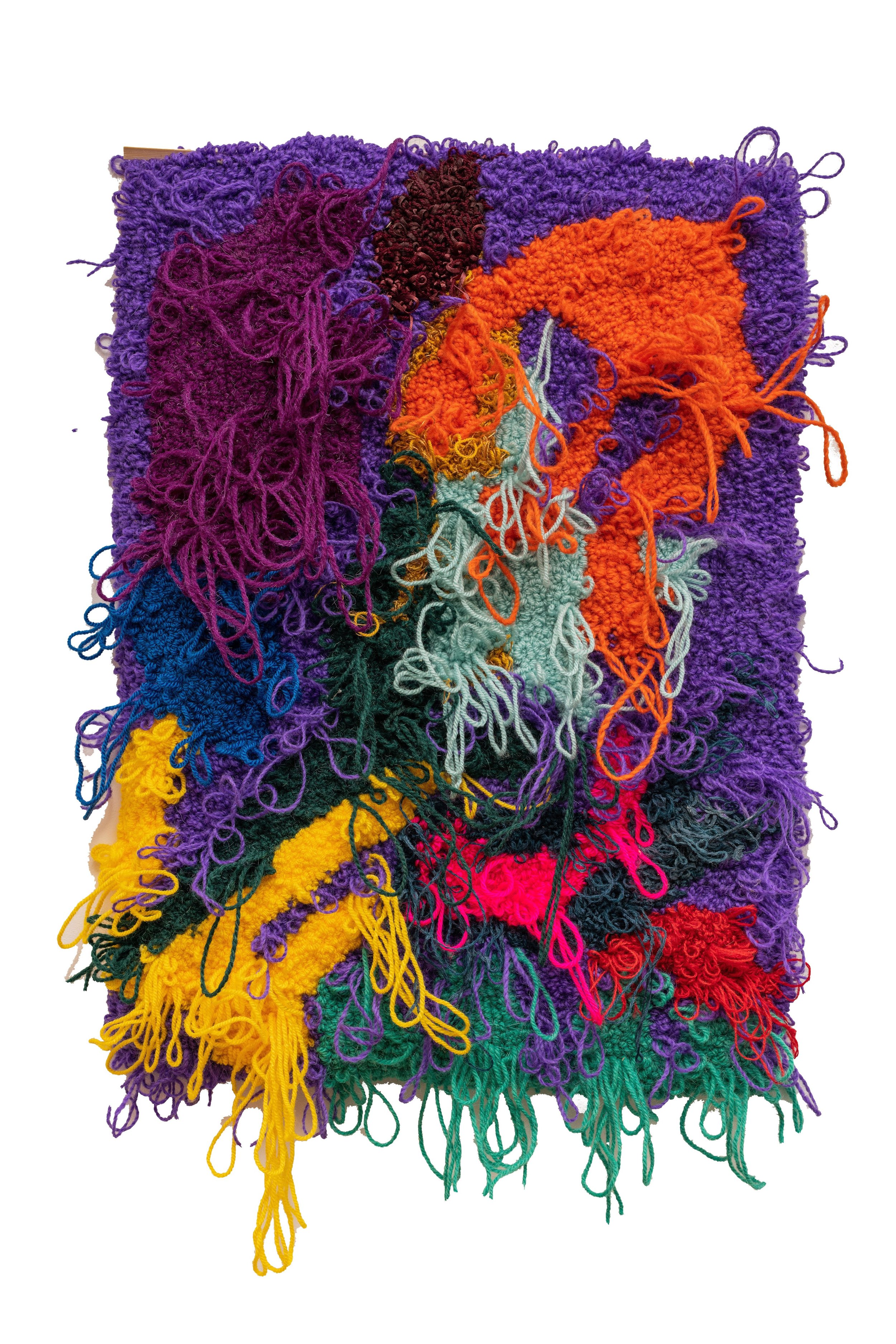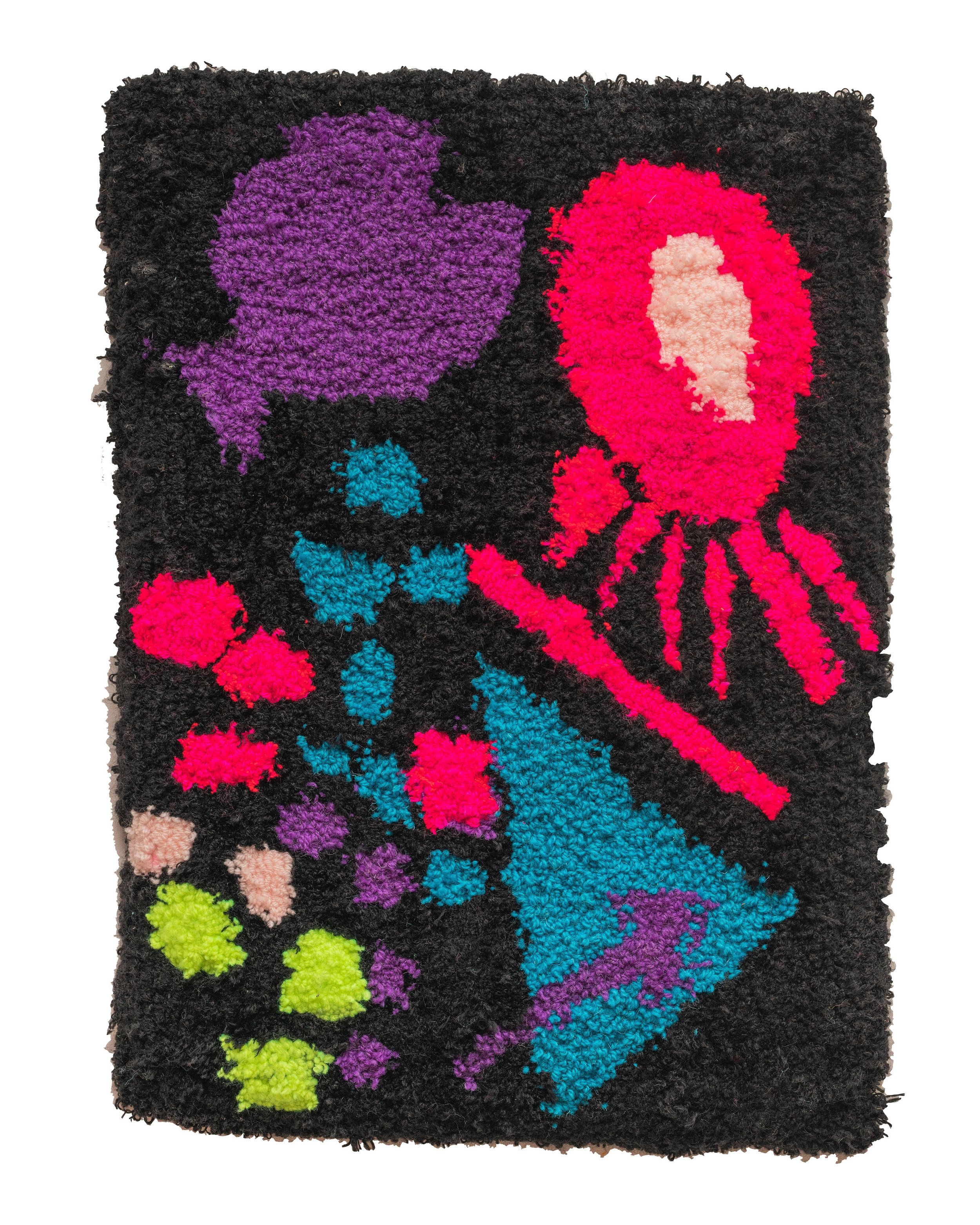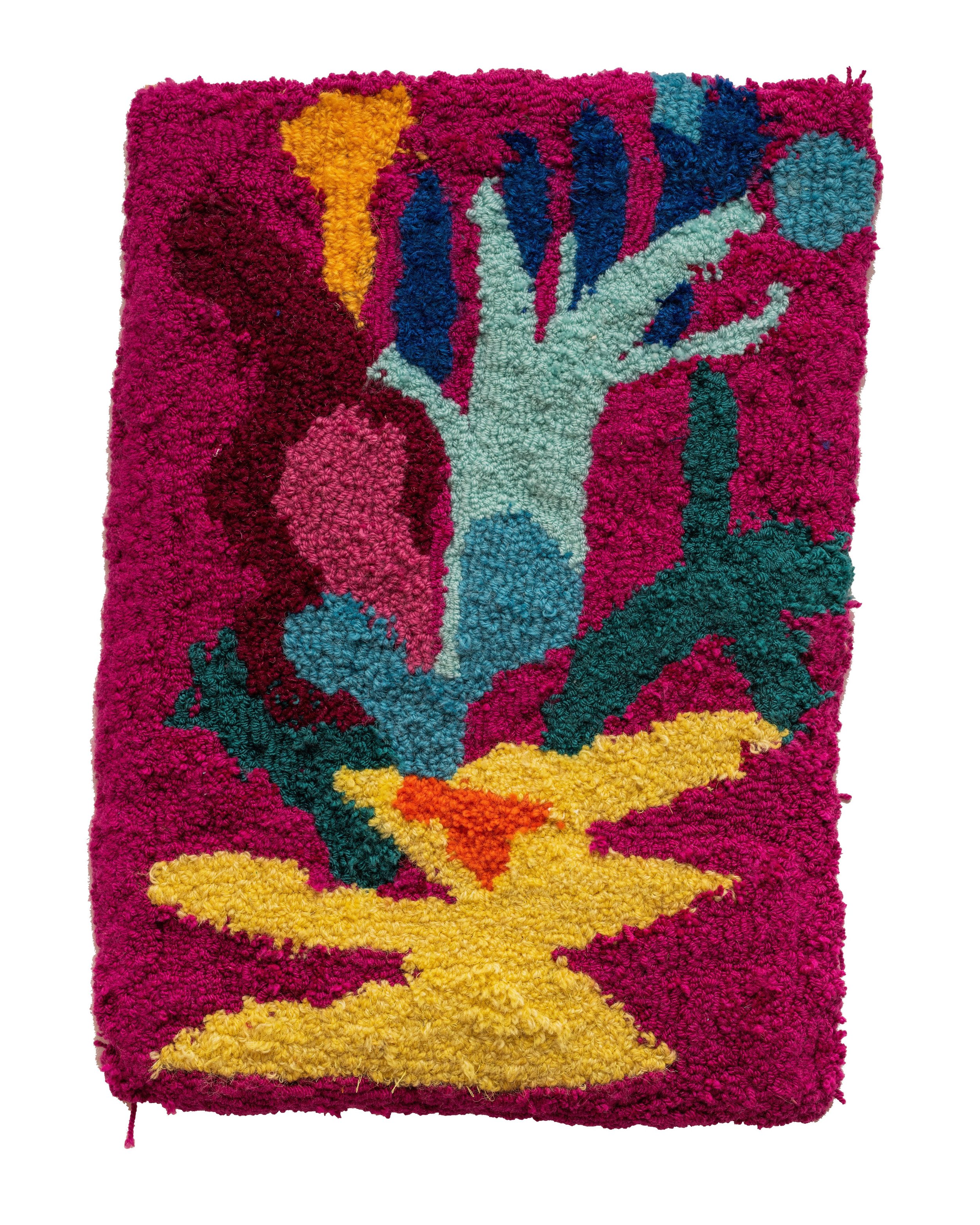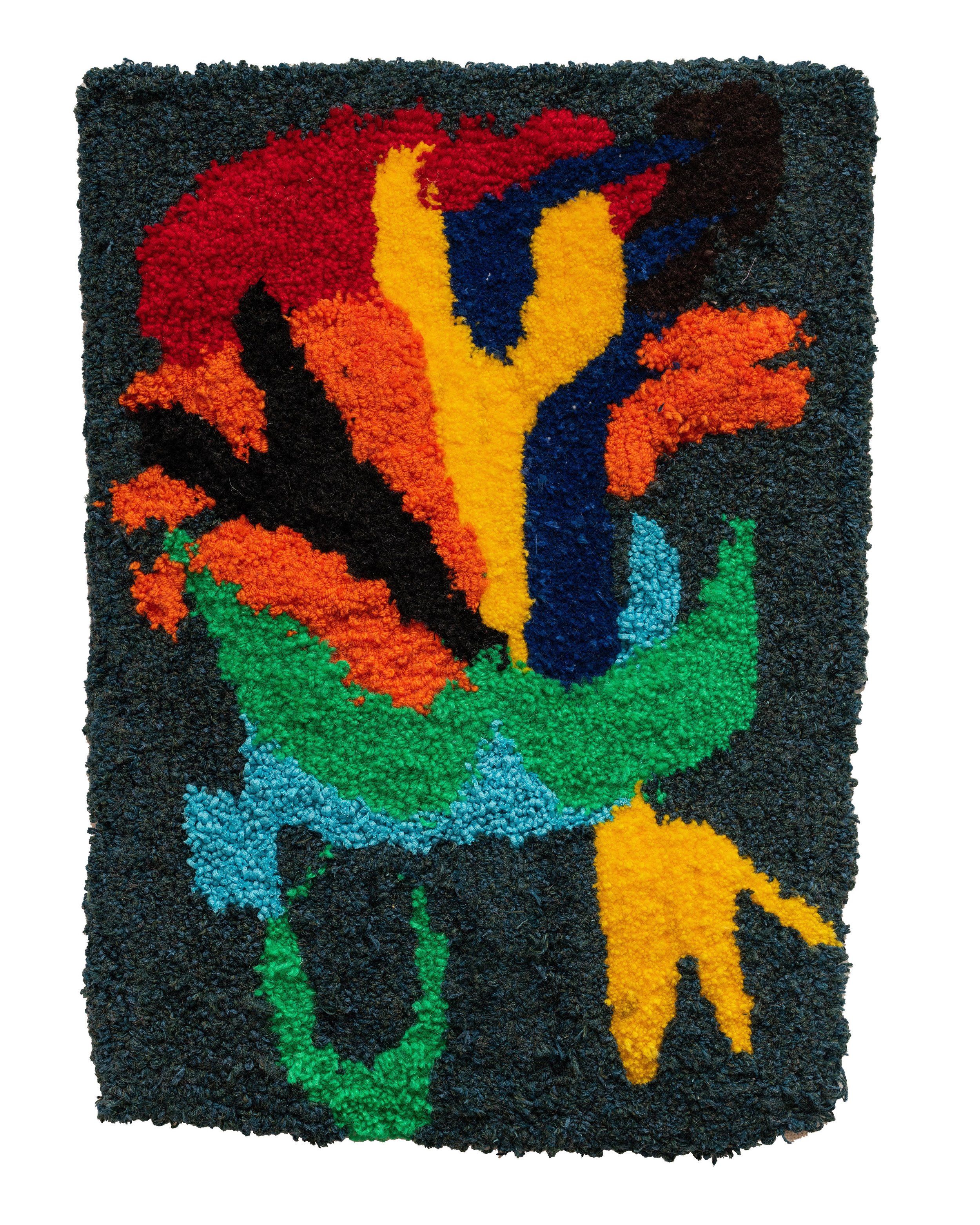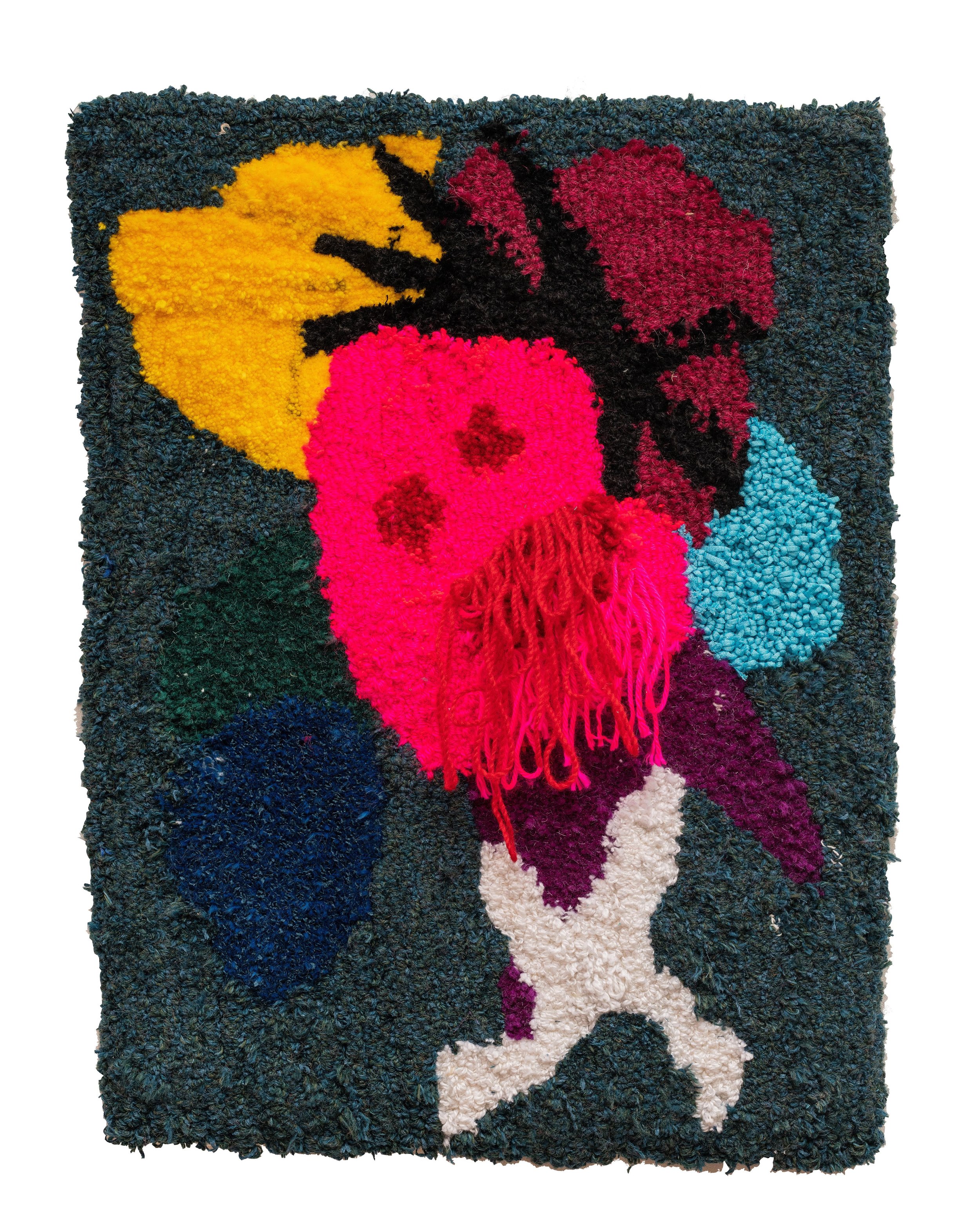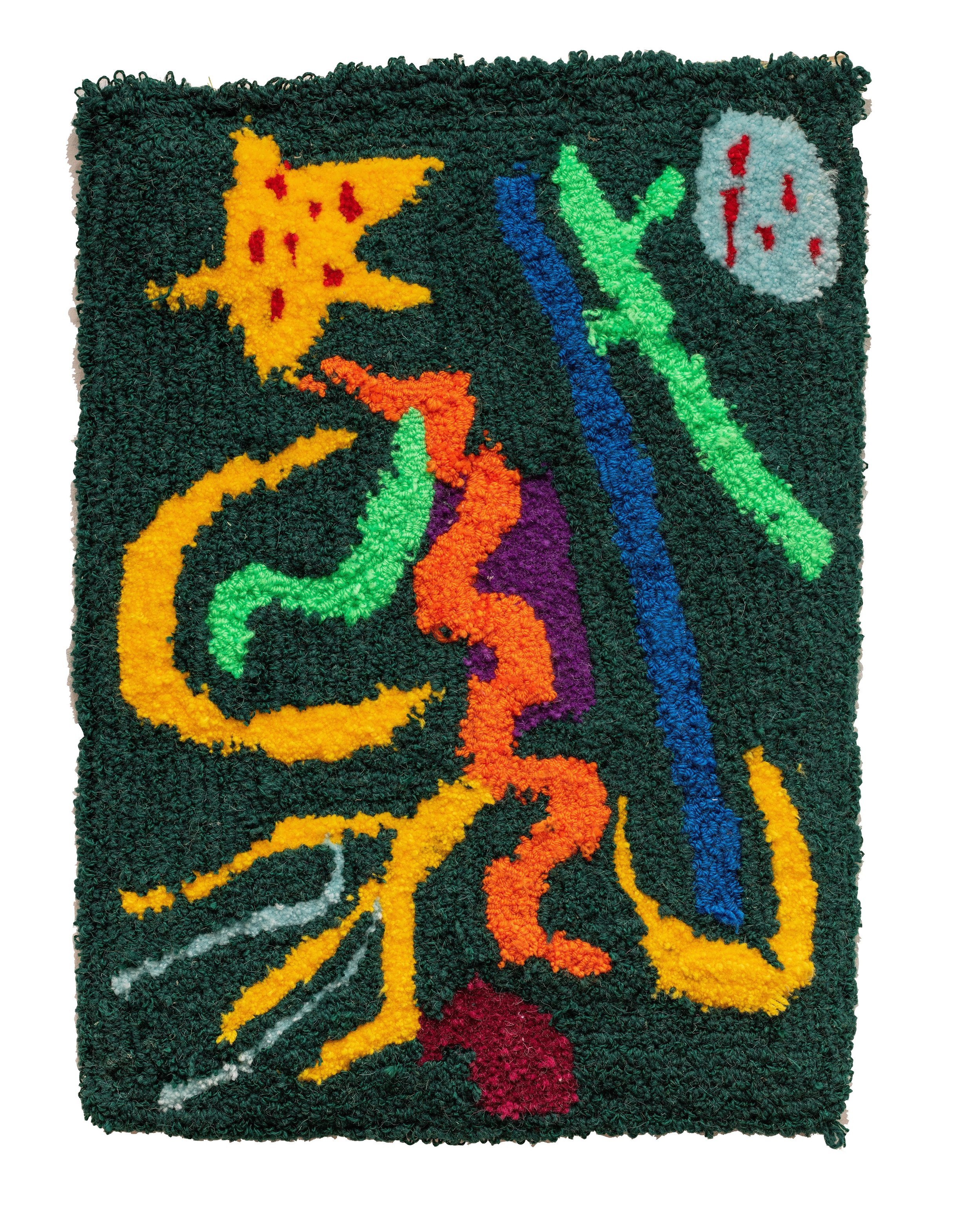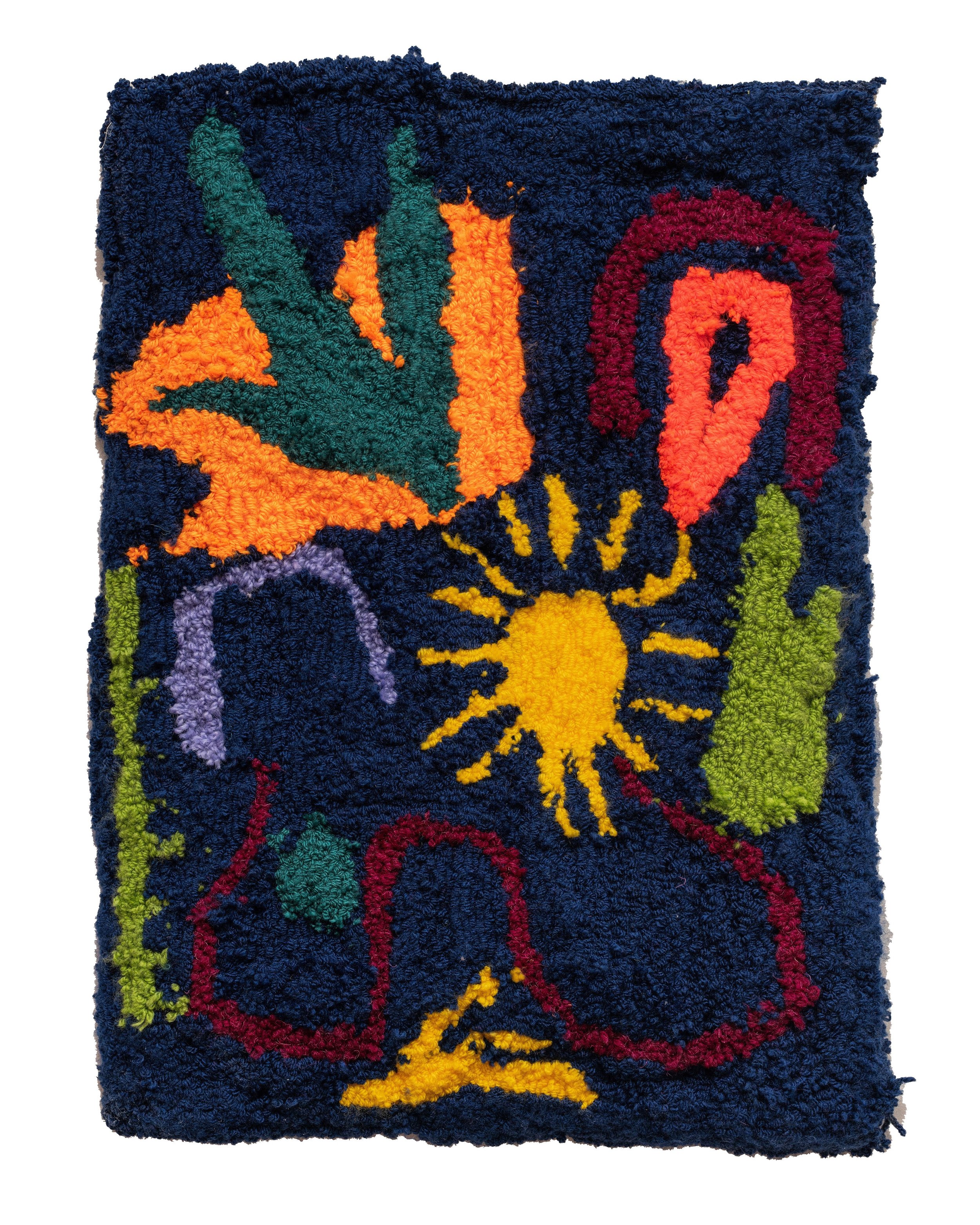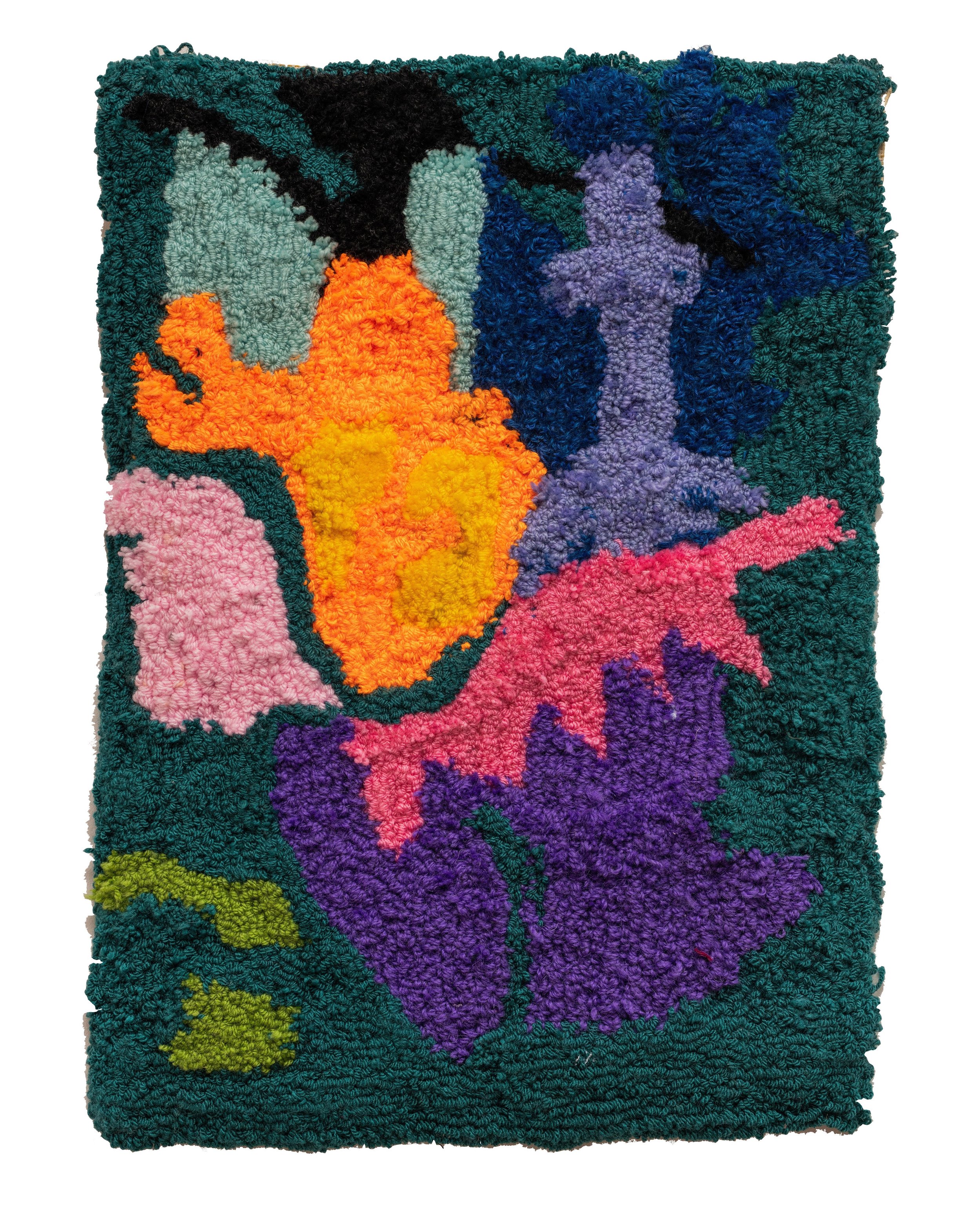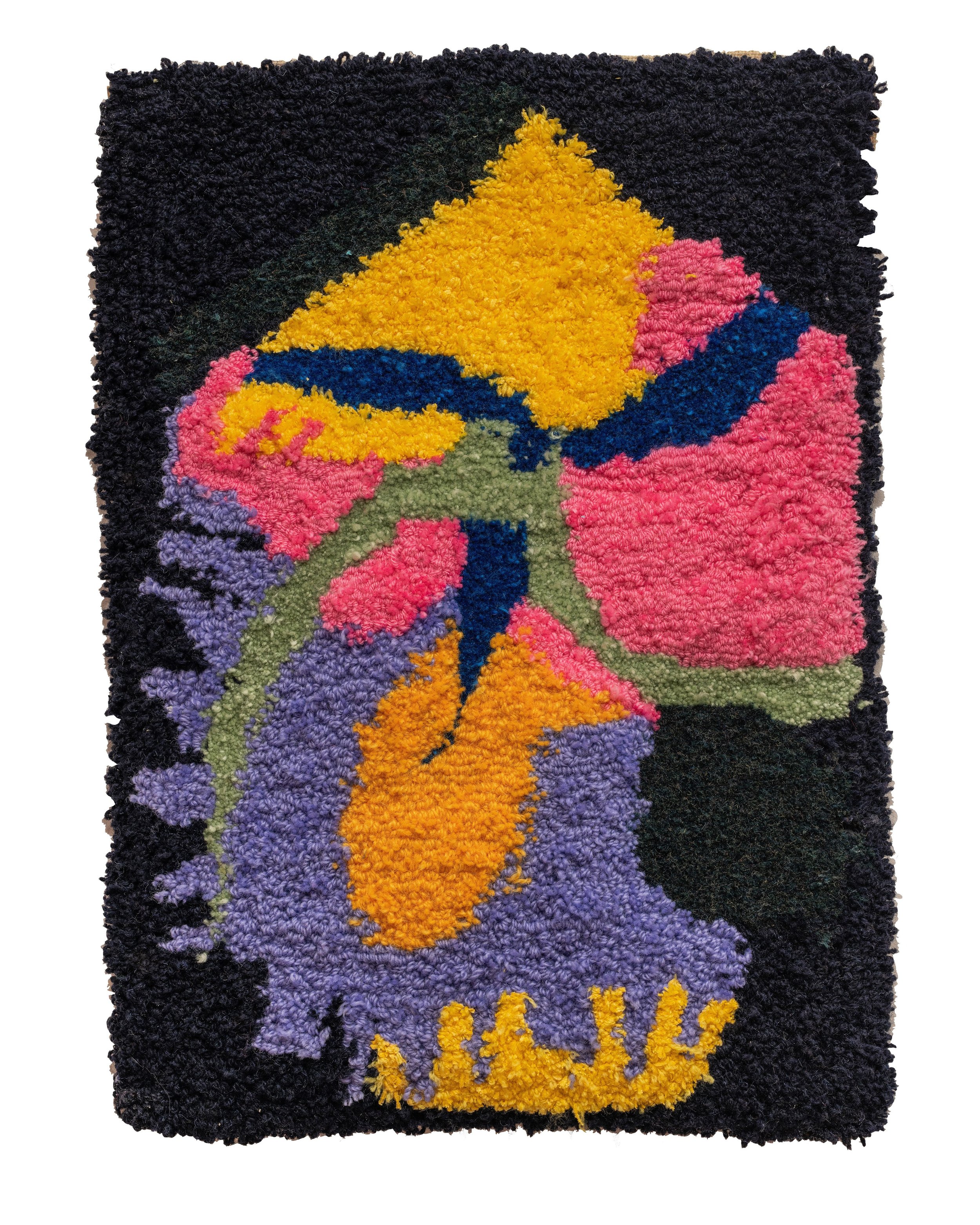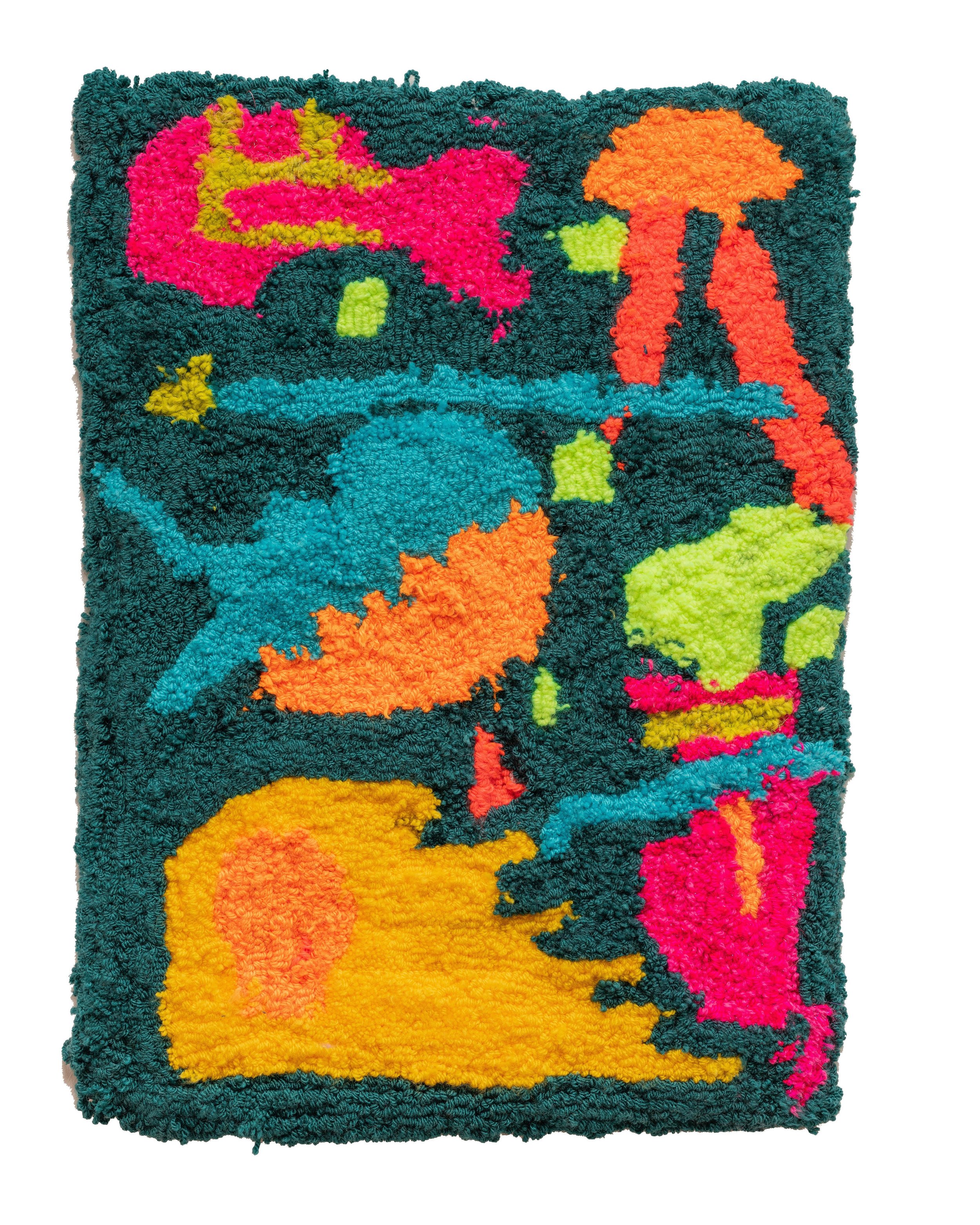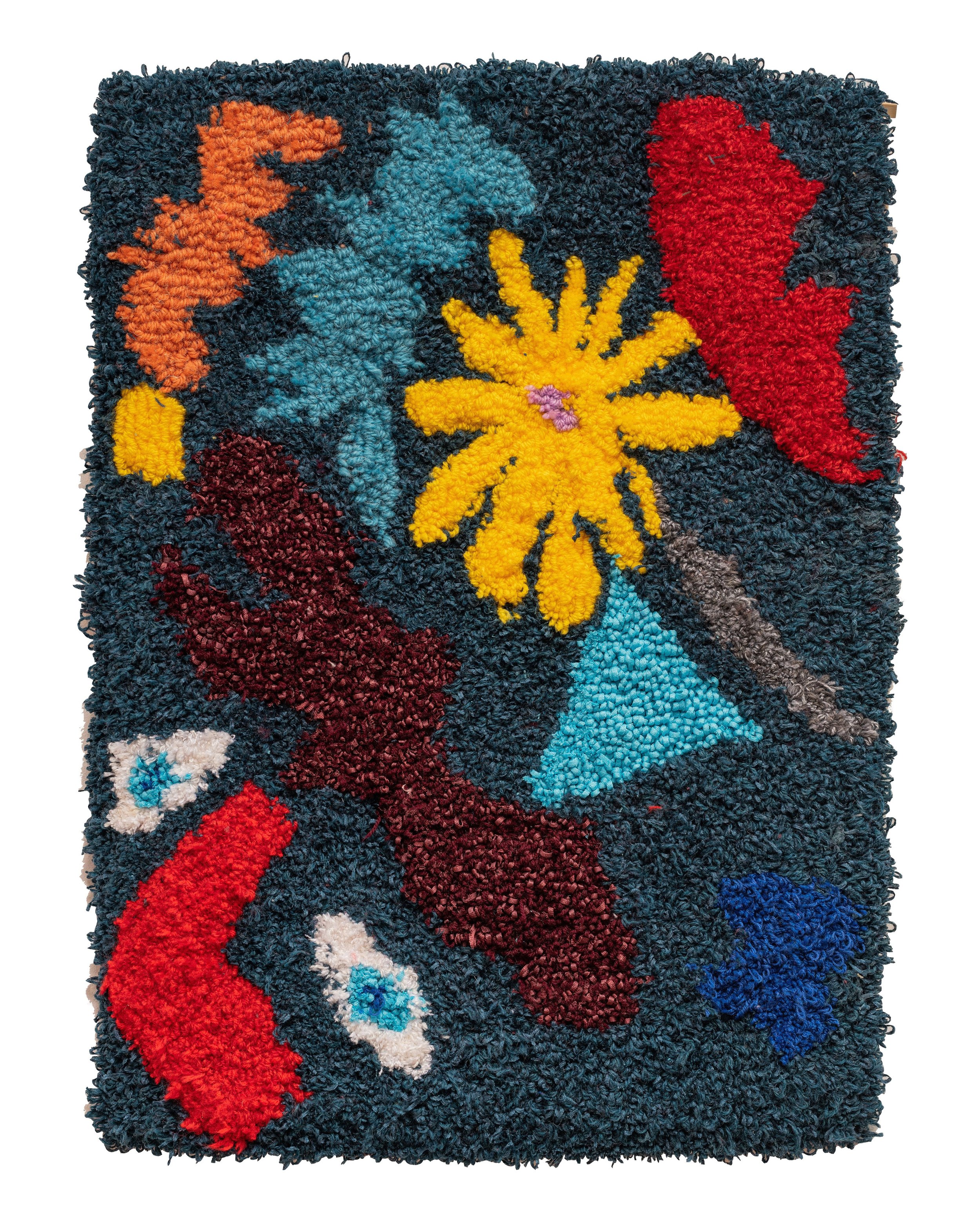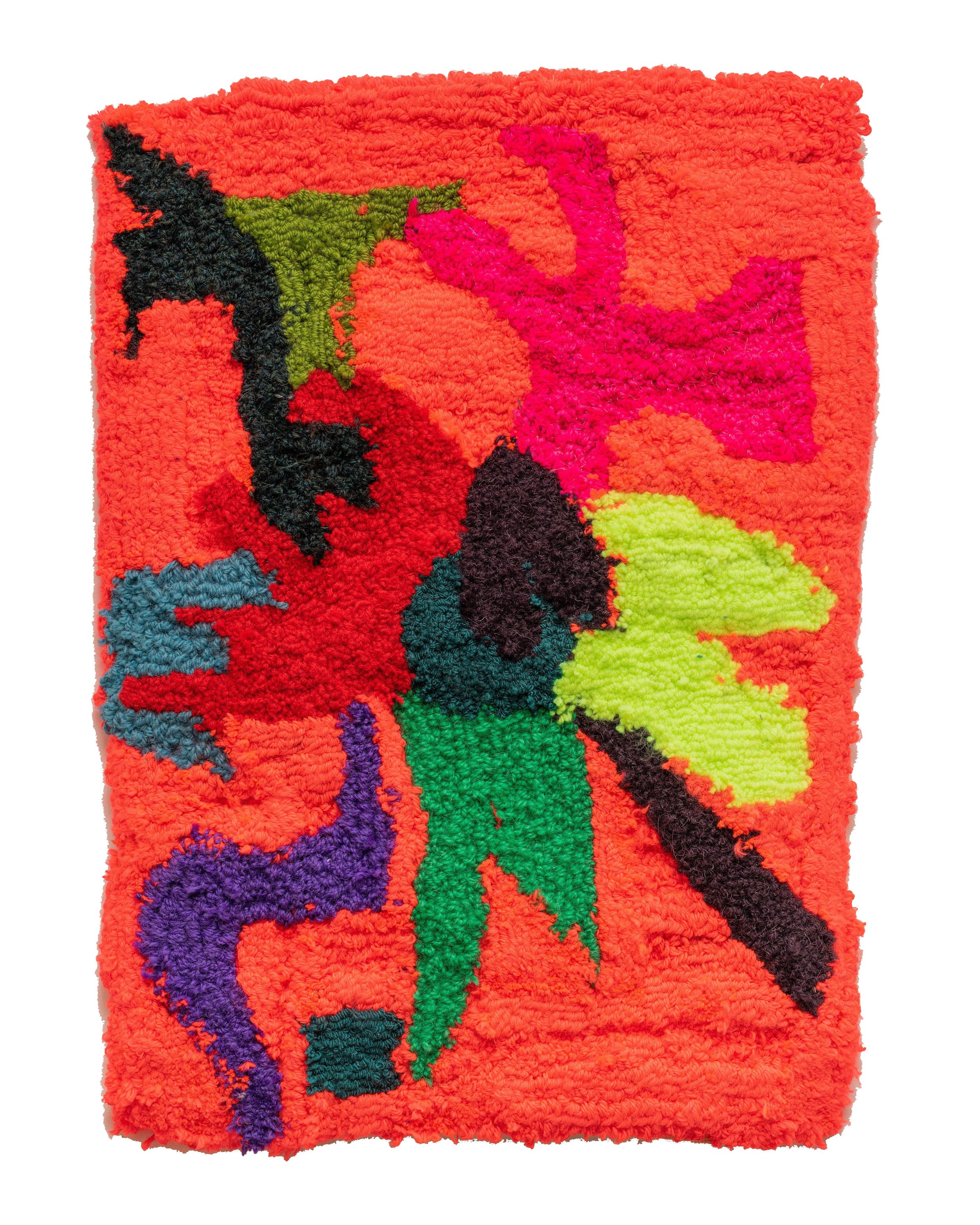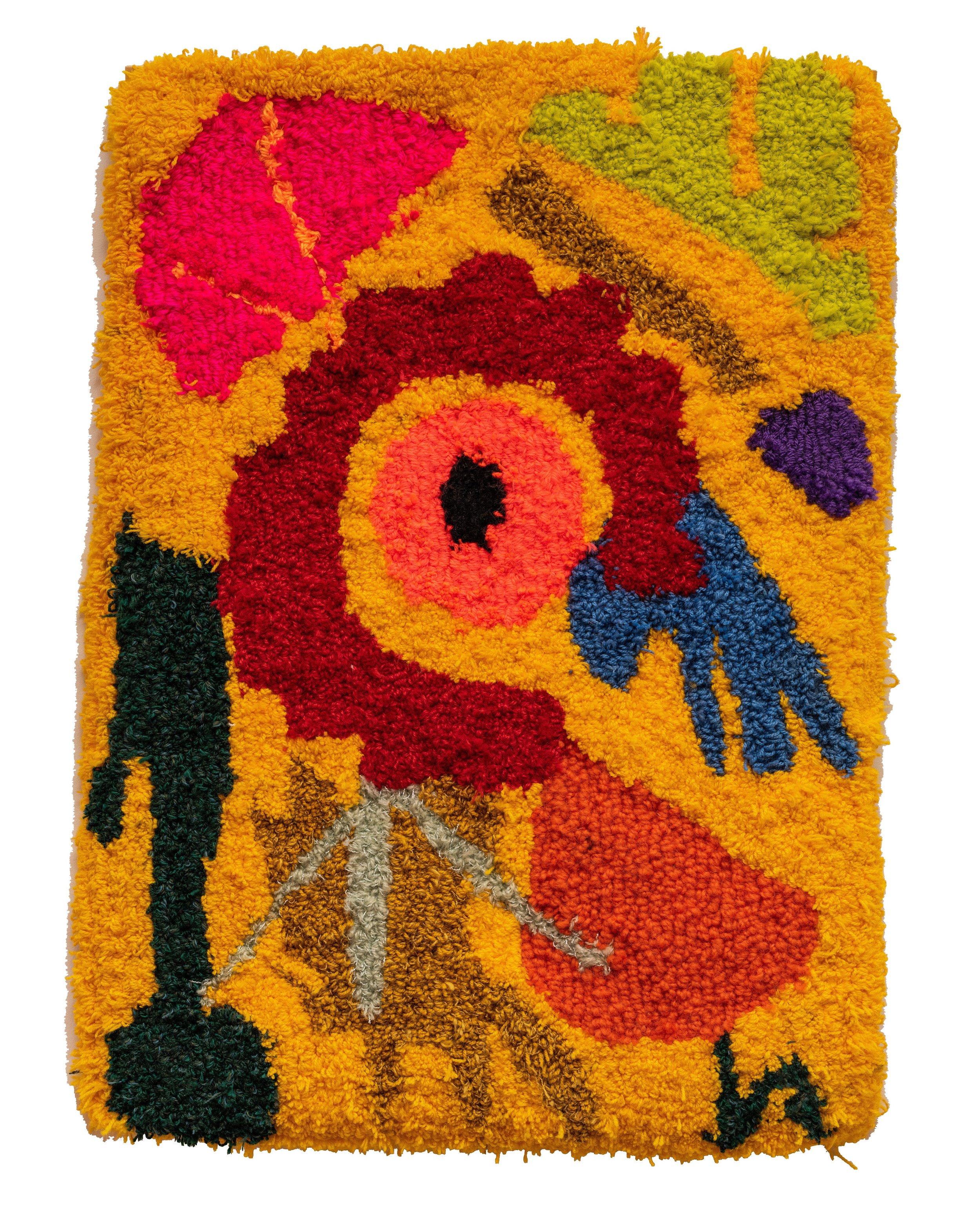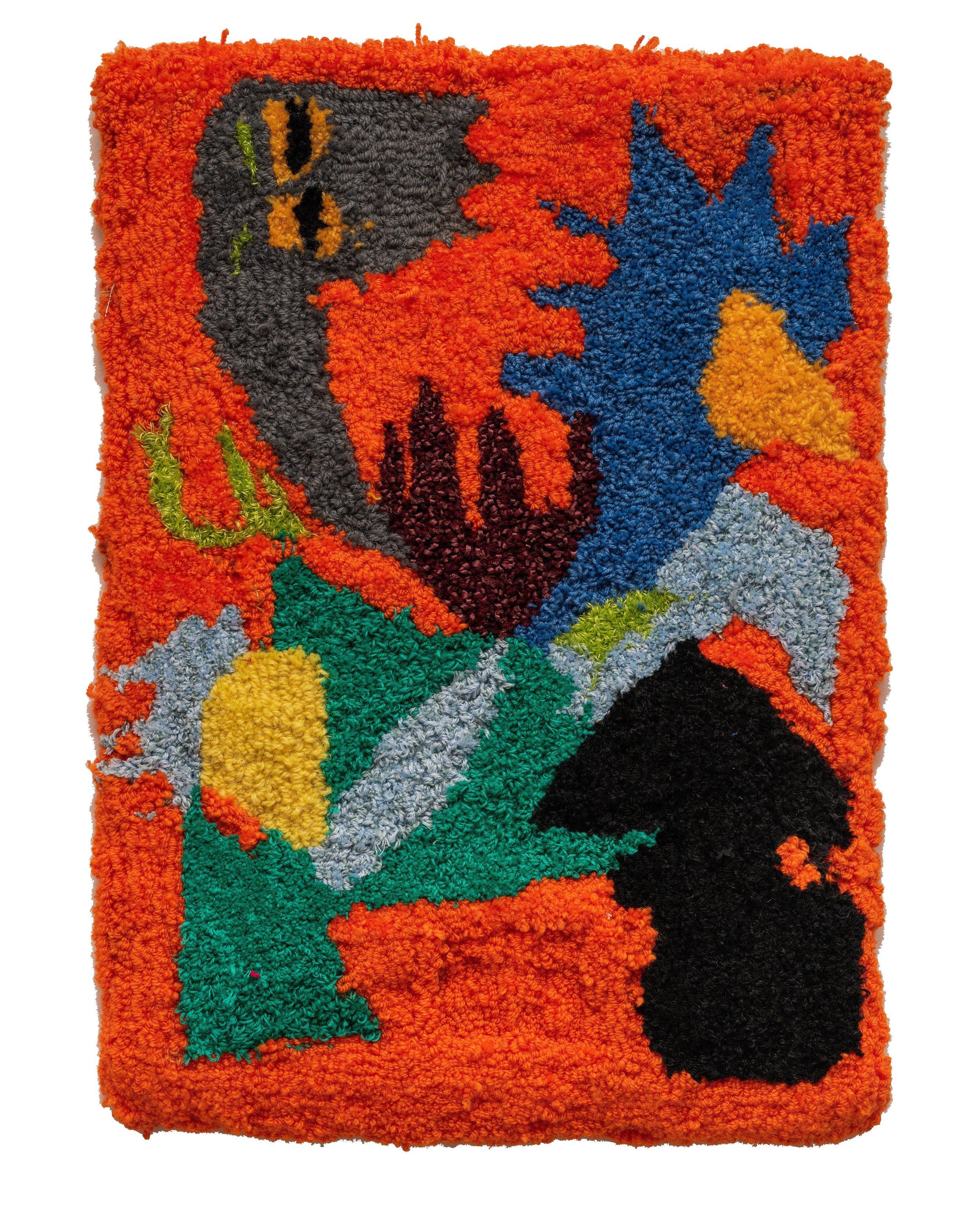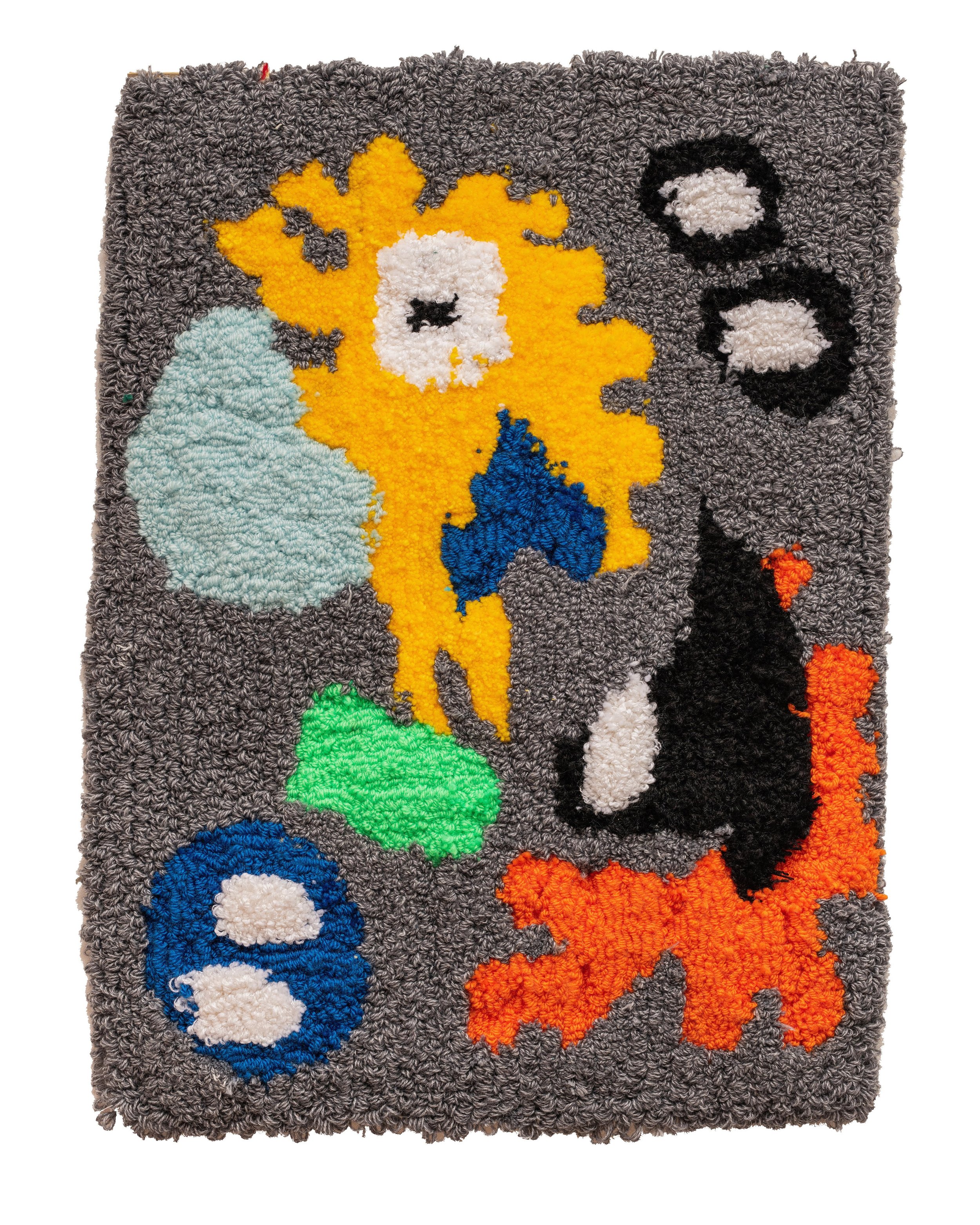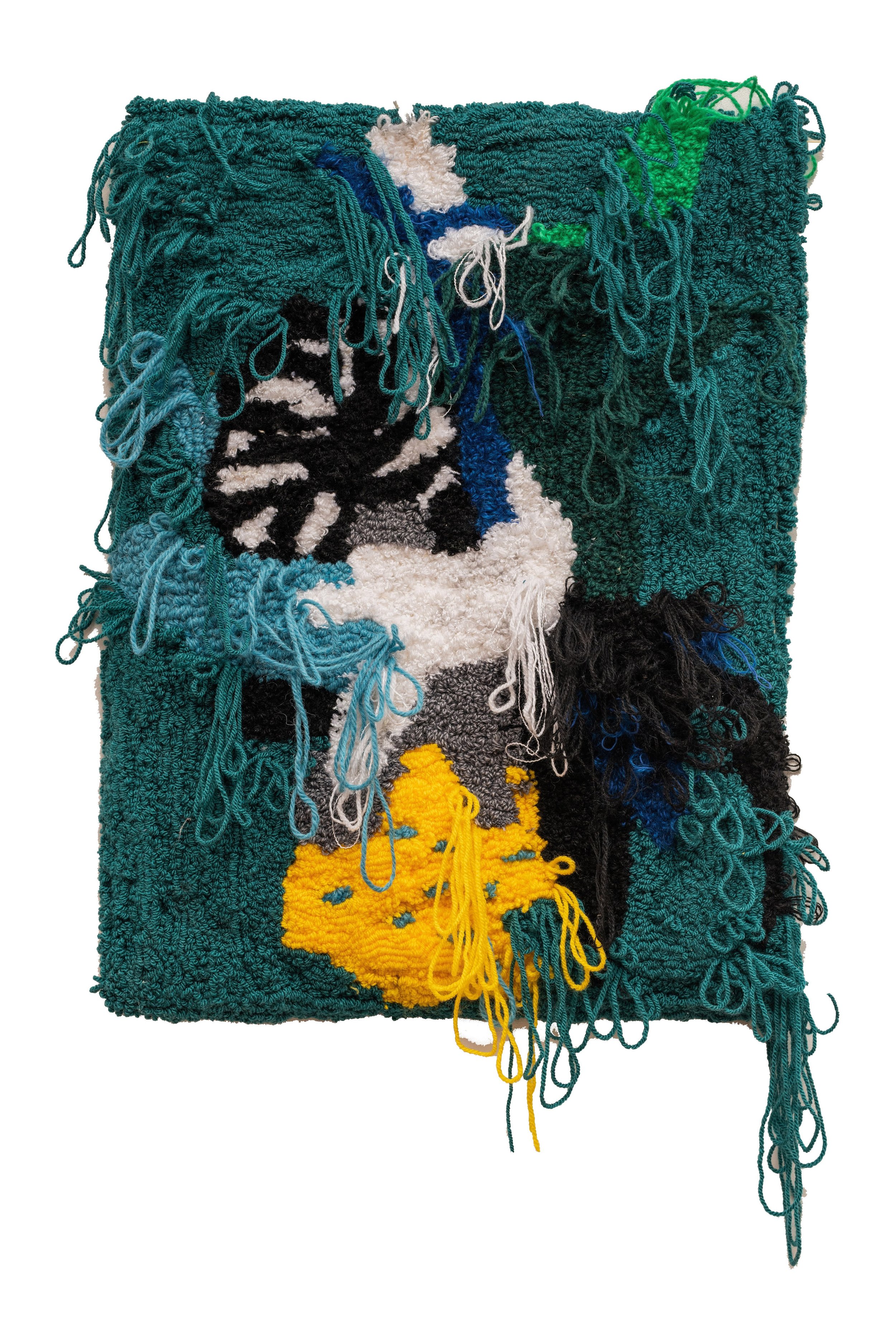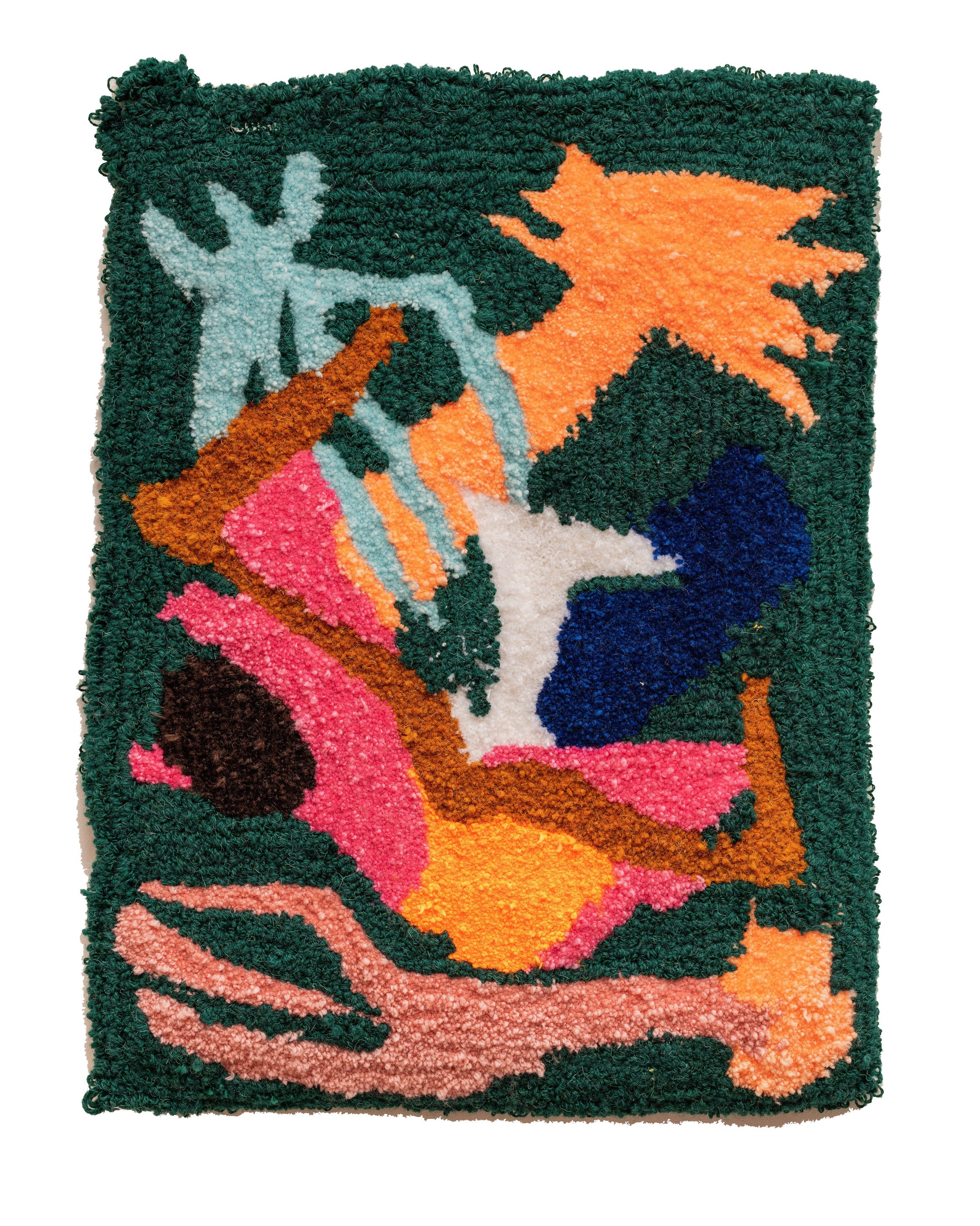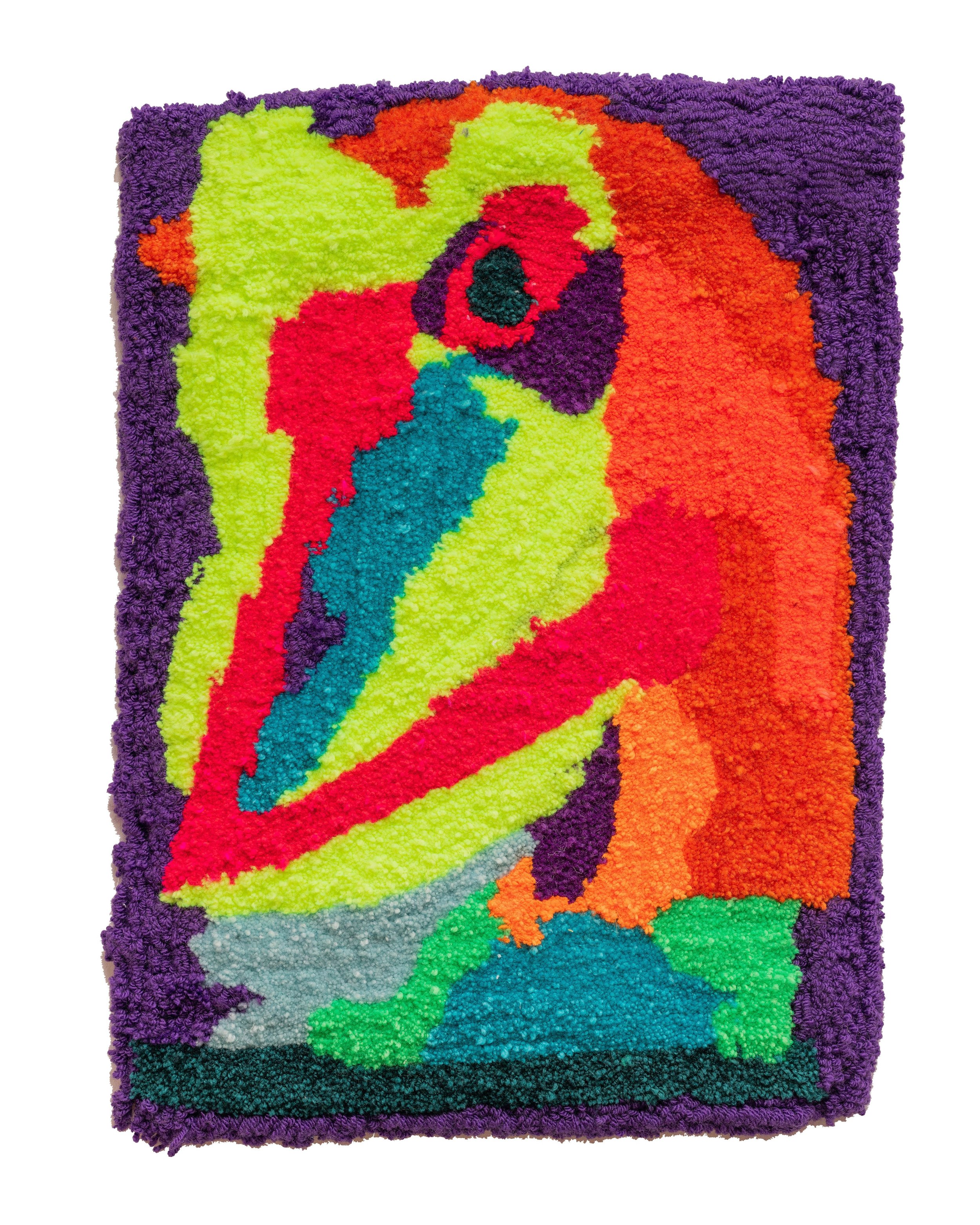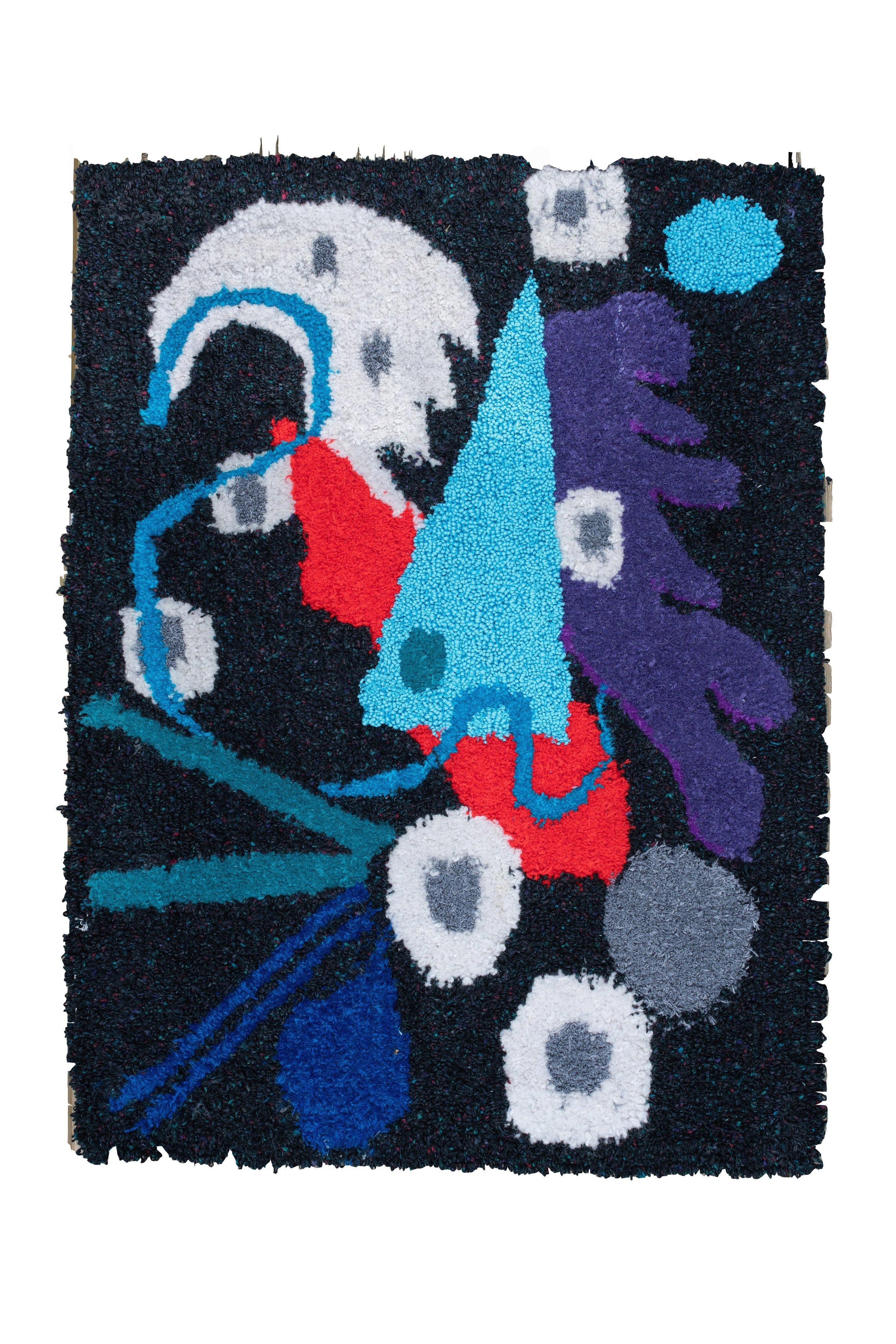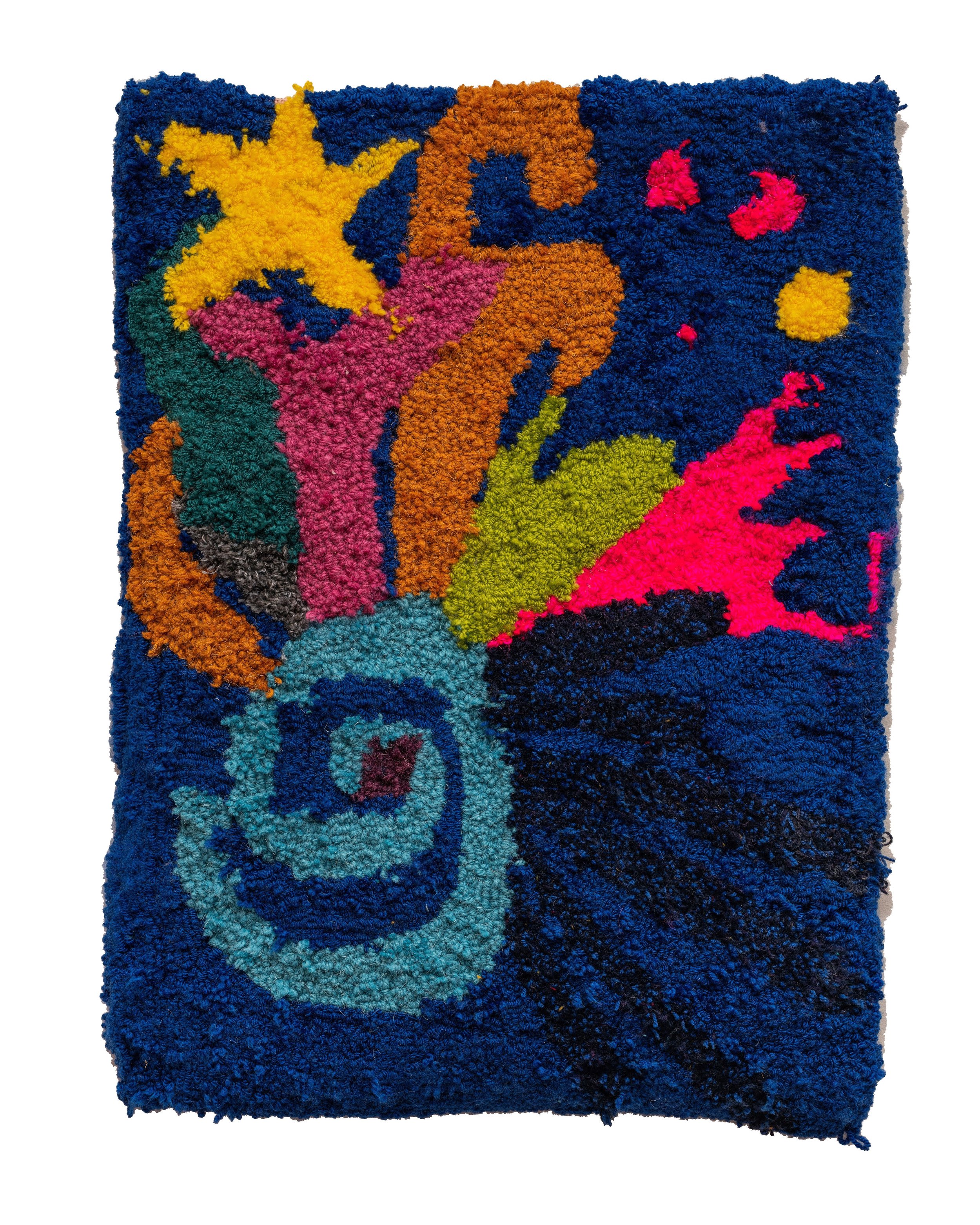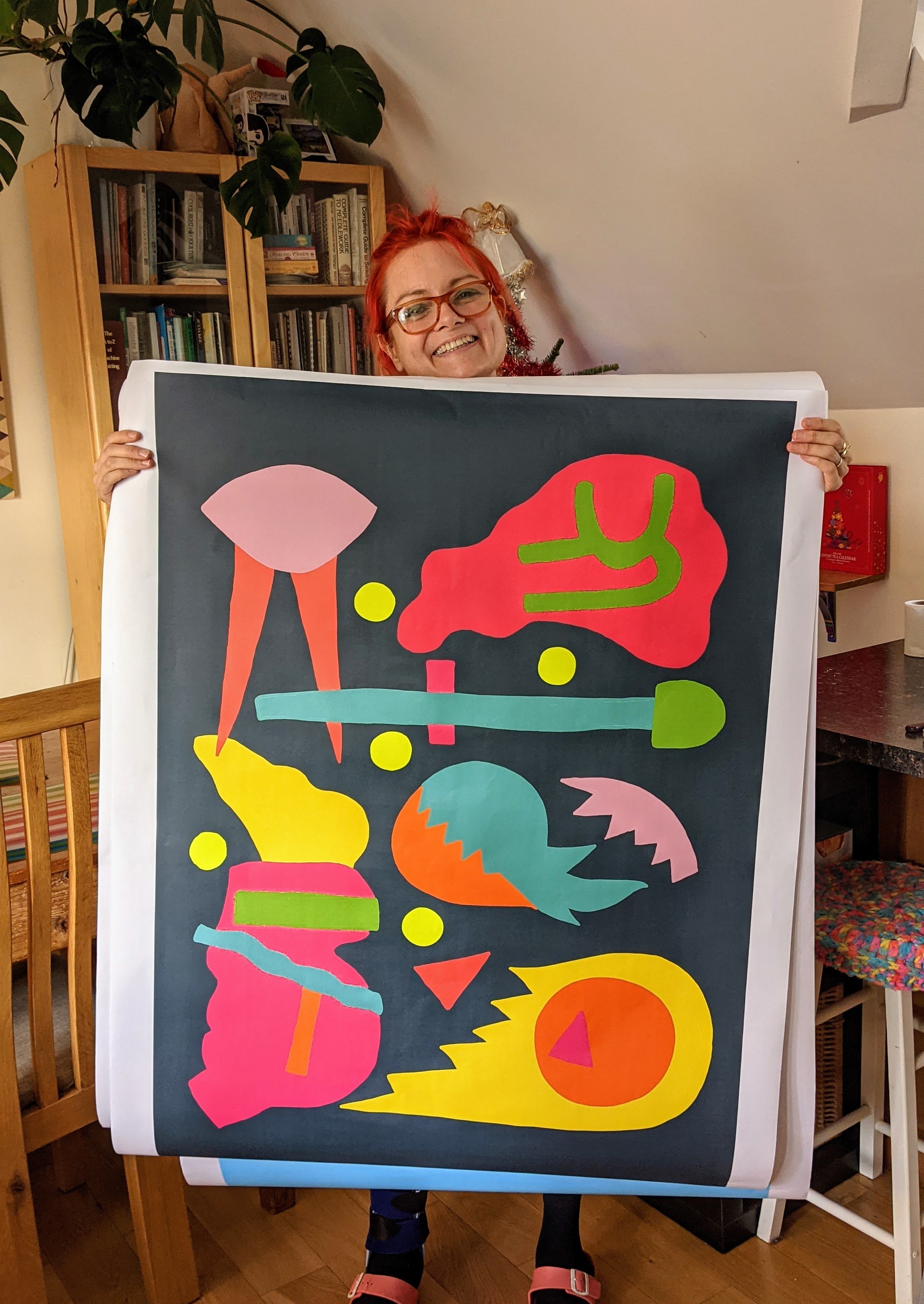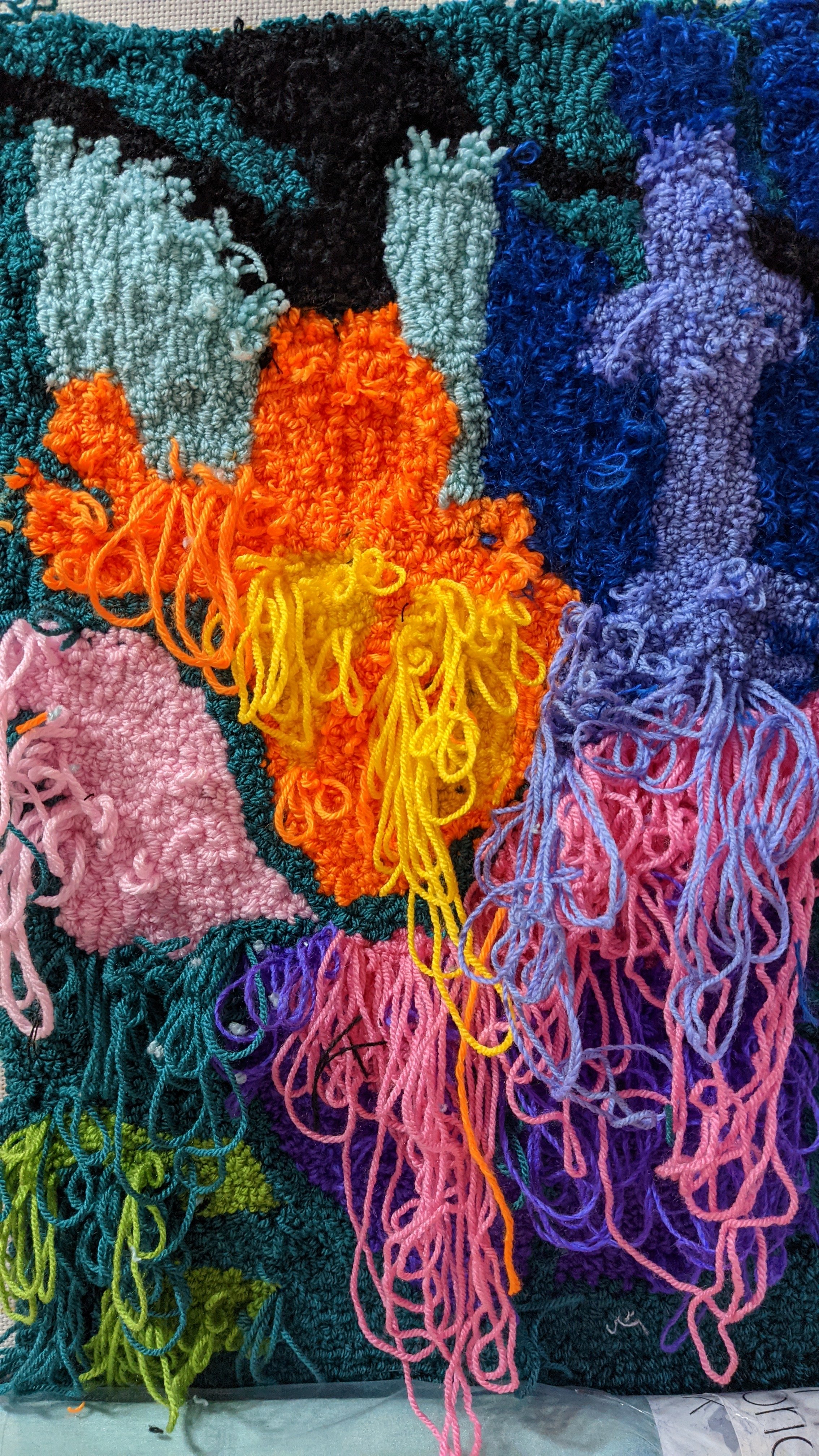Tea Leaf Readings, You and Co-designing Textile Artworks
Tasseography Textiles
How it works:
Working collaboratively with Becky, you will create a bespoke textile artwork for your chosen interior space, using tasseography, her own illustrated tealeaf dictionary, and a collection of bold colours. Through a ritualistic approach, you will then have a selection of three potential design outcomes for you to choose from. Having chosen your one of a kind design Becky will then make your art work, or rug to your personal specifications.
Tapestry Weavings - Price per Item / Gallery / Online Store
Tea Leaf Reading
For Design - Lounge Session 1.5hours
£30
To find out more, and purchase a Tea Leaf Reading Voucher - click Here (in the ‘To Buy’ section)
Textile Design (2021) How can tasseography, as a generative participatory design process, encourage participants to co-design bespoke textile outputs?
Abstract (Updated May 2020)- My current Textile Design project has begun exploring how divination and tea leaf reading can be used as a generative participatory design method (Sanders. 2007) to produce textile designs. To date I have worked with 38 participants to begin to explore the traditional ritual practice of tea leaf reading, considering the idea of future, community, togetherness (Bamana 2015), spirit and future now. Through this project I will chart my journey towards plans for a group of textile works that focuses on positive wellbeing through colour, texture and form. I will outline the newly conceived generative participatory design process, which can be explained as “A … process [that] does not “reinforce how things are now” or “conform to cultural, social, technical and economic expectation” …. [but] focuses on the creation of tools that non-designers can use to express their dreams (or fears) for the future.” (Sanders 2007). I will introduce a newly created set of generative tools that facilitates the development of a shared language between myself as the designer and my participants, exploring an infinite number of ideas through a set of stimuli. The ultimate aim to create authentic, bespoke abstract textile art works. I will touch on issues of wellbeing through the idea of ‘knowing’ our ‘now’ and future, how divination has been, and is used as a visualisation, narration and interpretation method to create a sense of ‘self’ and future self (Tedlock 2001), drawing on Bamana’s writings of Mongolia’s Tea Practices to contextualise the practice of drinking tea as the focus of female power, and ultimately draw parallels with my immediate surroundings and practices.
For updates on progress please either click my Instagram link @beckydodmandesign for project updates.
SUB ArtJournal published an article in June/July 2021 discussing the initial stages of this research.
Illustrated Design Process
Simons Weave 2023. 32 x 40 inches Axminster Wool Tapestry Weave.
Featured in the Generation 2020 Edition of Talking Textiles - Li Edlekoort’s New York Textile Month Trend publication. Published November 2020
Featured Calender Event for Ocean Studios Exhibition Issue 64
Selvedge Magazine
Blog Post Sept 2021 https://www.selvedge.org/blogs/selvedge/devon-guild-of-craftsmen
Becky Writes about her Process:
… You see, I have fallen in love. I have fallen in love with the idea, and the physical process of making tapestries. I love the association that women, throughout history, have been celebrated, documented, romanticised, and venerated for their textile tapestry work. Sure, modern observers may note that working on a loom for hours may be considered a monotonous activity, but
“The idea of women working at a loom while reciting stories of myths to relieve the boredom of the hours invites a rather positive image of such activity” (Barber 1991. 292)
I have not once viewed my textile work as monotonous or boring. Tapestry weaving (and Knit in my previous projects) allows me the space to hear others stories, learn about other cultures and gives me the meditative regularity to maintain a calm, focused and enjoyable life. And it has given me a medium to create, a mechanism to tell a story. As Norrman reflects on the Viking-Age Scandinavian weaving traditions,
“Weaving was a way for women to express themselves and their feelings by telling a story they wanted to share with an audience and to preserve for coming generations in a tactile narrative.” (Norrman, L. E. 2005. 139)
While my participants' stories are abstract, they are still capturing a moment in time. They play with time. We seek to capture an amorphous future in the tea leaf reading, but the folkloric abstract tale may take a year to weave. The play with time is beautifully ambivalent, the weaving of the tale is personal to myself and my participant. (Heath, J. 2011.72) And each time I weave with wool, and create amorphous forms I place intent and concentrated energy inside the fabric. And through these actions I create my own magic. As Hillyer writes,
“Each woman is thinking of her threads and yarns as her fingers move across her work. When we work with our hands in this way we are placing our prayers and spells and insights into a totem or tool that may be invaluable to our journeys, storing concentrated pieces of energy inside the wood or bone or fabric to be used later. And every time we use these tools, their effectiveness increases for they are constantly being recharged with our intent; for this reason old totems are, of course, very powerful.” (Hillyer, 2010. 49)
And I weave because if I do not, I become frayed. I feel I have joined with a long tradition of tapestry weaver women who have a story to tell. And
“We come together to ply earth and land, darkness and memory, stories of life and bright days because, if we do not, then how will we know the pattern of our journey, how will we remember what has been and what is to come?” (Hillyer, C. 2010. 53)
And here I weave amorphous futures through the divination practice of tea leaf reading, because I believe it is all inextricably linked to fate, my fate and my participants' fate.
“Fate ... is not inherently logical, nor is it rational; it is not to do with calculation, but more intuition of a sort. Fate may be predicted or otherwise become known, but when this happens it is usually through the means of divination rather than through the calculation of future events logically following on from one another in a causal chain ...Fate, is that inescapable truth that already exists within a person before they act, and can be likened to the pattern that is present in the warp already before weaving commences. Once it has been laid down, one cannot escape one’s fate; once the heddles have been threaded and the warp set up, the backbone of the pattern has been decided. As the warp contains the basic truth about the finished cloth, so a person’s fate constitutes the basic truth about their personality, about who they really are, about the choices they will make during their life.” (Bek-Pedersen, K. 2009. )
So through our fated interaction, exploring our pleasure colours and pleasure shapes, we explore the already known subconscious to create the internal landscape we can now see. By embracing the unpredictability I have observed in myself, and others a richer relationship with the textile object I am creating. My participants have more agency and more control over the design and I enjoy stepping into the unknown to co-create new textile artworks. To date I have created art works for 45 people.
And through the discovery of my love of Tapestry weaving, I feel I finally belong to a tradition that excites me. Not just for the surface tactility, but something that resonates with my being, my spirit. I have found the tasseography textile process to help me facilitate new stories. And as Hillyer so beautifully writes,
“Our ancient foremothers have always used their hands to measure out their journeys and to pass on information and wisdom and secrets to the women who follow in their footsteps. Through the things that they made, through the twist and warp and bind of their skilled fingers, they captured a feeling, an insight, a message for their daughters, a moment in time. Now the primordial hands of our mothers enfold our own as we in turn create the things that describe our lives and enrich our journeys and anchor the landscapes of our souls. As our fingers engage in the old crafts of our mothers, we also touch the mystical traditions of women's work. Of course, the work of wise hands may surprise us, for the most of the magic lies in the creating rather than the perfection of the end result.” (Hillyer, C. 2010. 47)
And I embrace my social duty as an artist (Kandinsky, W. 1977) . I do not use my artwork to shout, or get angry, or overtly politicised, but I do want to use it to mark a moment in our history, when we are suffering social turbulence, division, civil and personal uncertainty and a lack of social cohesion, and say, “its okay, we are the same, we are formless, colourful blobs with unknown futures”.
I seek to help myself, and my participants to reflect on their internal landscape, connect with their inner child, explore their unknown amorphous future and connect more with their spirit self. By adopting the commission based model of production for the Tasseography Textiles, we will only create if it is fated.
Becky Dodman Wainwright. 2021.
Bek-Pedersen, K. (2209) Fate and Weaving: Justification of a Metaphor Source: Viking and Medieval Scandinavia , 2009, Vol. 5 (2009), pp. 23-39 Published by: Brepols
Hillyer, C. (2010) Sacred House - Where Women Weave Words into The Earth. Seventh Wave Books. UK.
Kandinsky, W. (1977). Concerning the Spiritual In Art. Dover Publications. UK
Norrman, L. E. (2005) Visual Poetry, Weaving Meaning: Micro Narratives in the Nordic Oral Tradition
Source: Viking and Medieval Scandinavia , 2005, Vol. 1 (2005), pp. 137-162 Published by: Brepols
Stable URL: https://www.jstor.org/stable/45020159
A short story .... of one of the many reasons why I created Design Infusions - The Illustrated Tea Leaf Dictionary.
There was once a beautiful woman called May. She was 4 ft tall, had a glass eye, and deep lines on her downy face that marked many laughs and even more frowns. Her hair was cropped short, and in her latter years, pure white. Her frame was stocky but squishy and soft at the edges. Her name was springtime, and whispered vitality. She lived in a small wooden house with her husband, with no electric and a pump and well in the garden where a spring provided fresh water from deep within the earth.
She lived in a small rural South Devon village, and worked the land as a small holder, planting arable crops to sell locally to families in her village or close by. Over the years she taught her daughter Anne how to grow fruit and vegetables - Logan berries, blackberries, potatoes, lettuces, carrots, herbs. May and her family followed the movements of the moon, the seasons, and lived a busy village life. She toad the line and put a dress on once a week and attended church in her small rural village. It was social, and there was a new story reach week, something to reflect on or talk about after the service. It was a very part time moment in her weekly activities.
Back home, As the sun went down at the end of each day, at the beginning of dusk, she'd put on her lace reading glasses and make lace by candle light. The glasses were thick, like magnifying glasses, 1/2 moons which sat purched on her face. The owl grandfather clock clicked his eyes back and forth ... Tick tock tick tock.
At night, her activity slowed, there was no electricity at her home for much of her life, and most activities were saved for the daylight. But every evening throughout the year, May would make tea. On special occasions May bought tea, but mostly she happily cut herbs and flowers and veg from the garden to make infusions that soothed. The loose leaf tea that poured from her silver tea pot always left bits at the bottom of the tea cup.
The evenings were long, and quiet. So she played a game with the marks left by the tea. By candle light she peered into the tea, and just like lying on her back, watching the clouds run by, she'd see flickers of animals, or familiar objects appear - cats, flowers, the stars, a letter or people.
So with this game, she attached meaning to the things she saw in the tea, the tiny signs and symbols seen at her portal to the future. May learned to read the leaves. And she did this with a joyful heart, looking for comfort at the end of a long day working in her fields. May became known for reading her tea. And She was told off by her vicar, but she just privately scoffed, smiled, apologised and quietly, with her sparkly vitality, just carried on reading her leaves....
The years rolled by, and her daughter's children grew. Anne also grew fruit and veg, and her sister Barbara grew flowers to sell.
Anne then had my Aunty and my Mum.
My mother married my dad. He was born in Malaysia on a tea plantation in a small wooden house on stilts. My father's parents were 1/2 Chinese and 1/2 Columbian. Both loved tea so much they farmed leaves until they relocated to England when my father was small.
Tea became the ritual that anchored all of the winding threads back to our ancestors, from the floral herbal fruity teas of my grandmother in Devon to my grandparents who traversed the world to find themselves also in Devon, using bought tea to remind them of their homes.
When my parents had me, I was brought up living with my Chinese grandmother, and we lived in the village with my great grandmother May too. I remember her with her house of wood, and her squidgy old, hunched worn out frame and her furry face that looked like her hair had forgot to stop growing on the top of her head and covered her chin and side burns . I don't remember her reading tea, but I have her lace glasses and her old silver tea pot. My grandmother is still telling me stories of her childhood, looking much like my great grandmother May in her 92 years young.
So this book, the wonky, self published tea leaf dictionary, with it's simple line illustrations, and my practice of making art through reading tea leaves - is in honour of all of my ancestors. As is my tapestry and textile practice.
For the book launch: March 2024. Arts University Plymouth. https://www.amazon.co.uk/Design-Infusions-Illustrated-Dictionary-Co-design-ebook/dp/B0CP8H9SK6/ref=mp_s_a_1_1?crid=1F33R9NRTZM49&keywords=design+infusions+tea+leaf+reading+dictionary&qid=1701720187&sprefix=design+infusions+tea+leaf+reading+dictionary%2Caps%2C177&sr=8-1

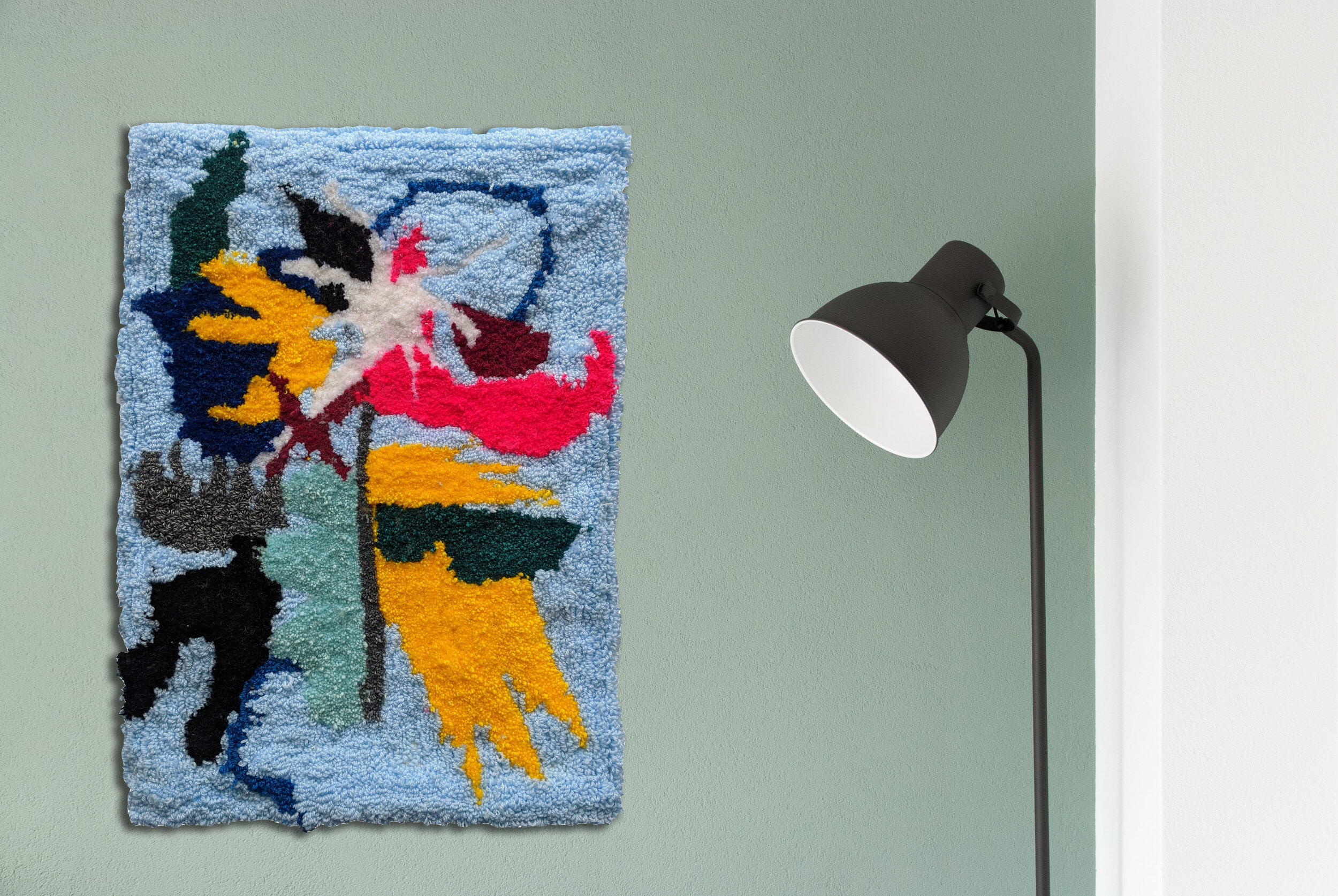
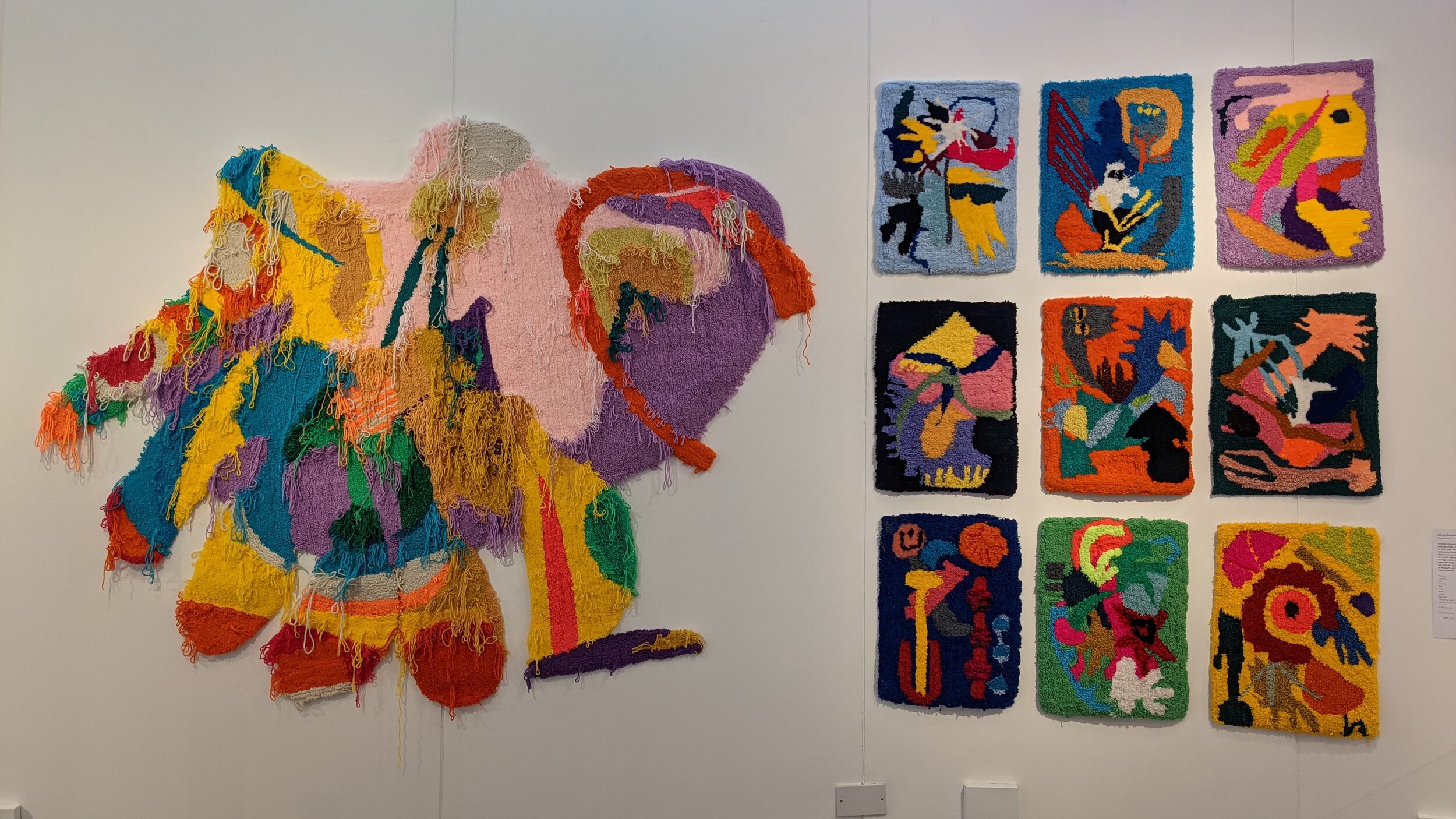

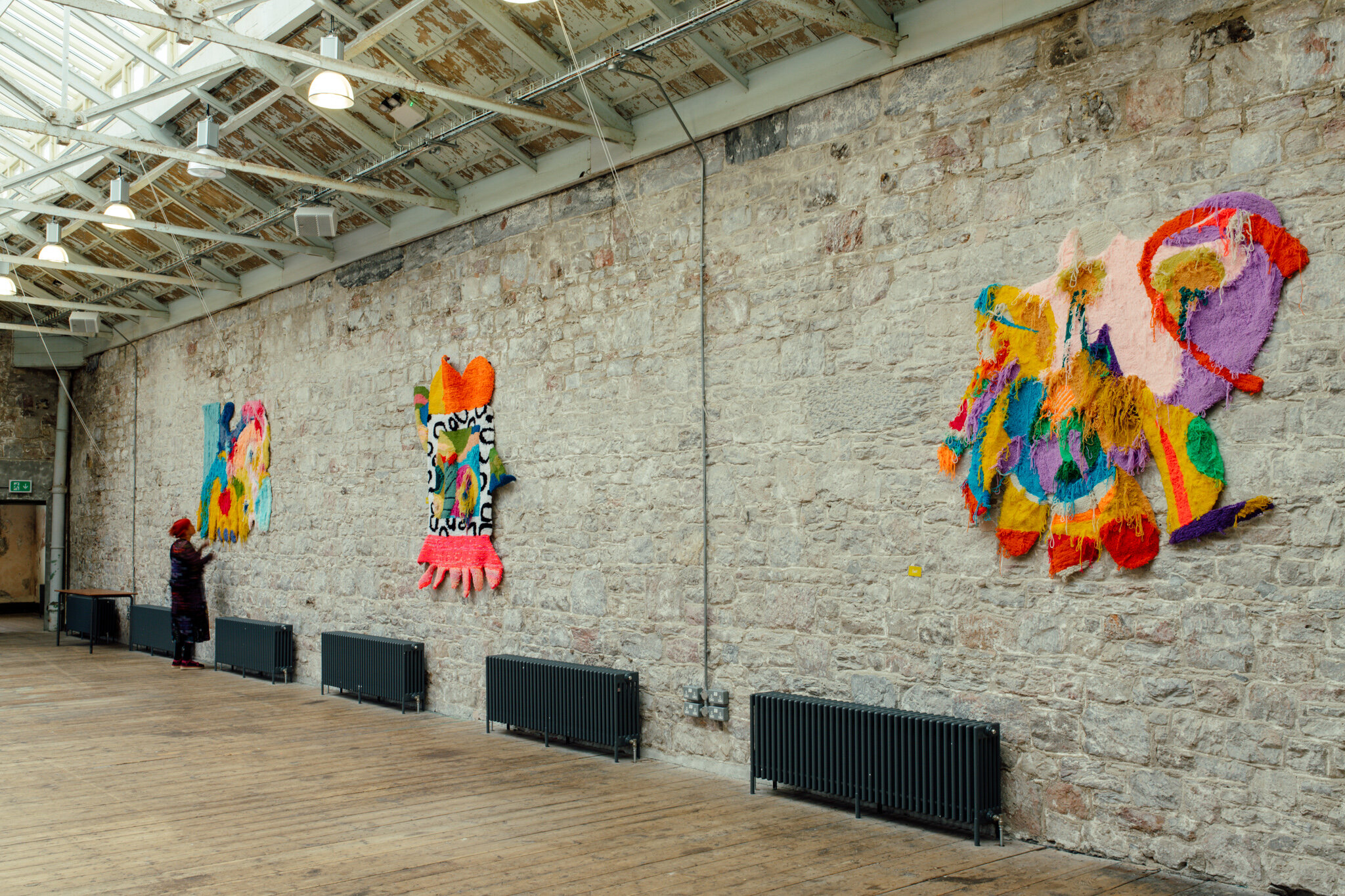
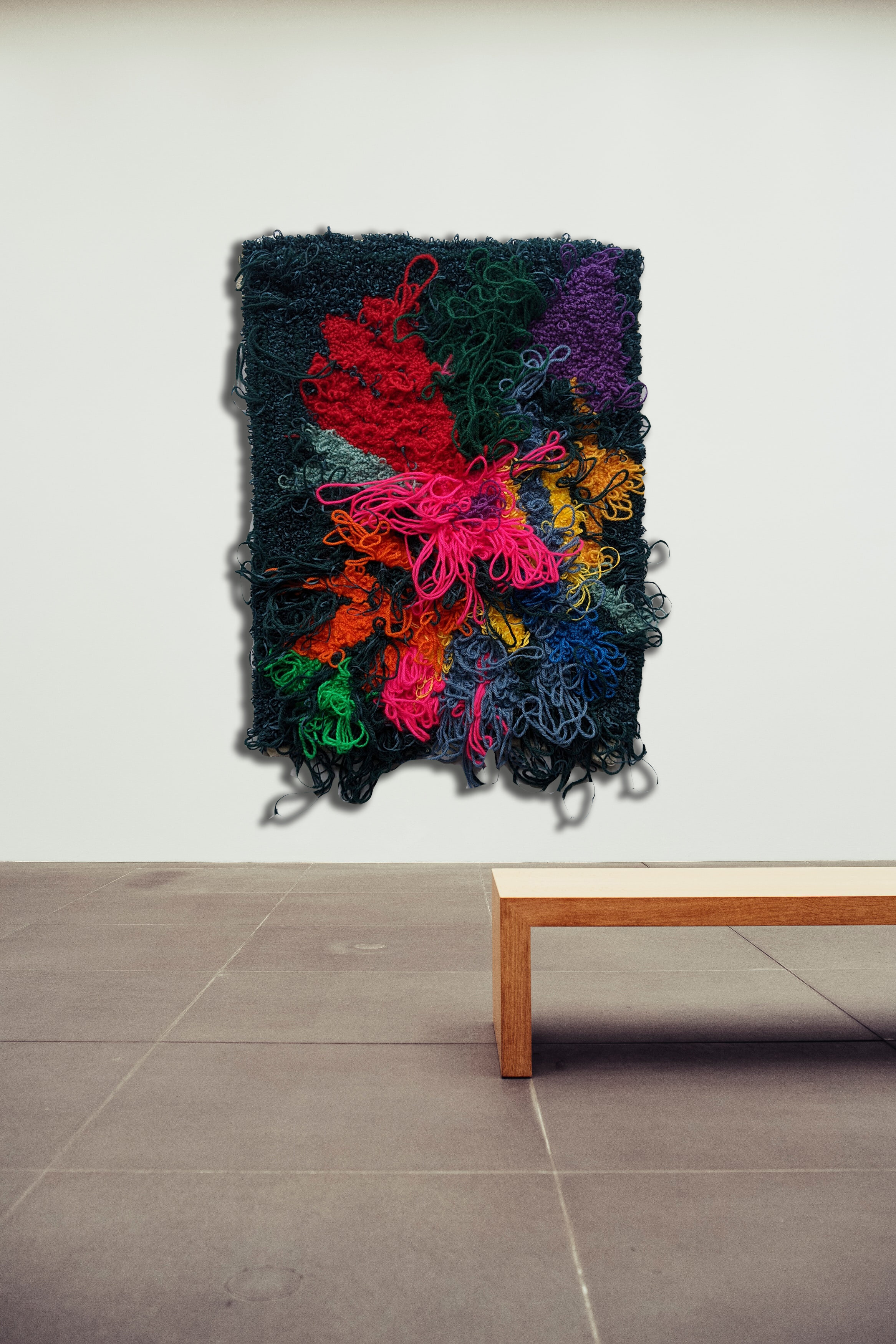
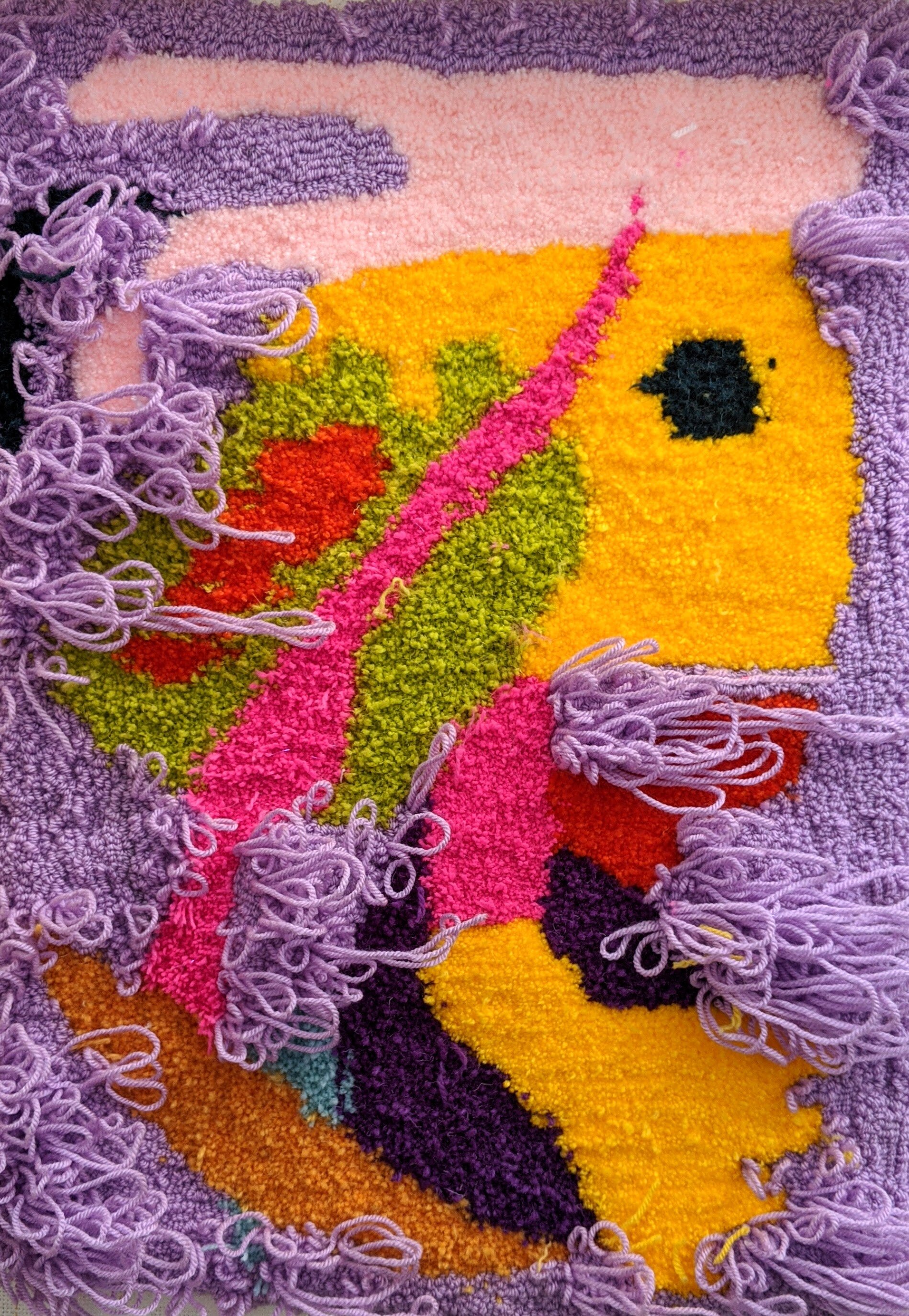
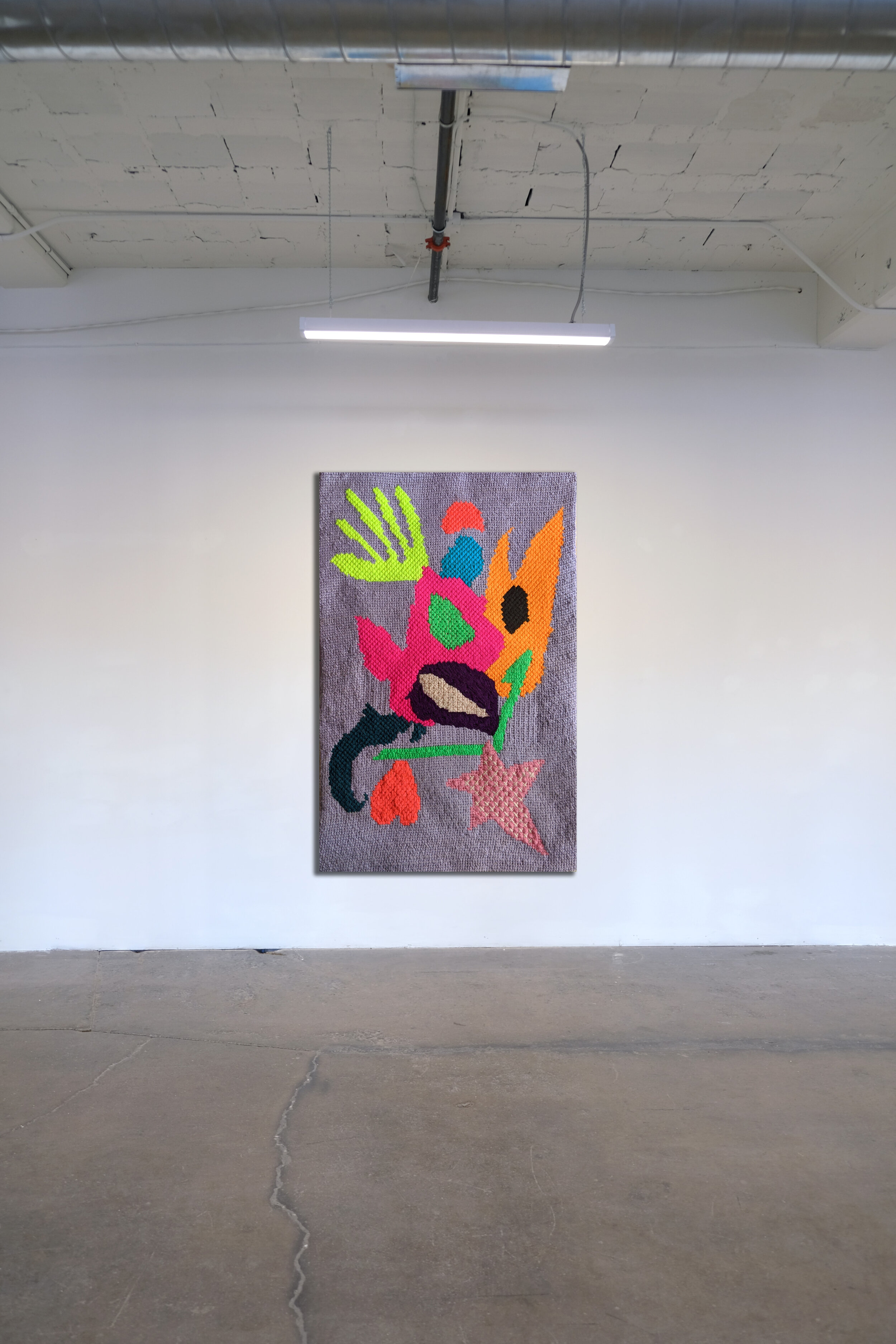
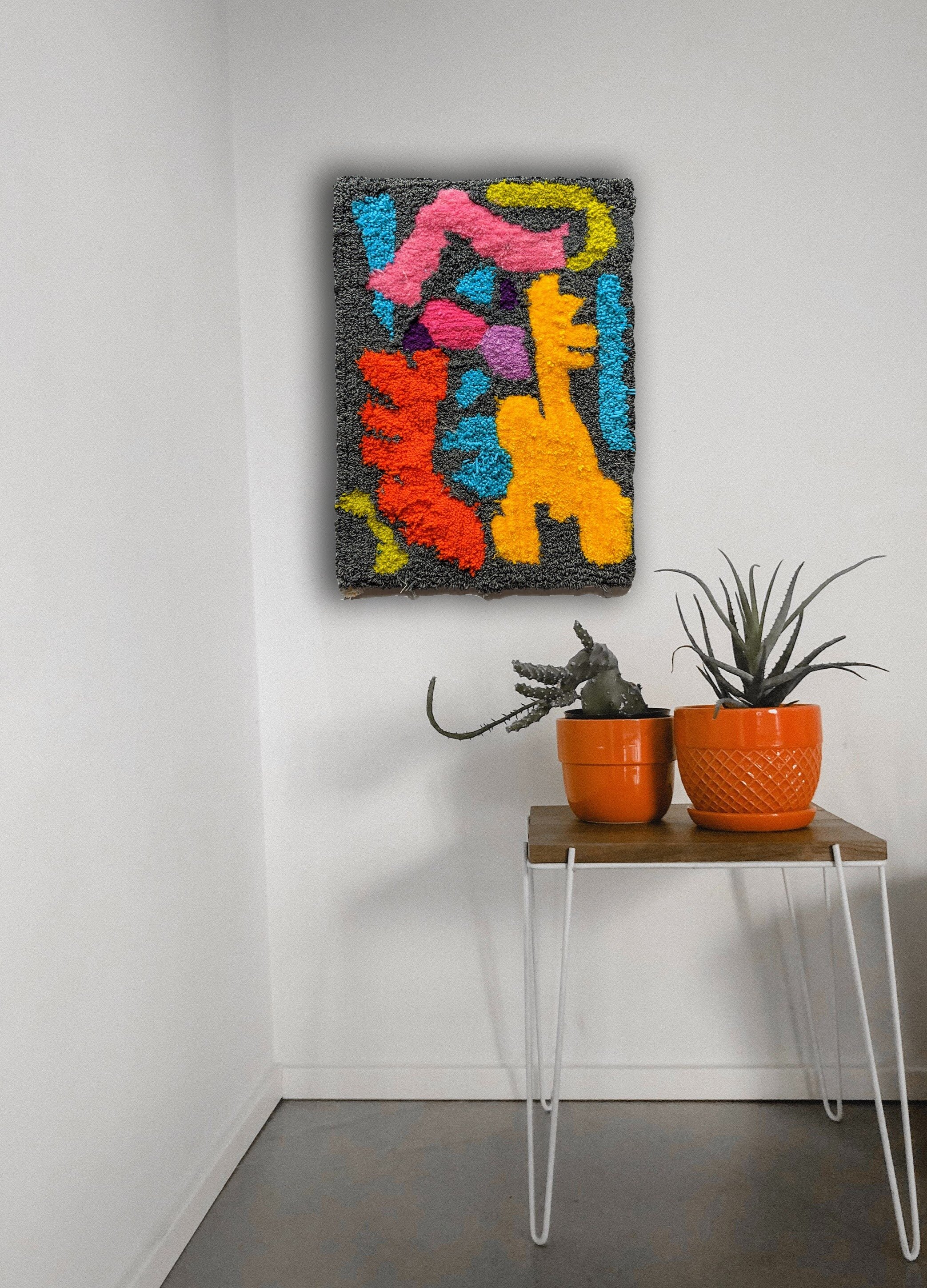
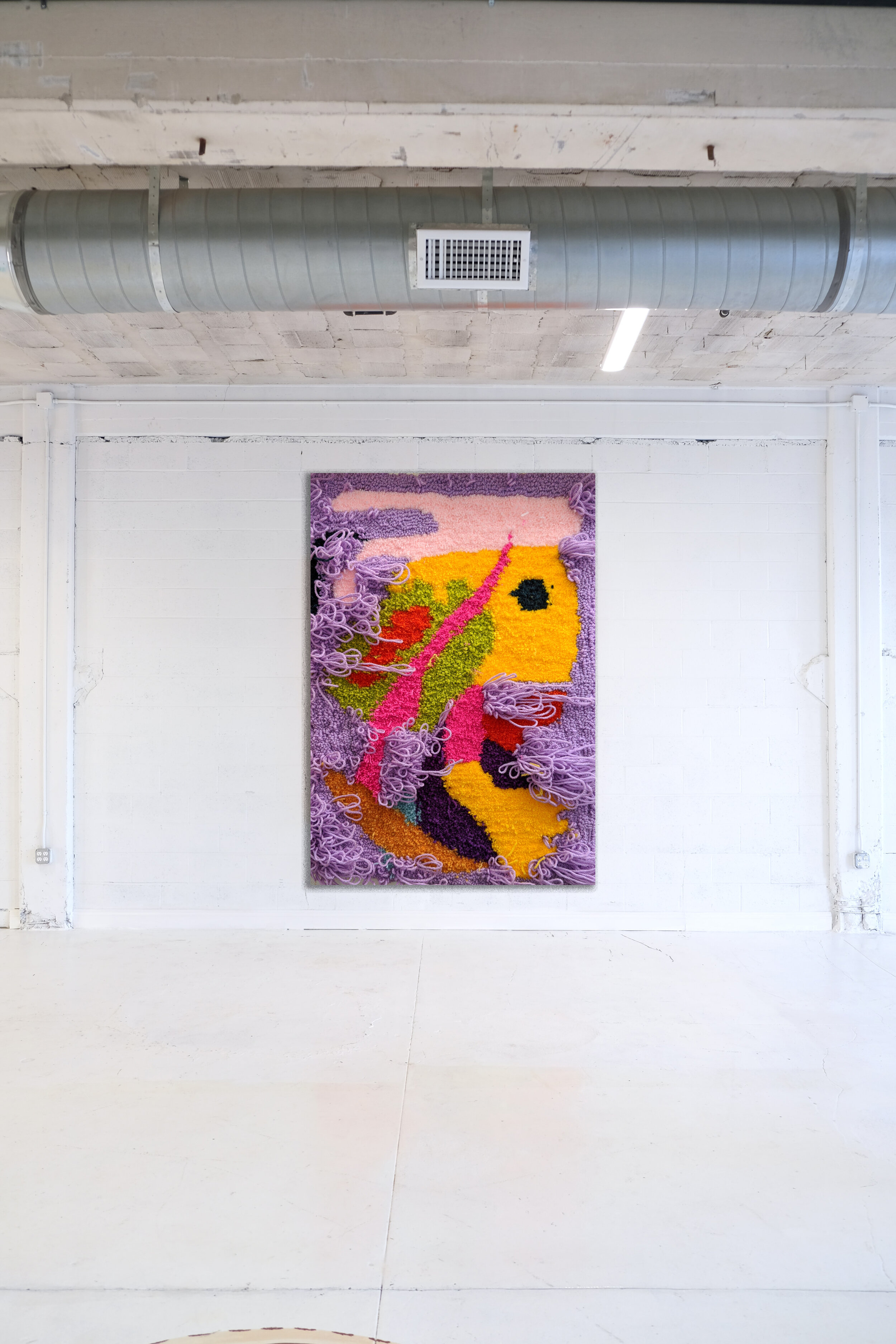
![Graphics Becky Dodman Design lala]-03.png](https://images.squarespace-cdn.com/content/v1/5a009478017db203cee93dfd/1611584502013-MJFFW0MB1ABMAWCBTNKX/Graphics+Becky+Dodman+Design+lala%5D-03.png)
